We were very happy with our trip thus far. We were also excited about what was ahead. We ended up deviating from my itinerary a bit due to lack of time, but it all turned out fine in the end.
We took the train from Jerusalem to the airport the morning of the 24th. We did that because we needed a car for the rest of our journey.
Our first stop on our road trip was to Ein Gedi Reserve. We absolutely did not have enough time there and would go back in a heartbeat if we are in Israel again. That said, we took a lovely short hike and saw four waterfalls. Now, that might not seem interesting but we were pretty much in a freakin’ desert, so four waterfalls seemed excessive. Here are some pics from our short hike:
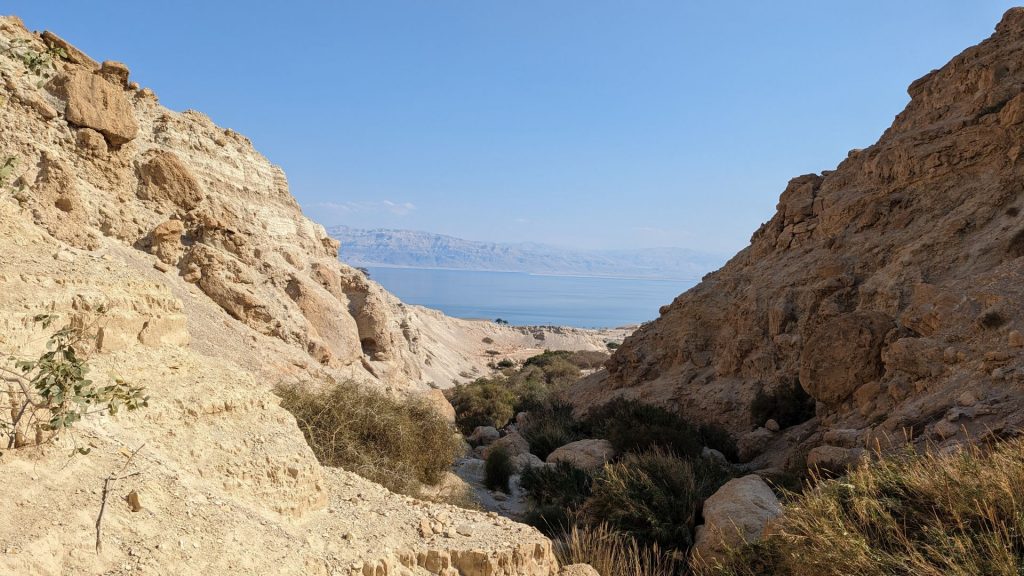
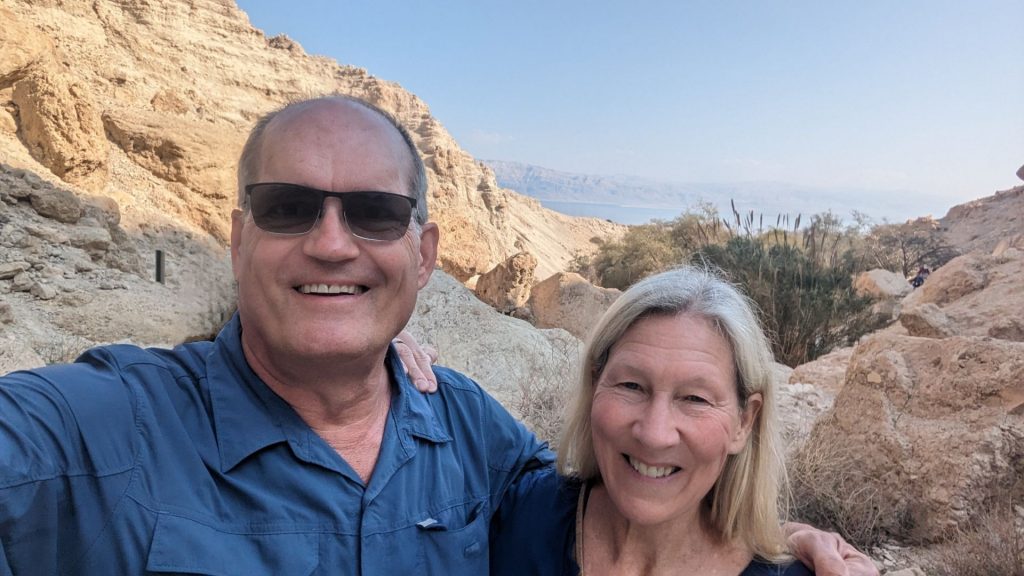
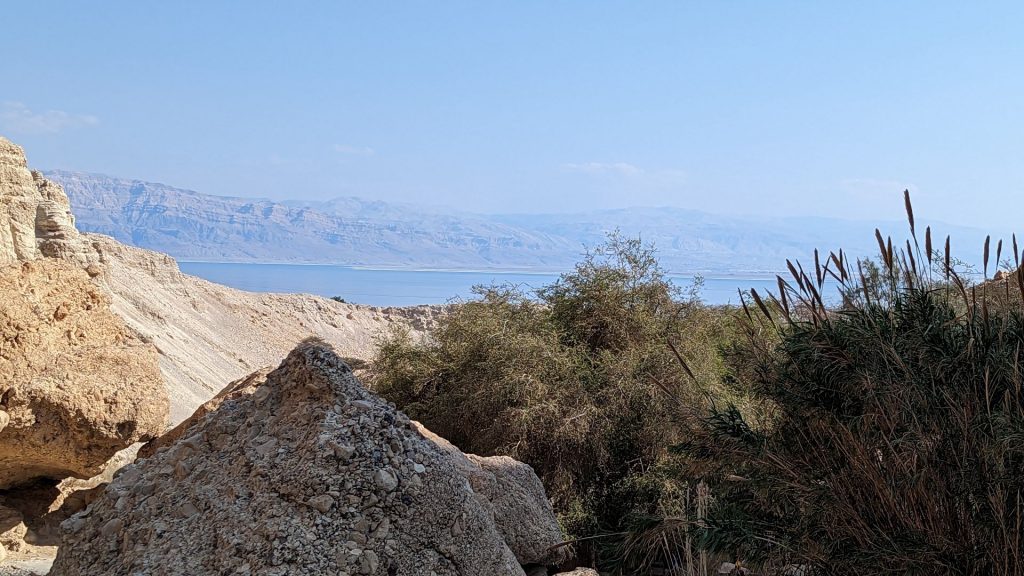
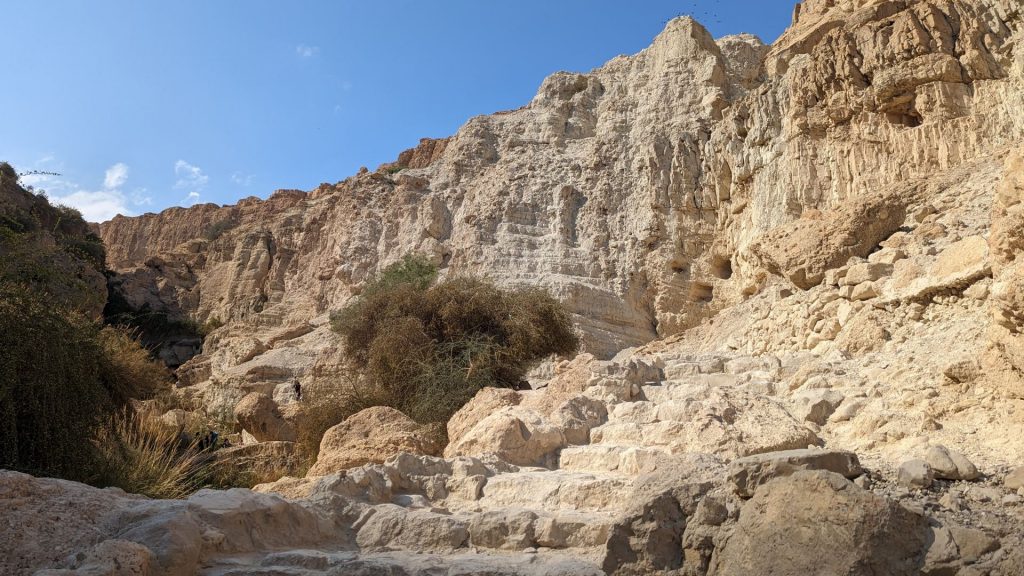
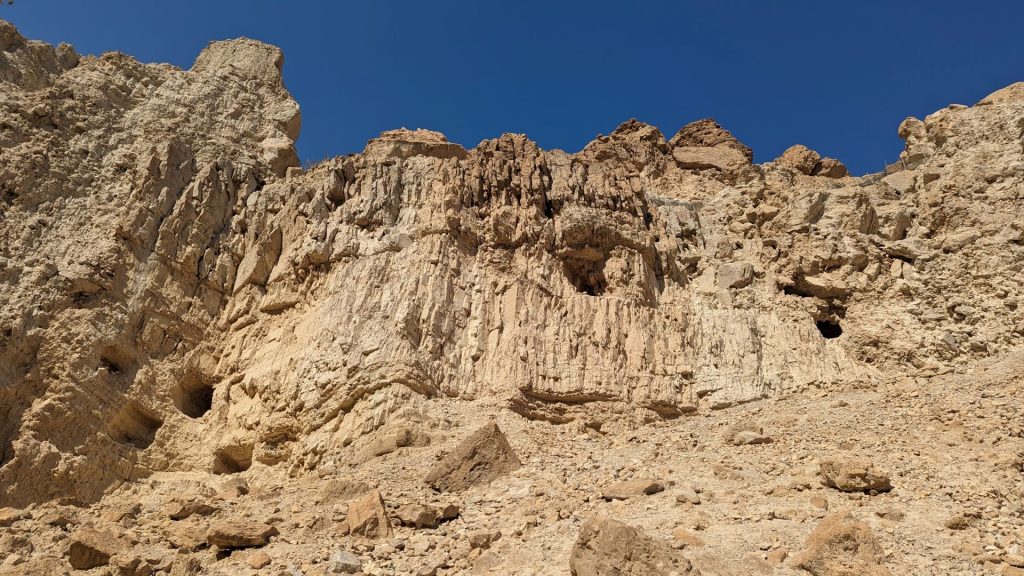
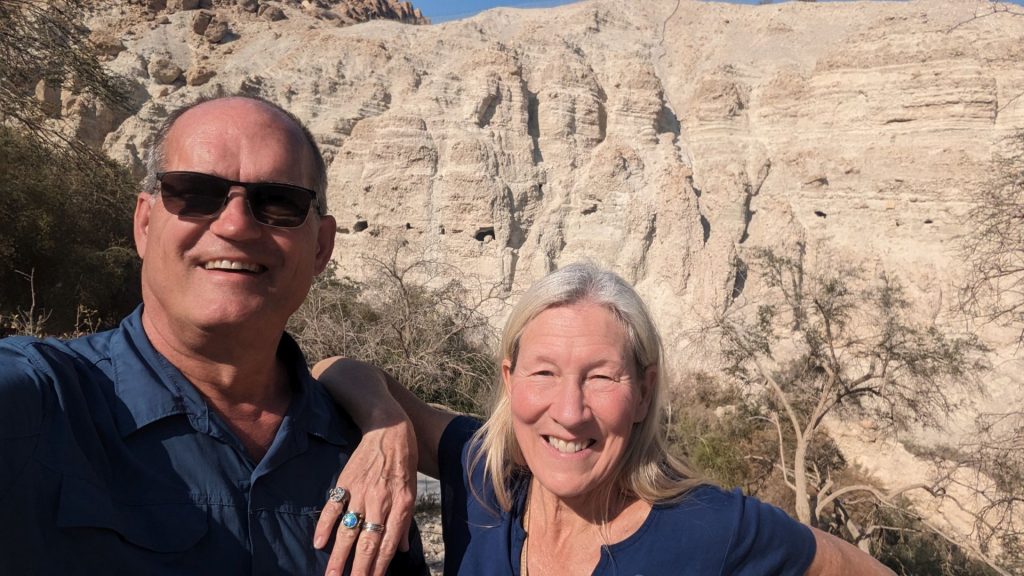
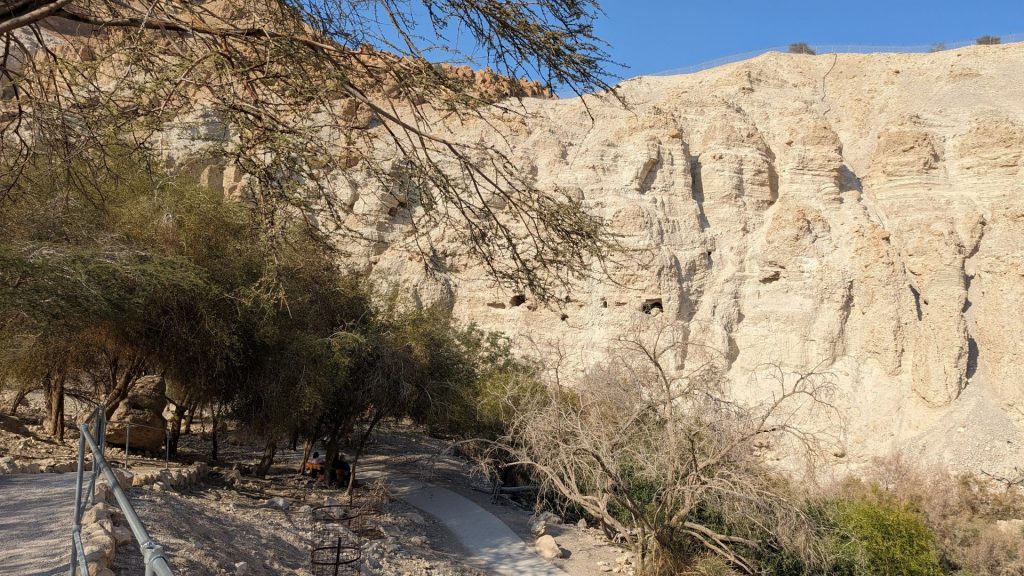
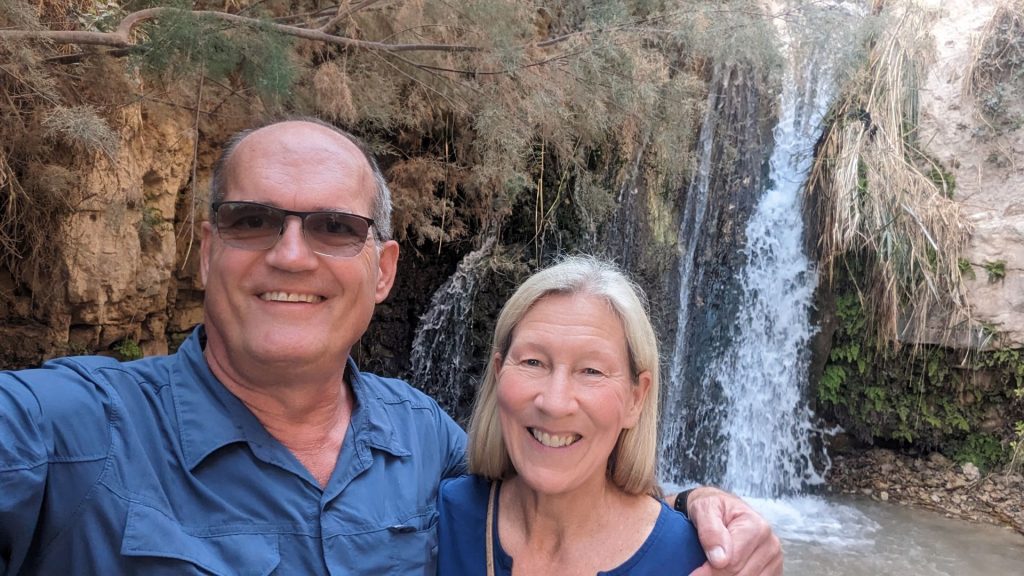
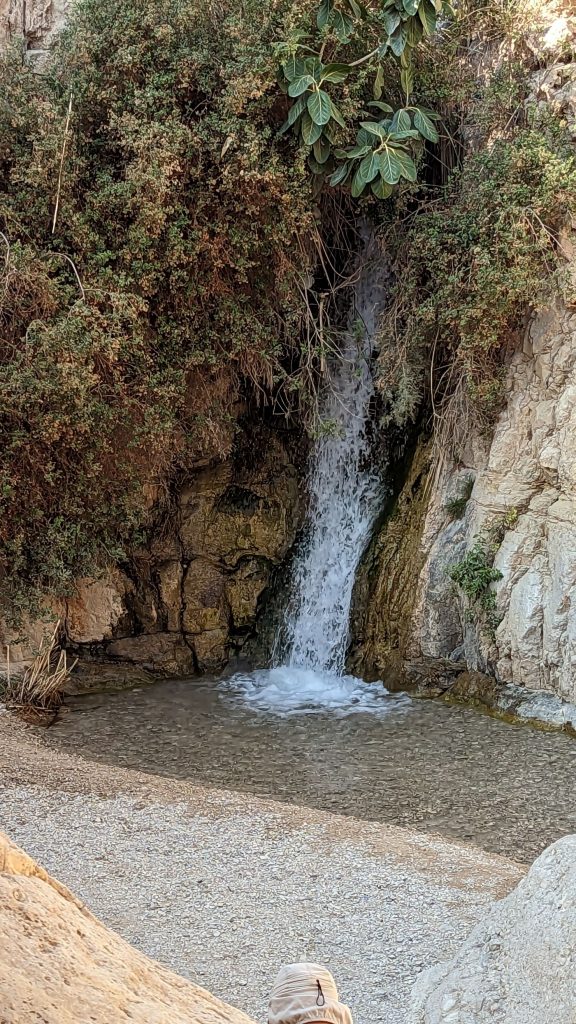
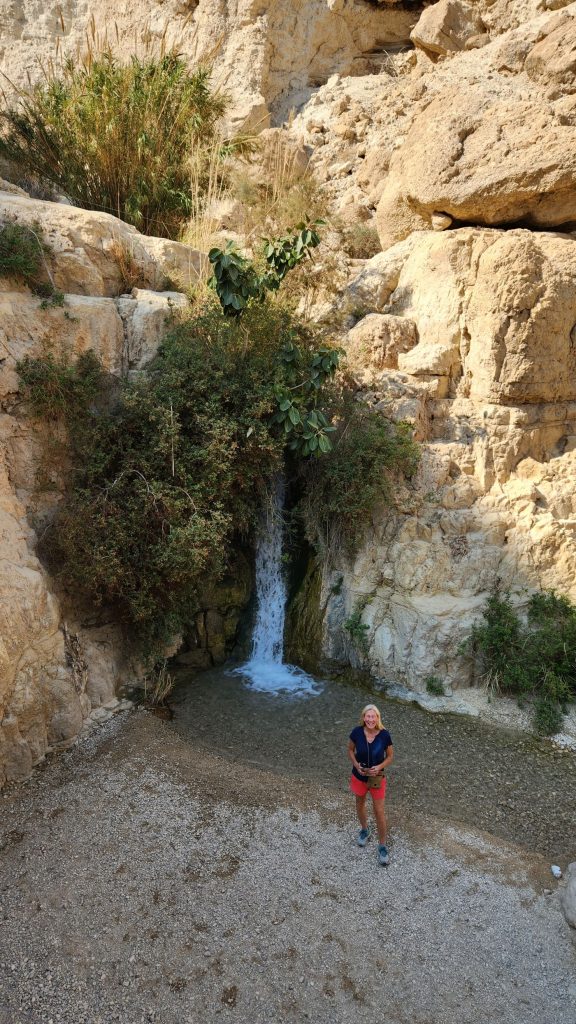
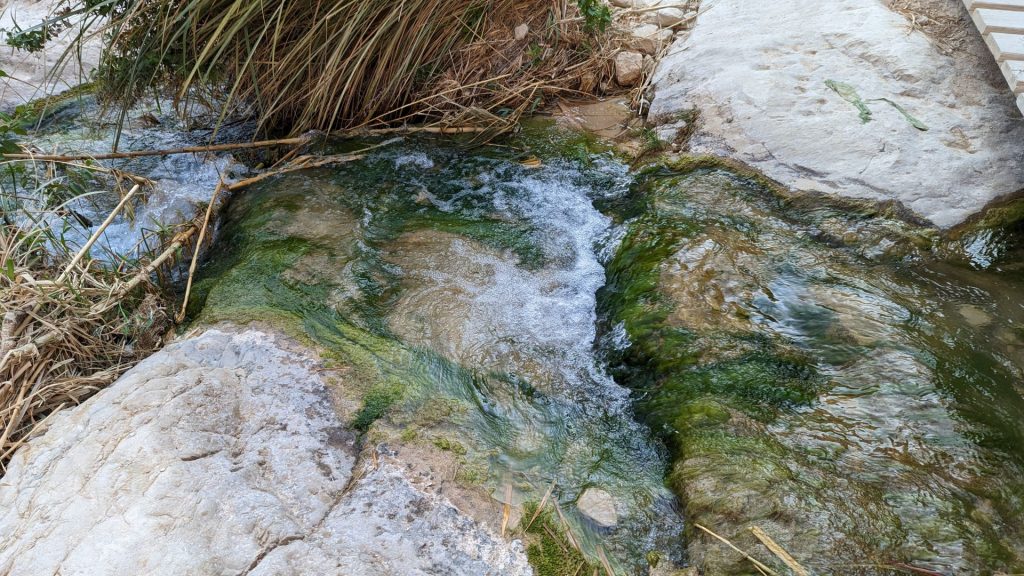
We next drove to Masada National Park but they’d closed early that day so we had to skip it. We had already planned to go to the Dead Sea, so we followed that plan. Not much to say except it was absolutely beautiful and we floated!
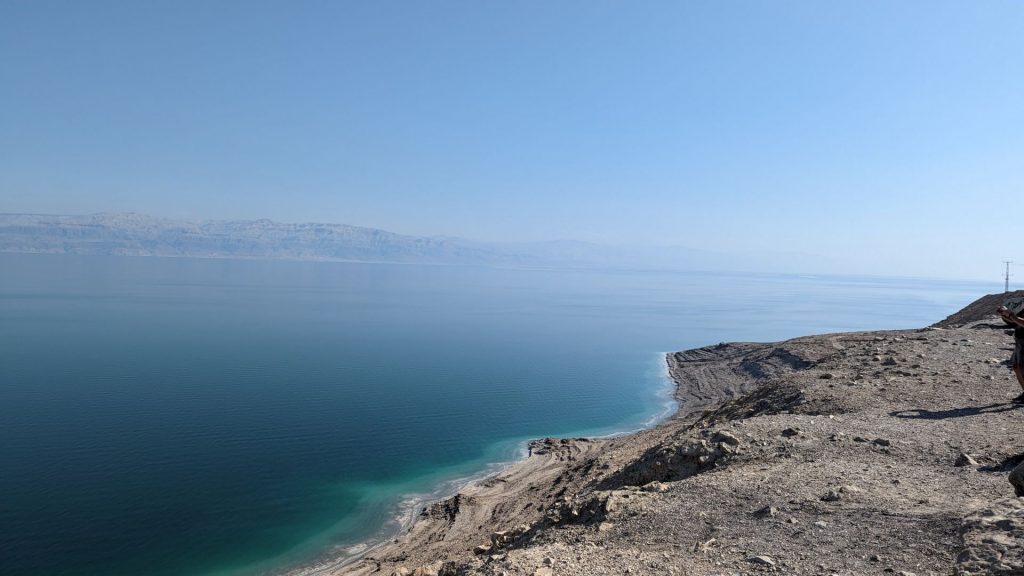
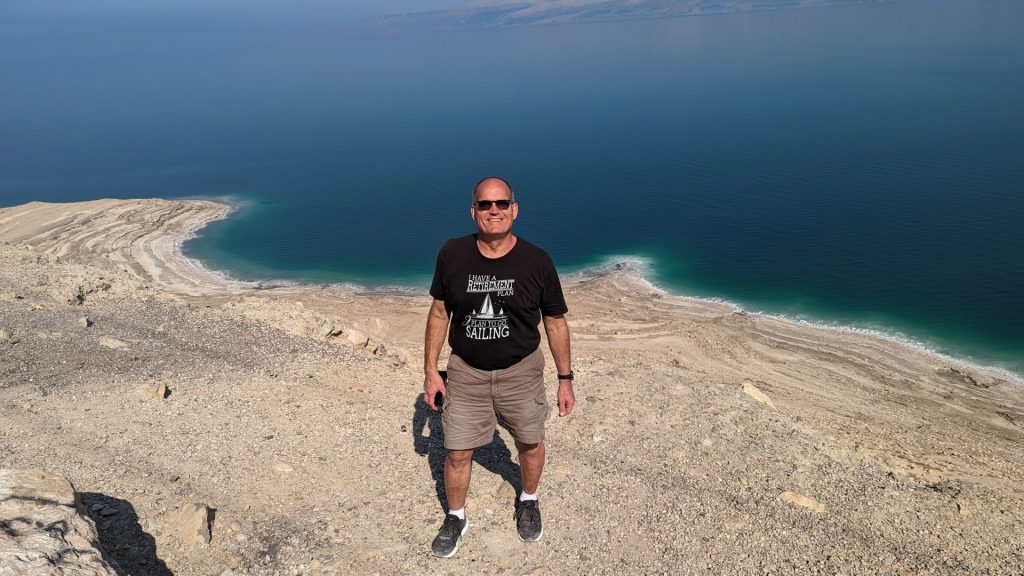
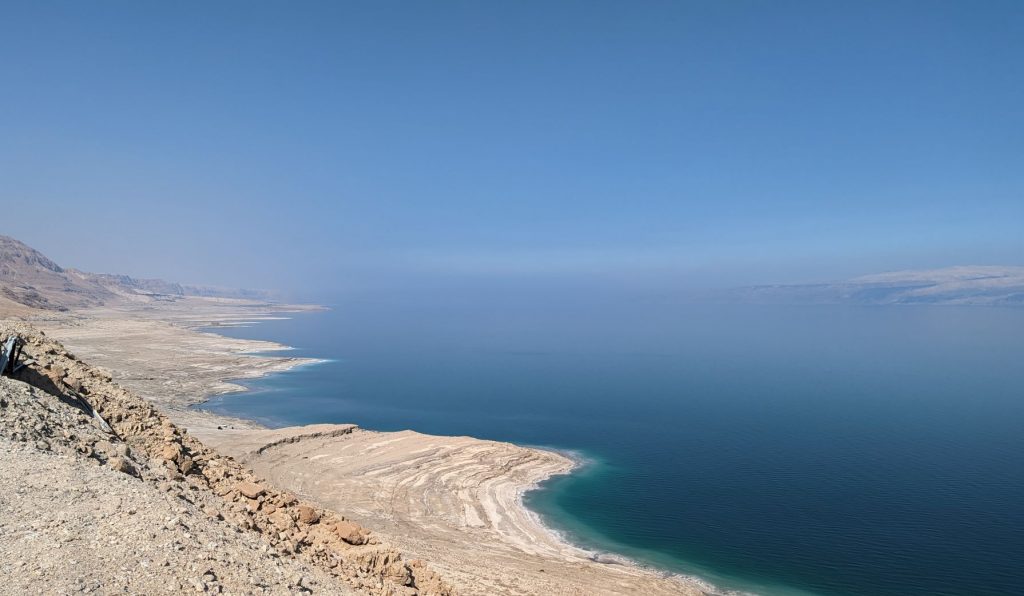
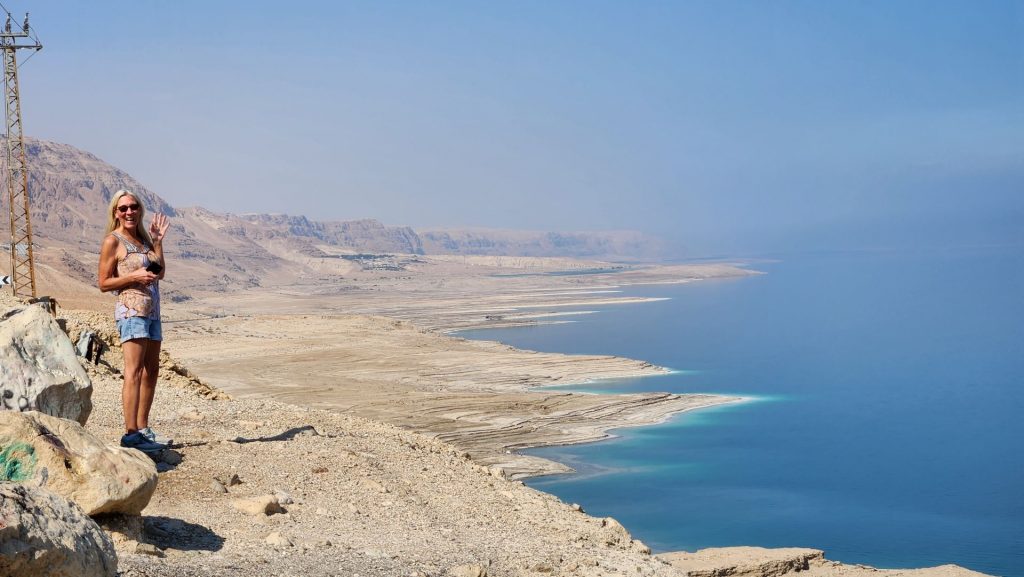
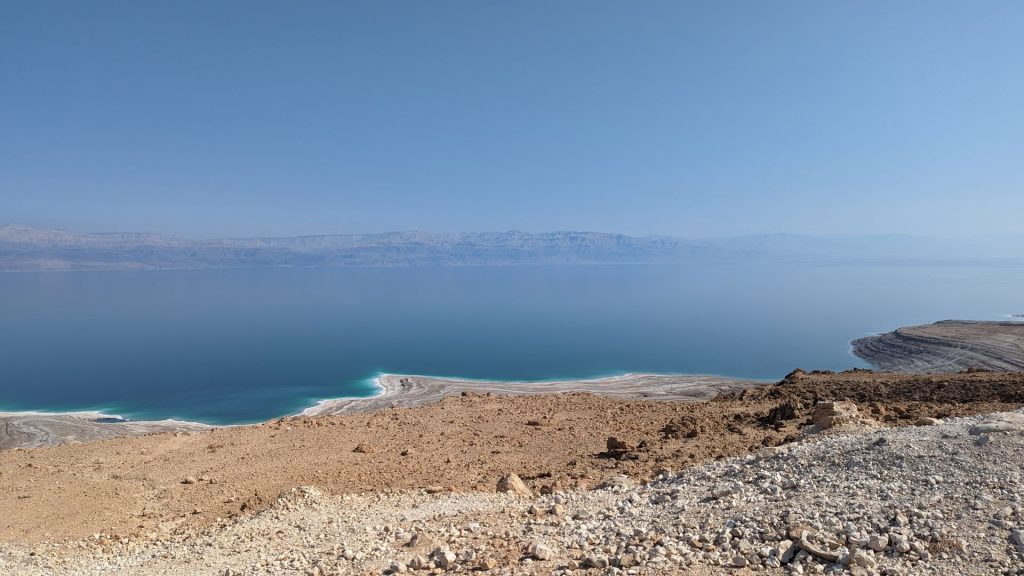
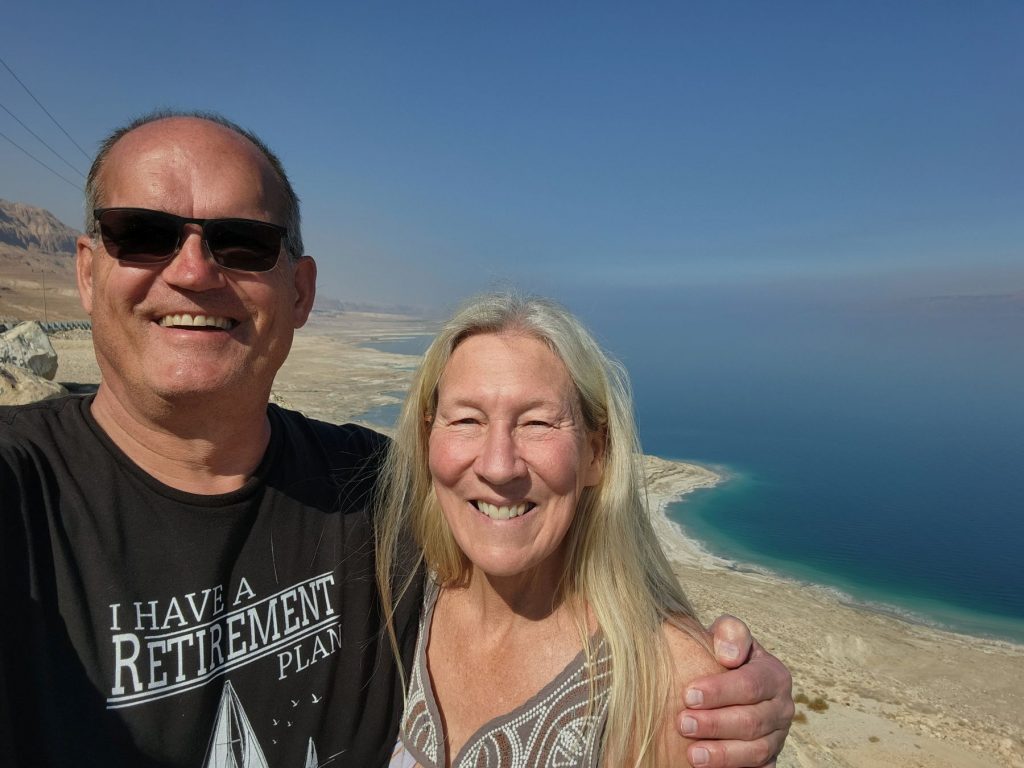
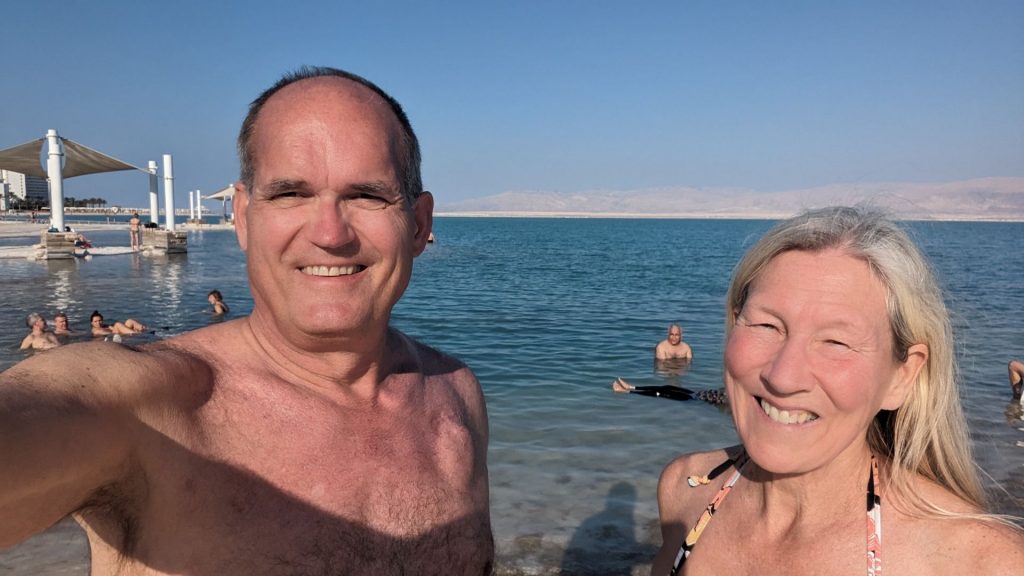
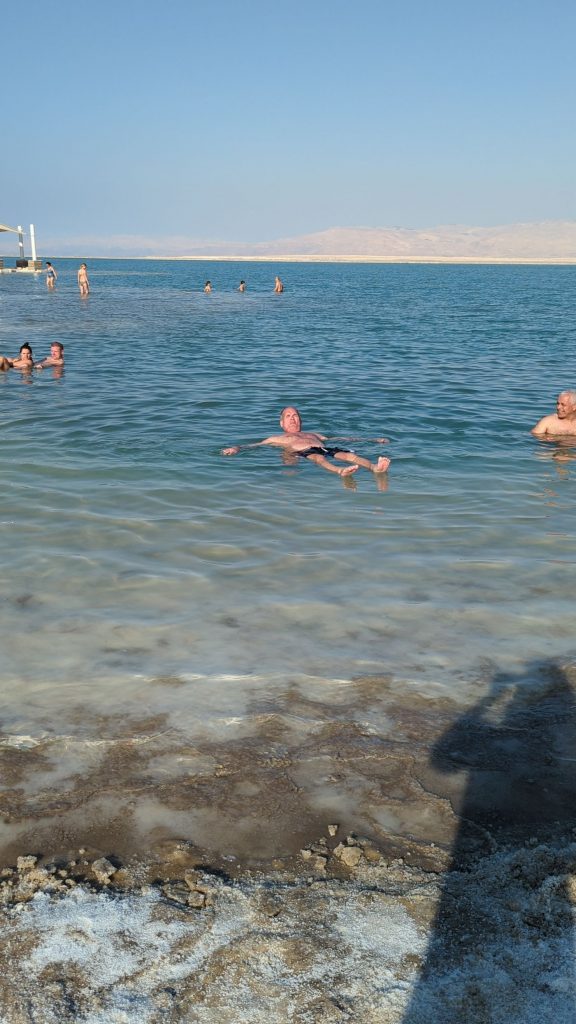
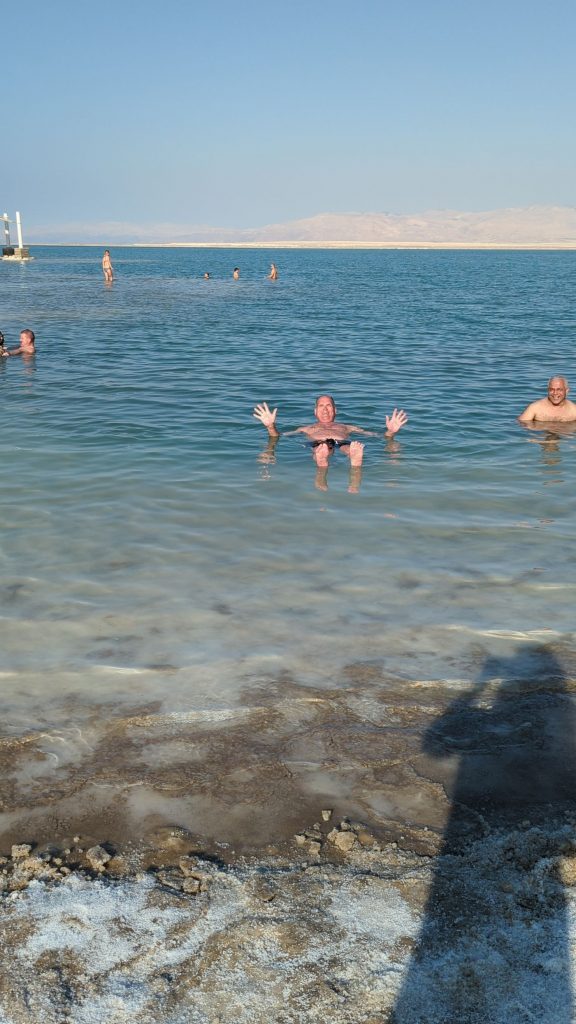
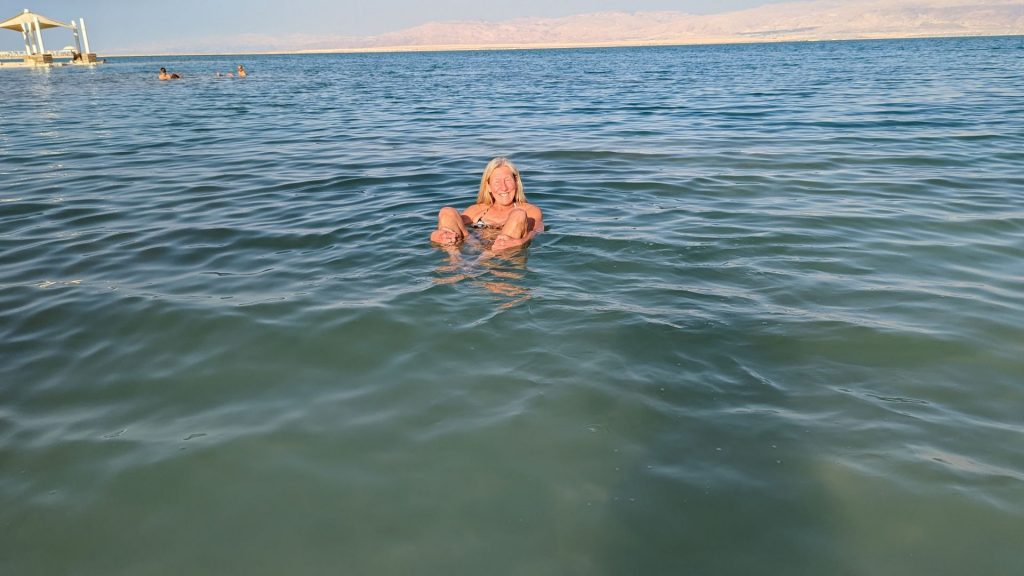
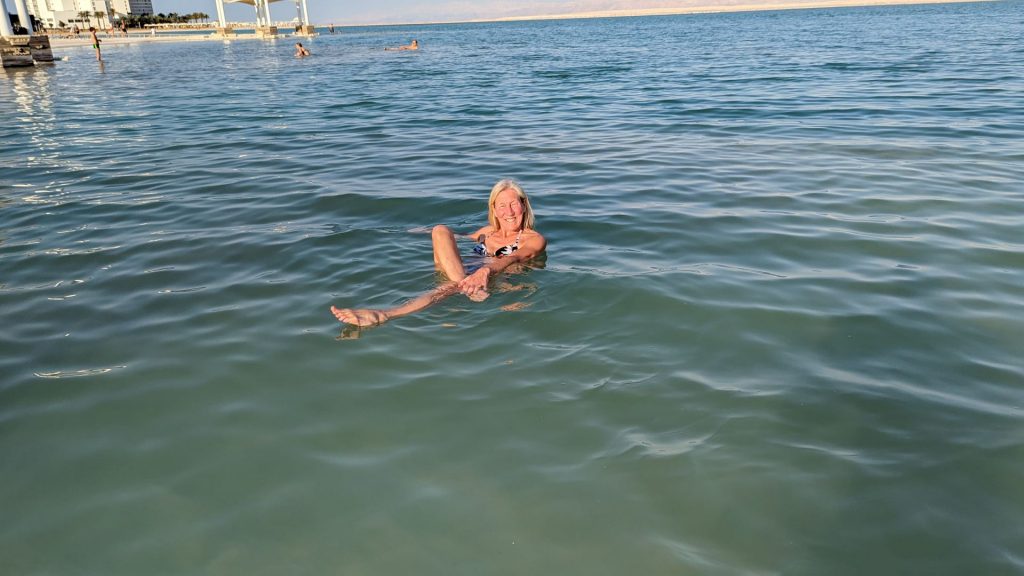
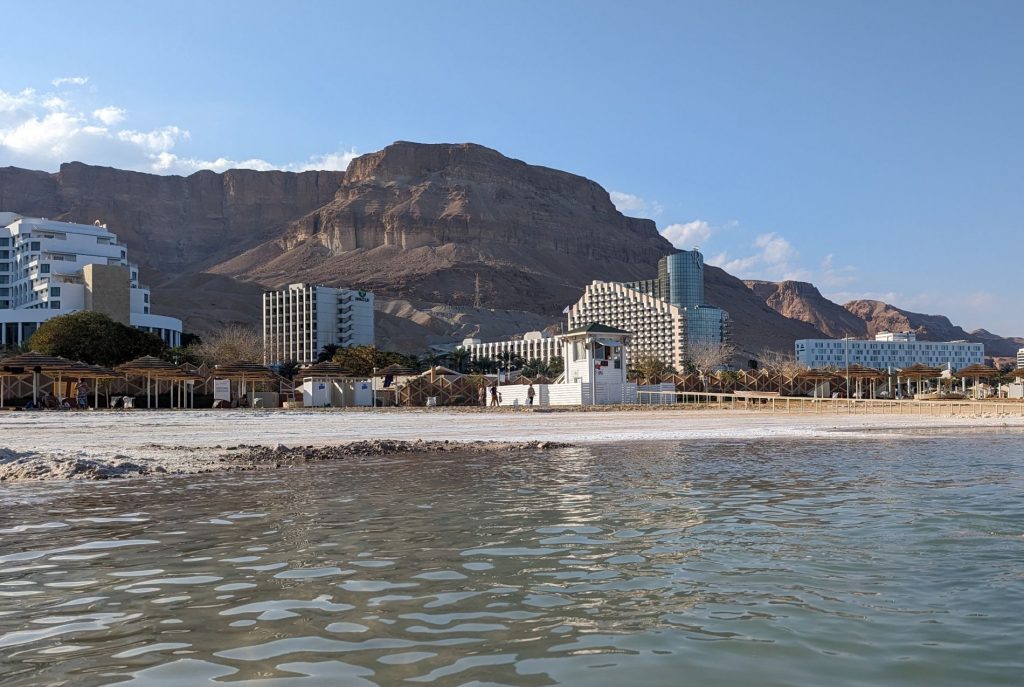
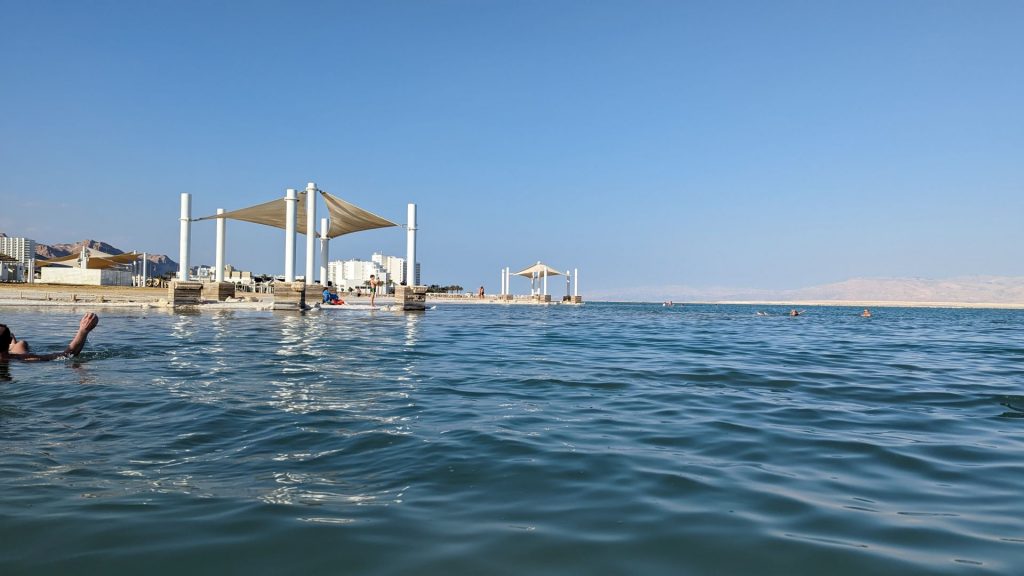
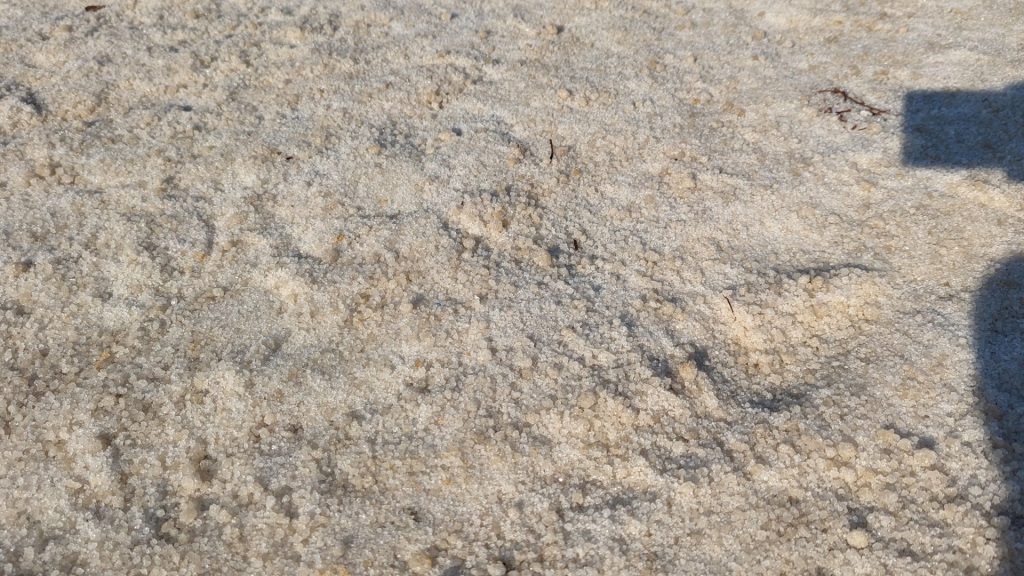
After our float in/on the Dead Sea, we drove to our hotel. It was quite the drive! Beautiful scenery, crazy drivers, winding roads, insane motorcyclists. . . everything a person could want!
At breakfast the next morning (the 25th), we met a couple who were from Israel. They recommended the route we should take to get to our next destination, the Sea of Galilee. It wasn’t what we had planned, but we took their advice.
The best part of all of this is that the route took us by Masada again. We discussed whether we should stop and decided we would. That was the best decision! We loved Masada. It was our absolute, hands-down favorite.
If you don’t know the story of Masada, it would be worth doing some research. As for its location, it is an ancient fortification in the Southern District of Israel situated on top of an isolated rock plateau. It is located on the eastern edge of the Judaean Desert, overlooking the Dead Sea, 20 km (12 mi) east of Arad (where our hotel was, by the way). It was built as a palace complex, in the classic style of the early Roman Empire, by Herod the Great, king of Judea reigned in the years 37-4 B.C. The camps, fortifications and ramp that encircle the monument constitute the most complete Roman siege works surviving to the present day.
The short version of the story – the one that appears to be true – is that the Romans lay seize to the 960 Jewish people living in Masada and killed them. Masada became a symbol for a heroic ‘last stand’ for the State of Israel and played a major role for Israel in forging national identity. To Israel, it symbolized the courage of the warriors of Masada, the strength they showed when they were able to keep hold of Masada for almost three years, and their choice of death over slavery in their struggle against an aggressive empire.
There are two ways to get to the top from the visitor’s center. One is by cable car. The other is by hiking the Snake Path, which gains around 300 m (980 ft) in elevation. Michael took the first route because he has heart failure. I took the second because I do not. No matter how you get there, the scenery is fantastic. As per usual, I took a lot of pictures on the way up. I am not sure these are in order of the route, but I hope you get the picture (pun intended).
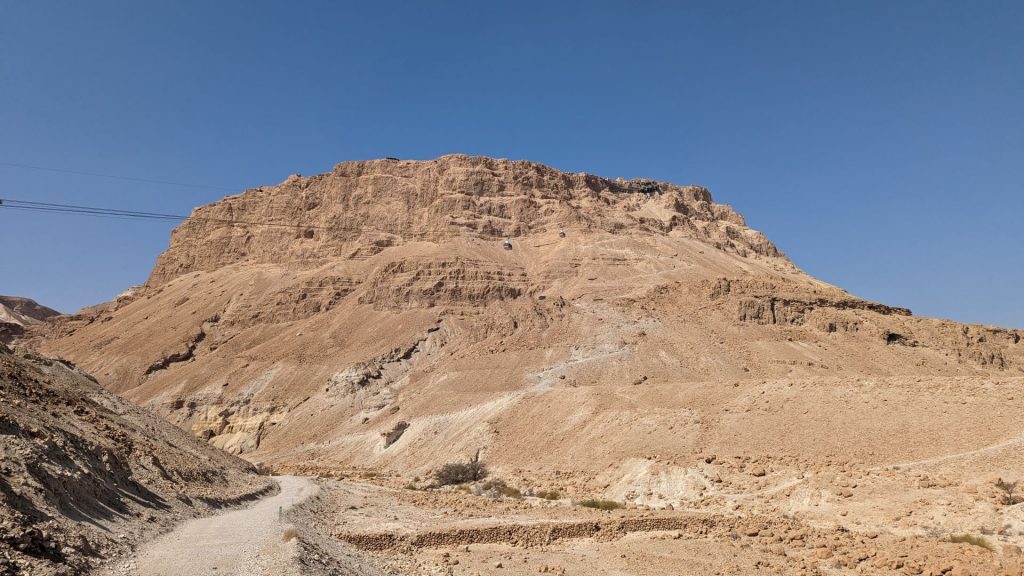
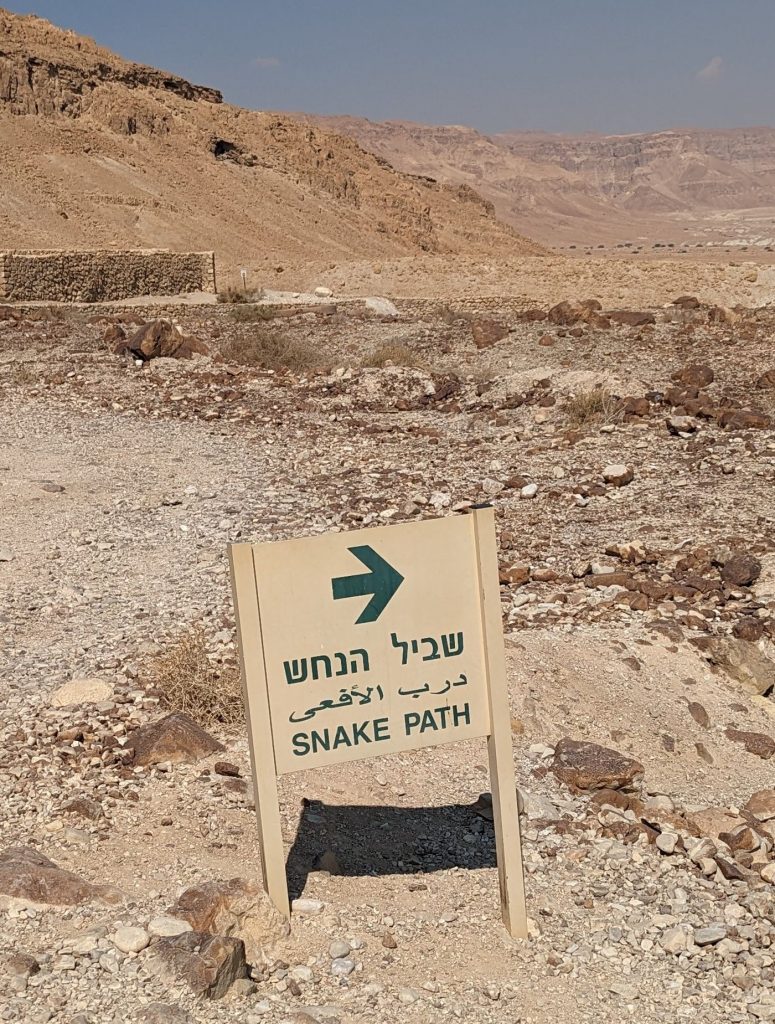
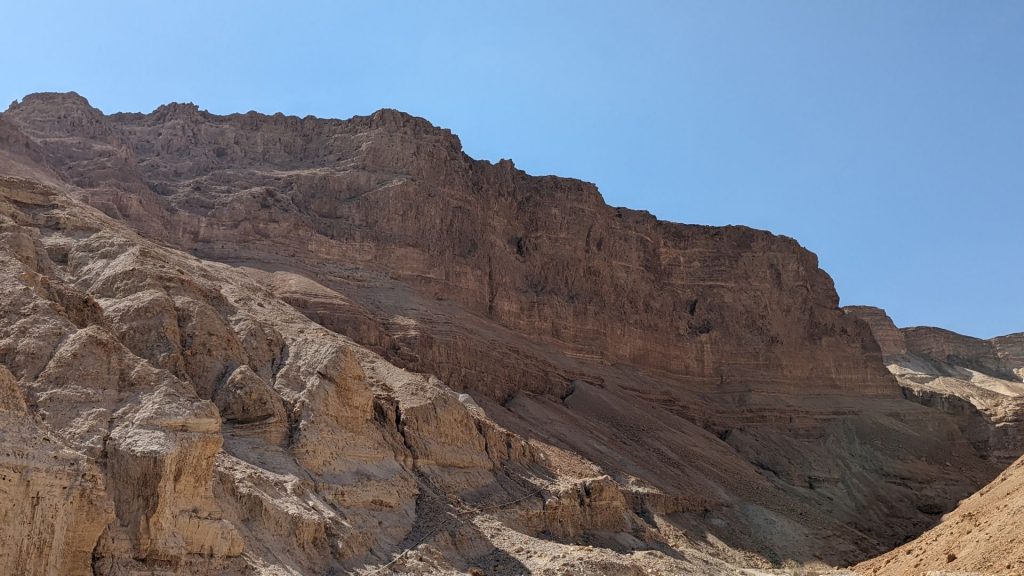
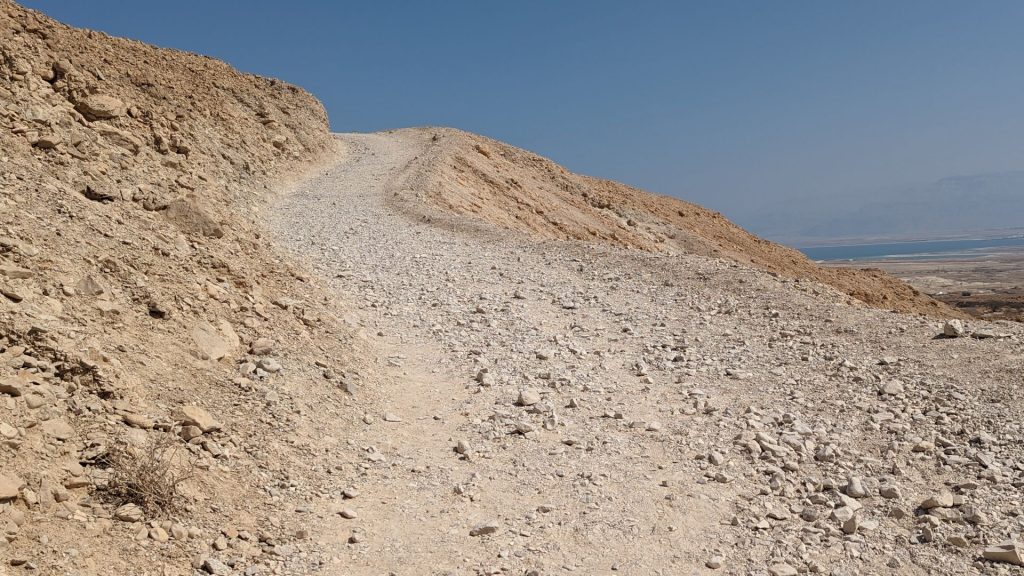
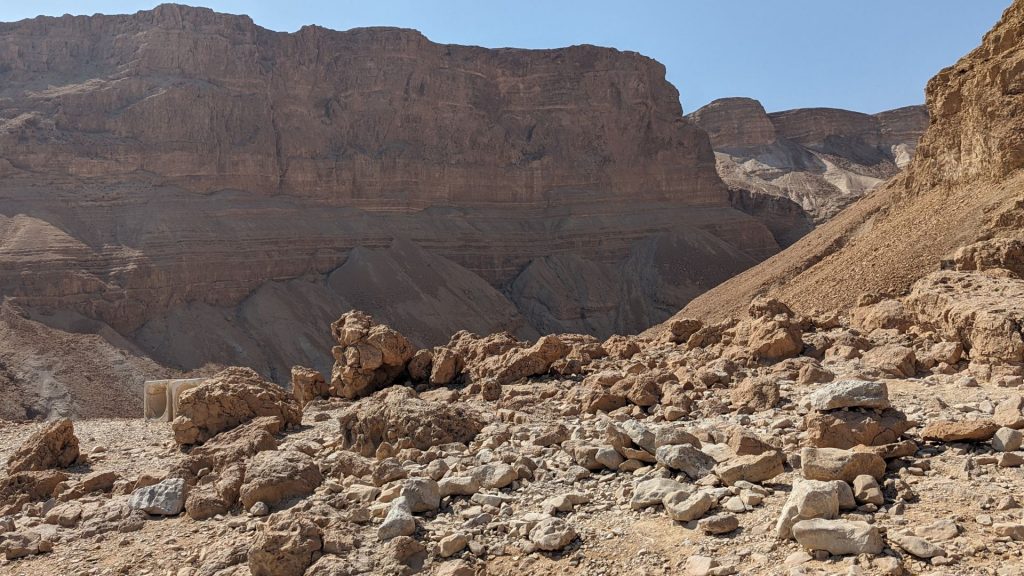
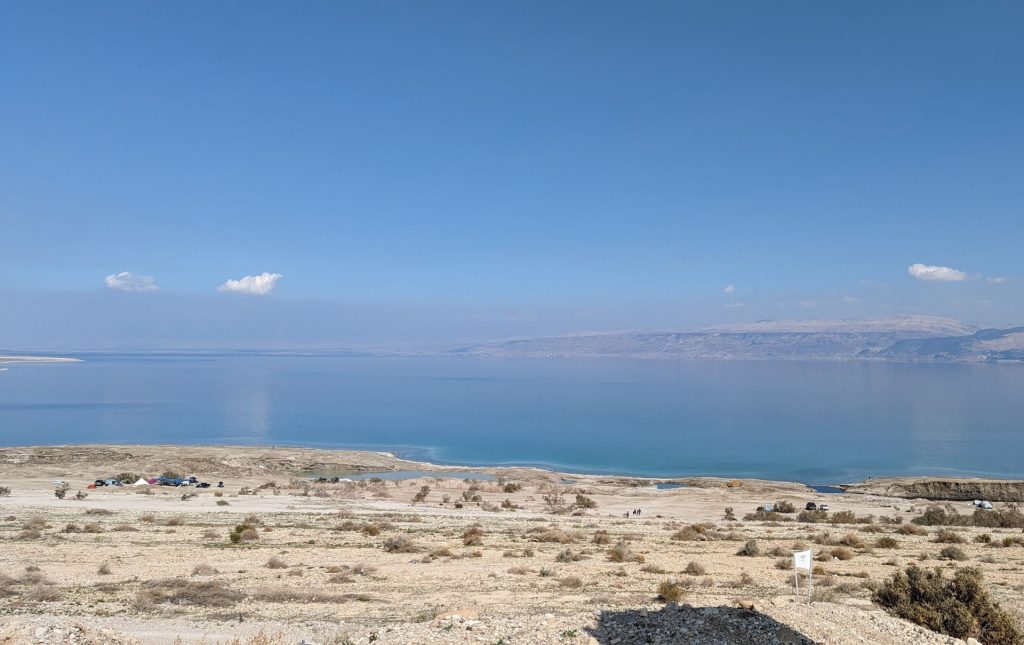
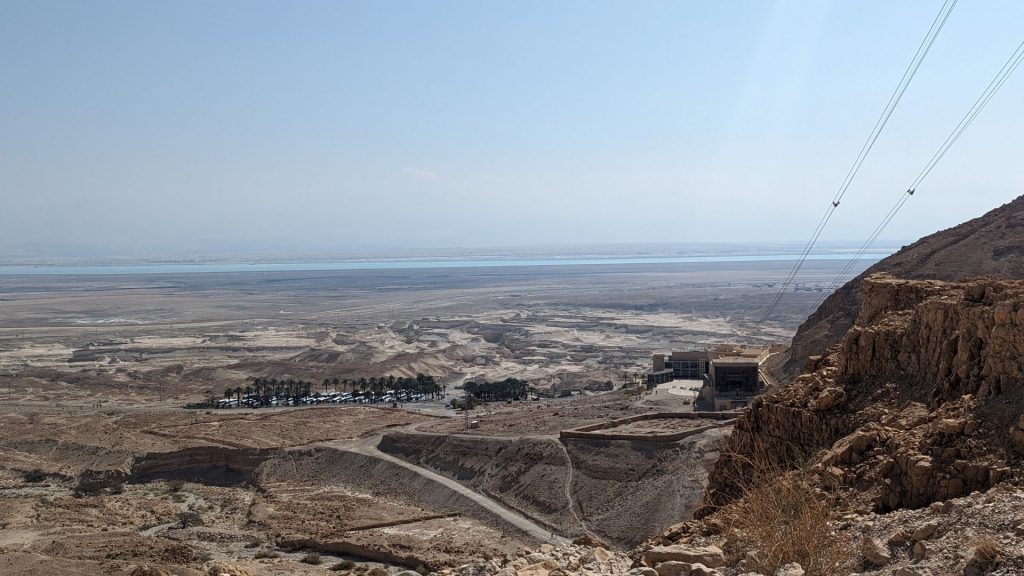
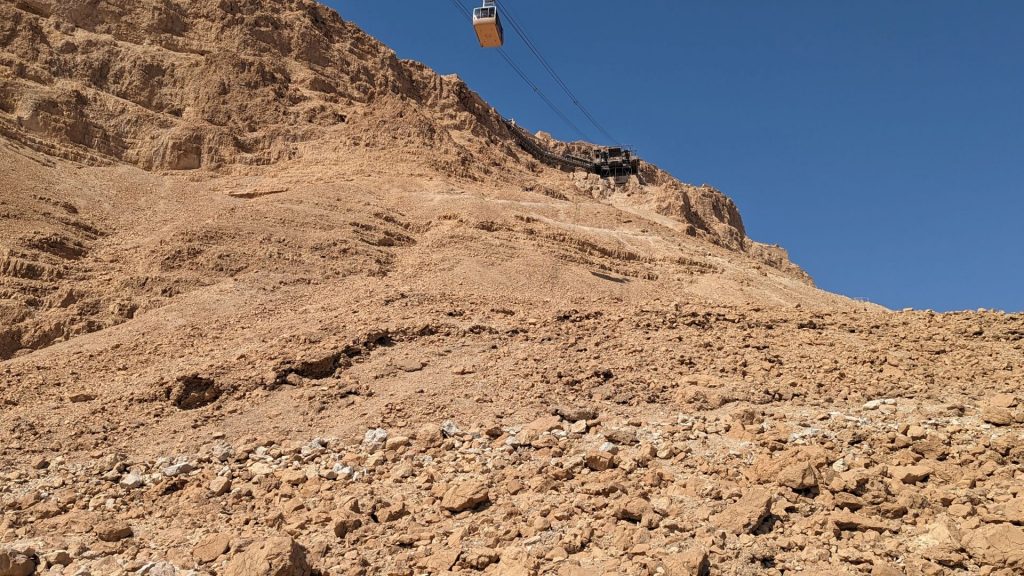
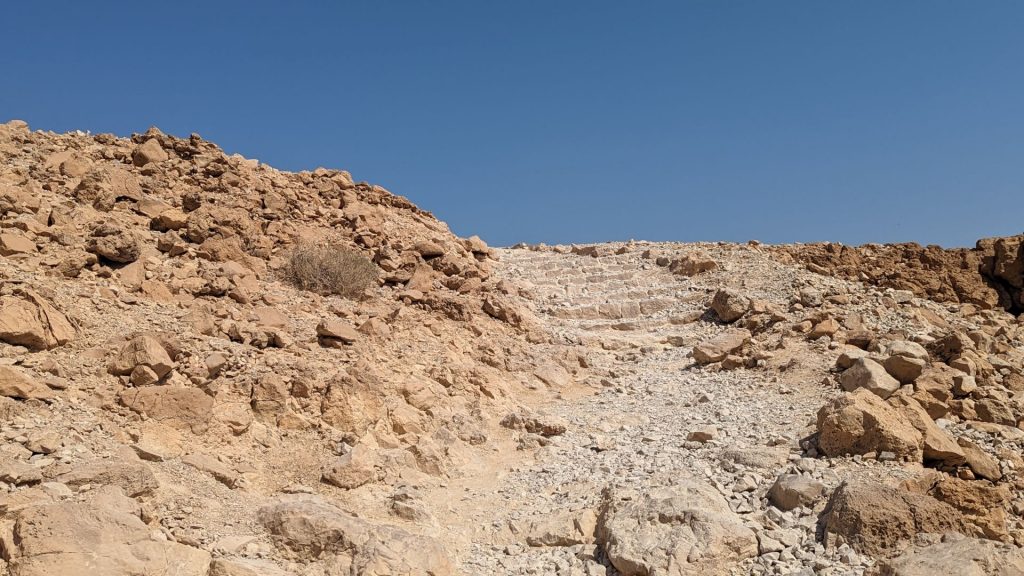
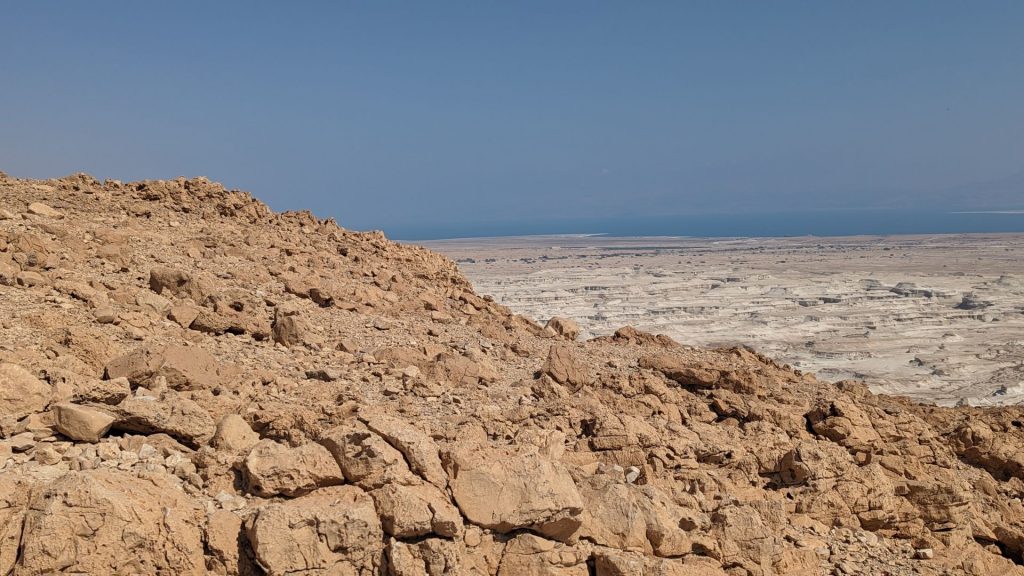
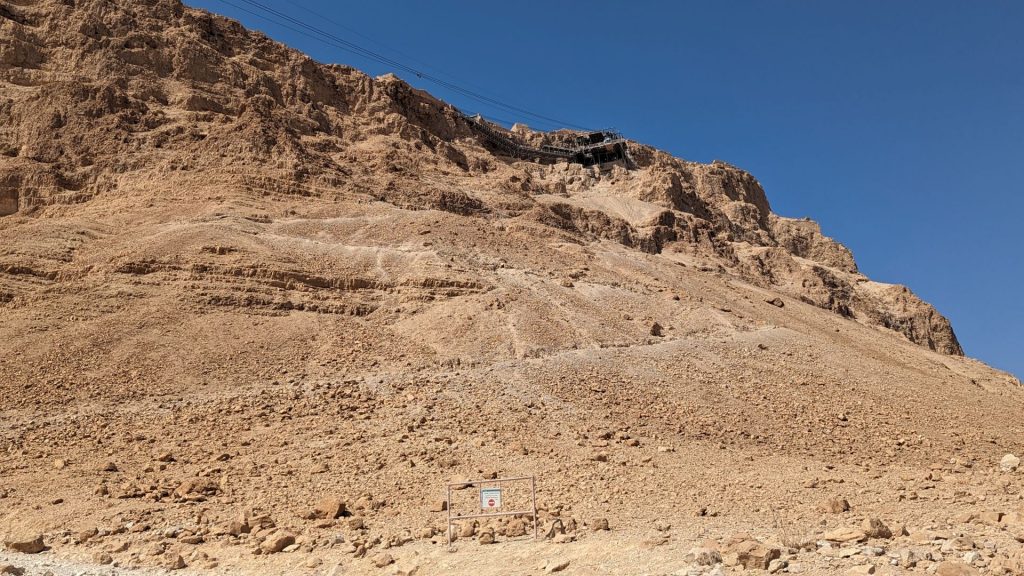
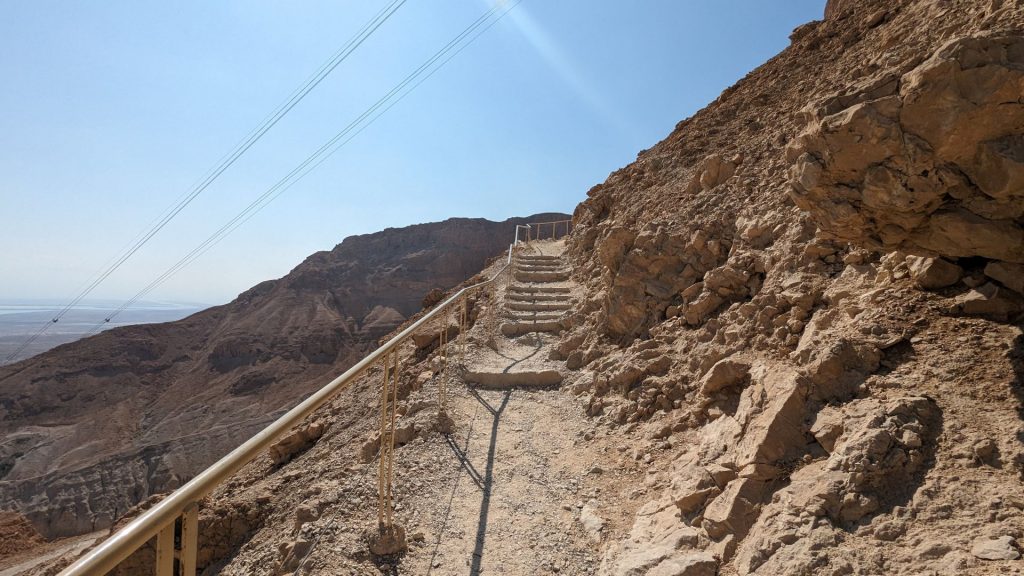
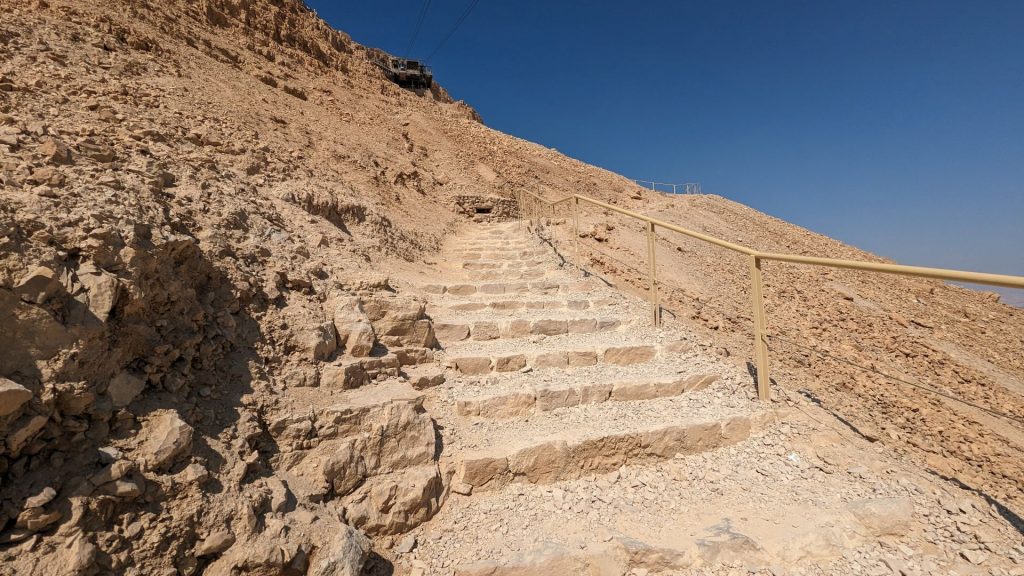
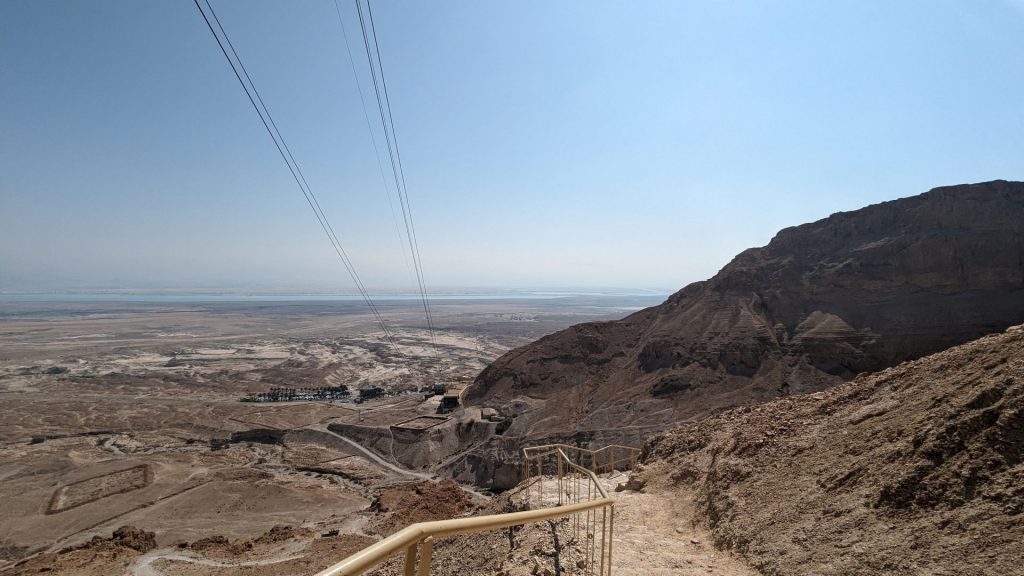
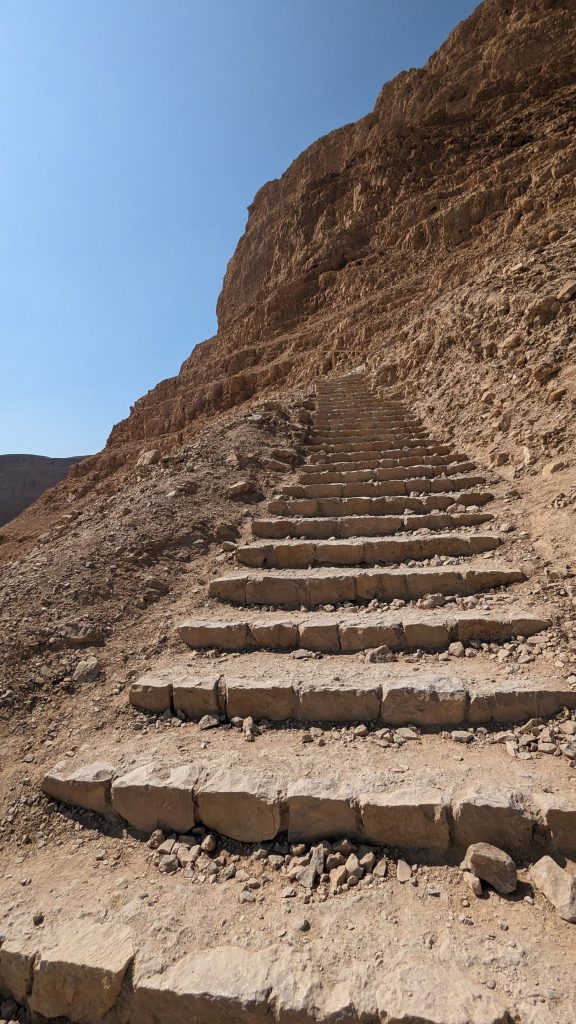
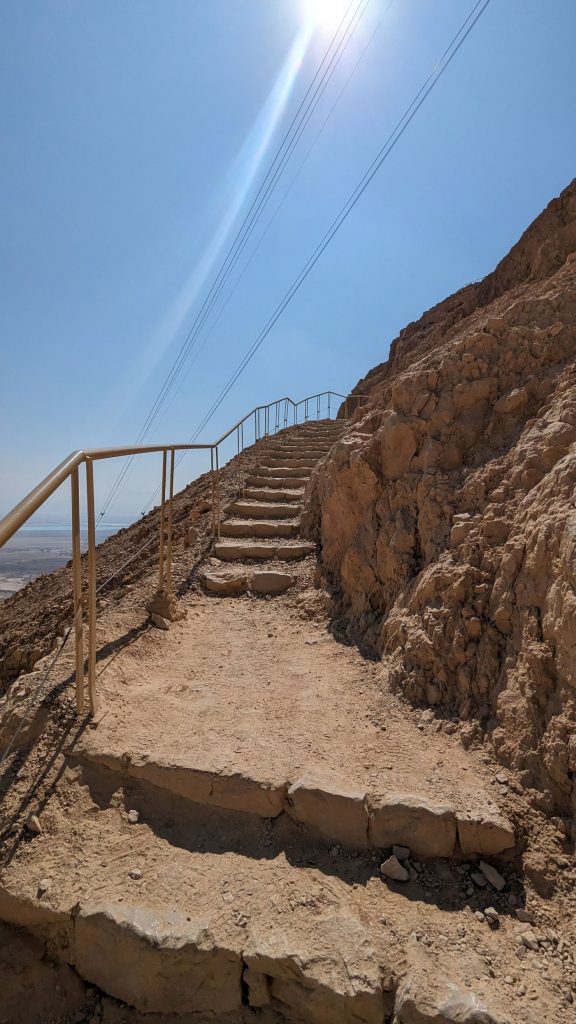
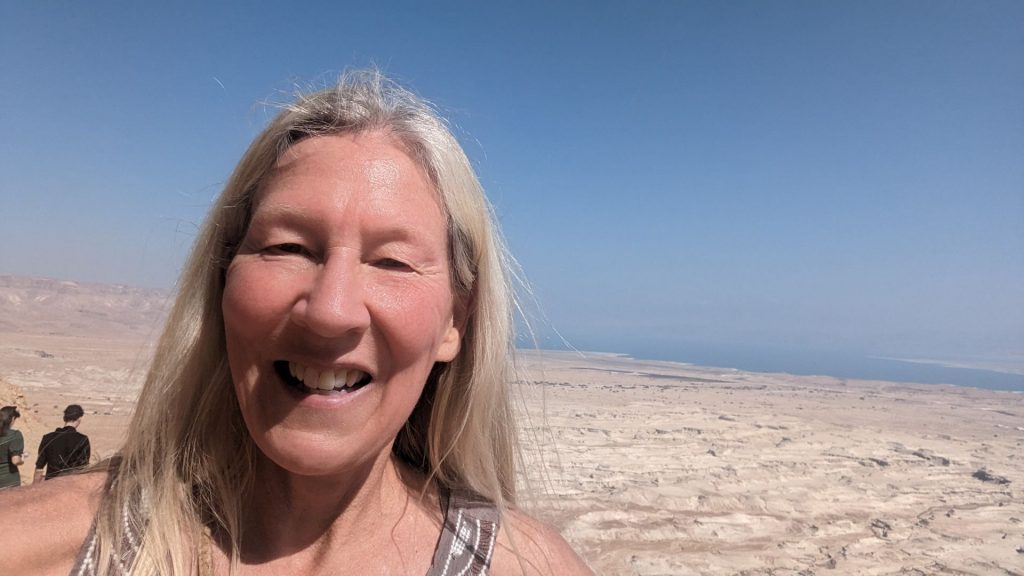
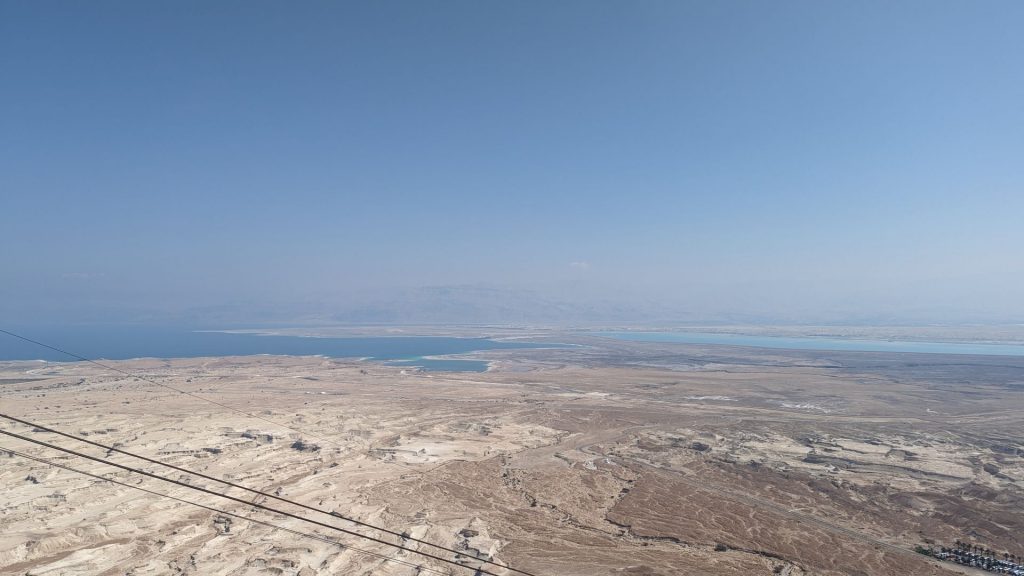
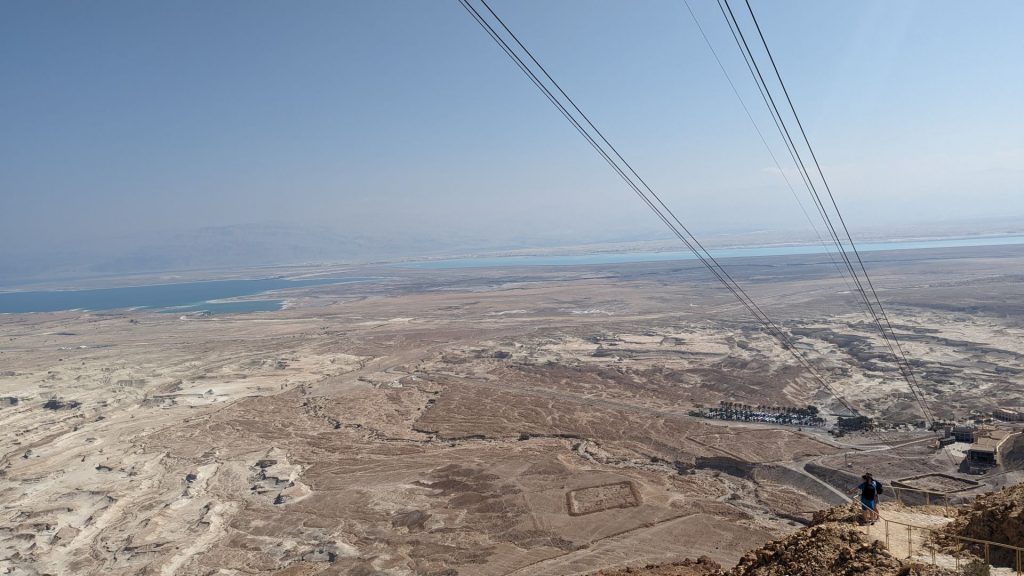
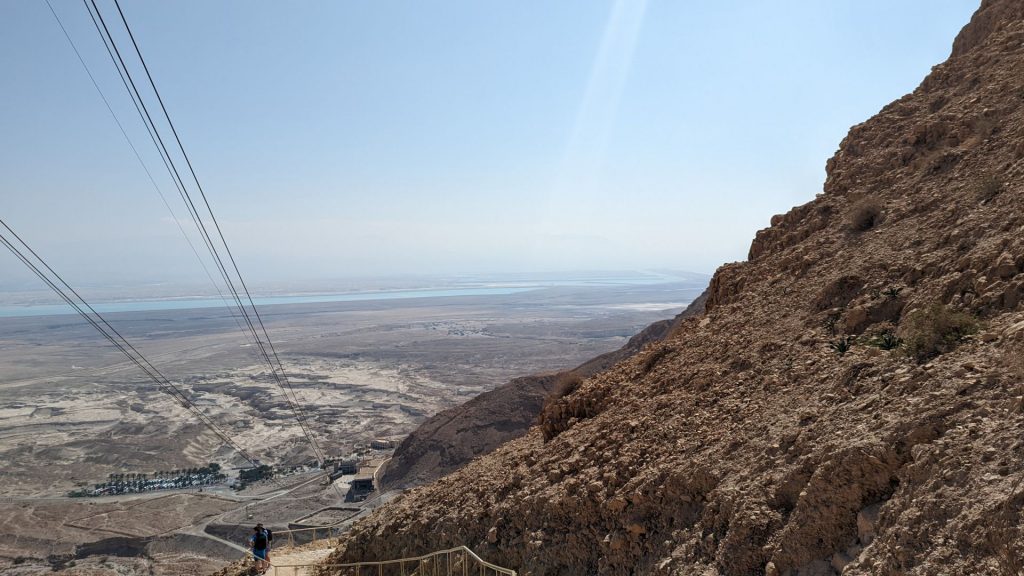
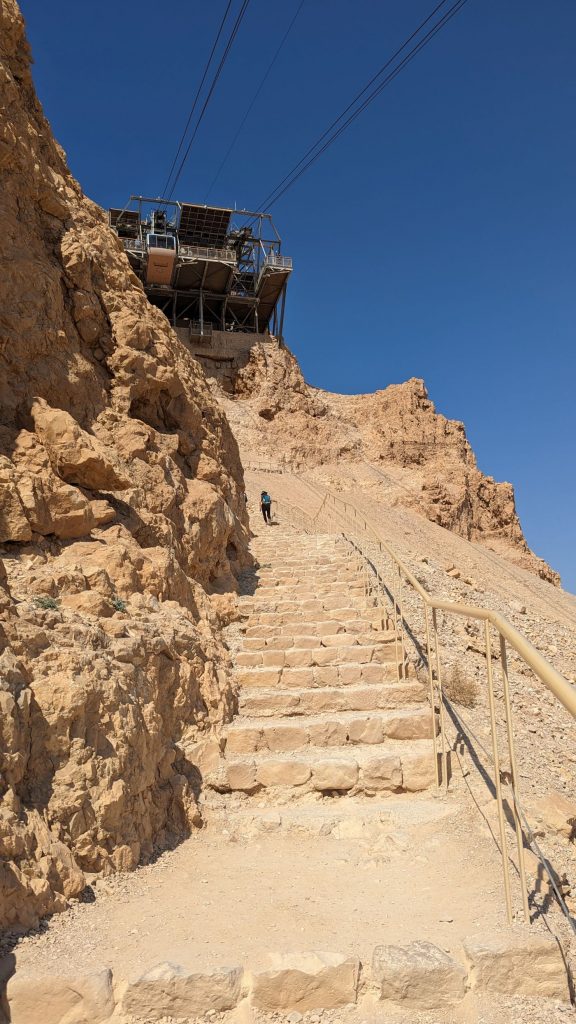
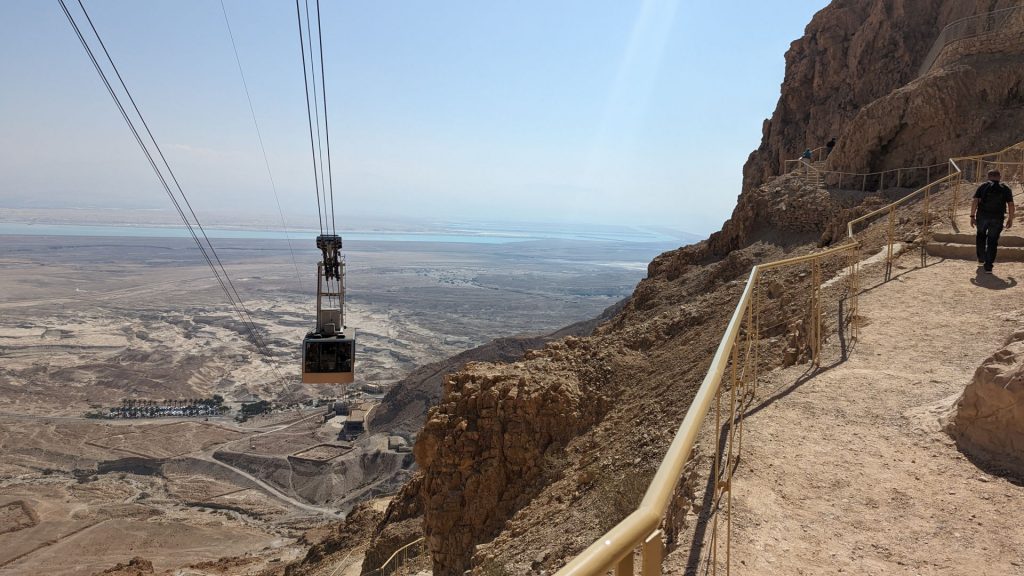
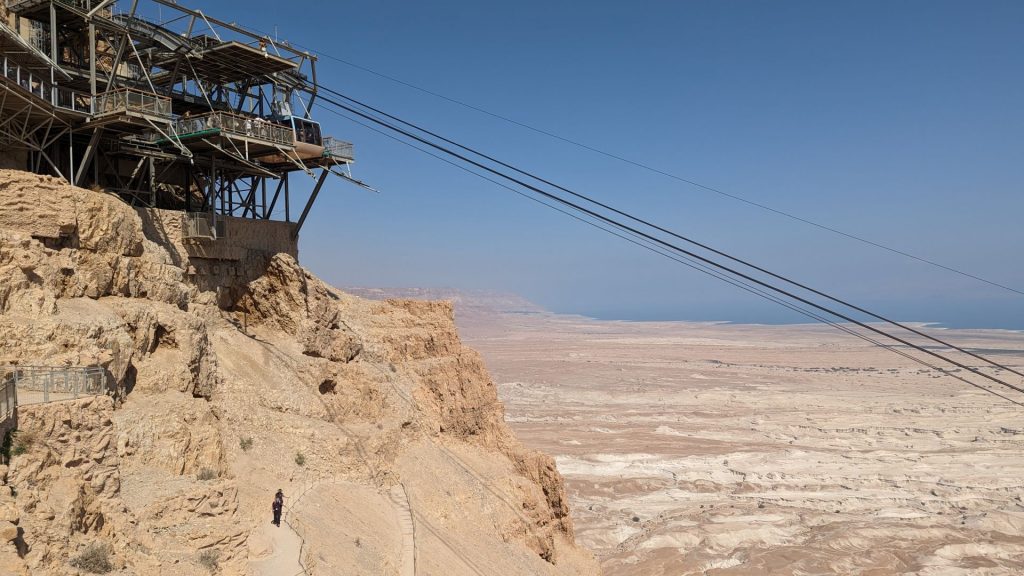
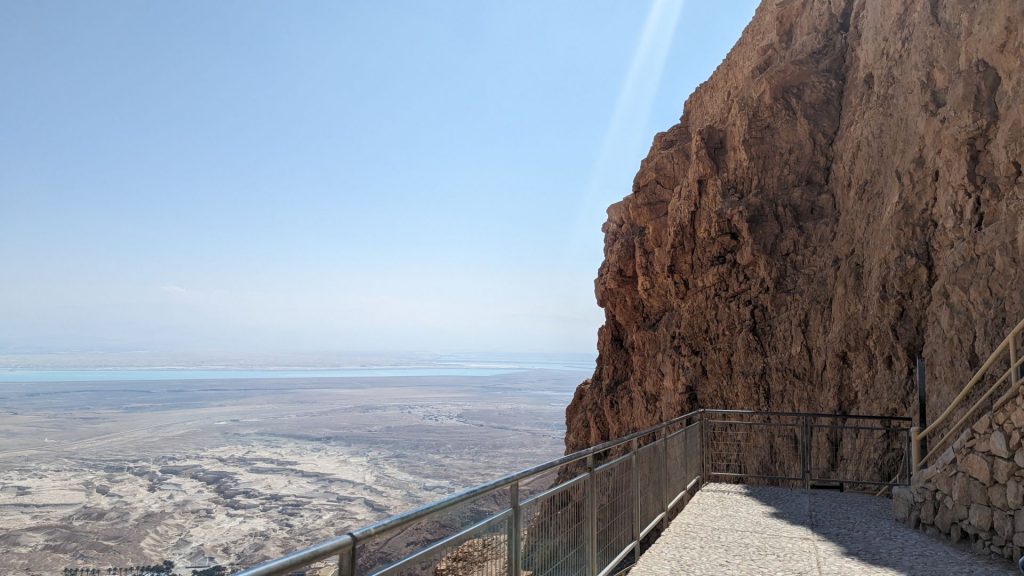
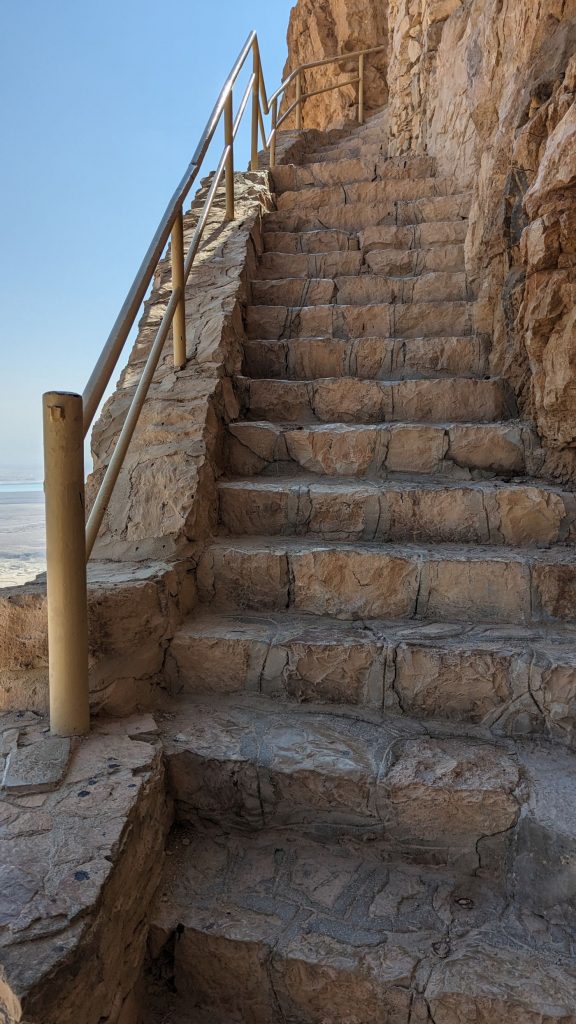
This is a very cool picture Michael took from the top.
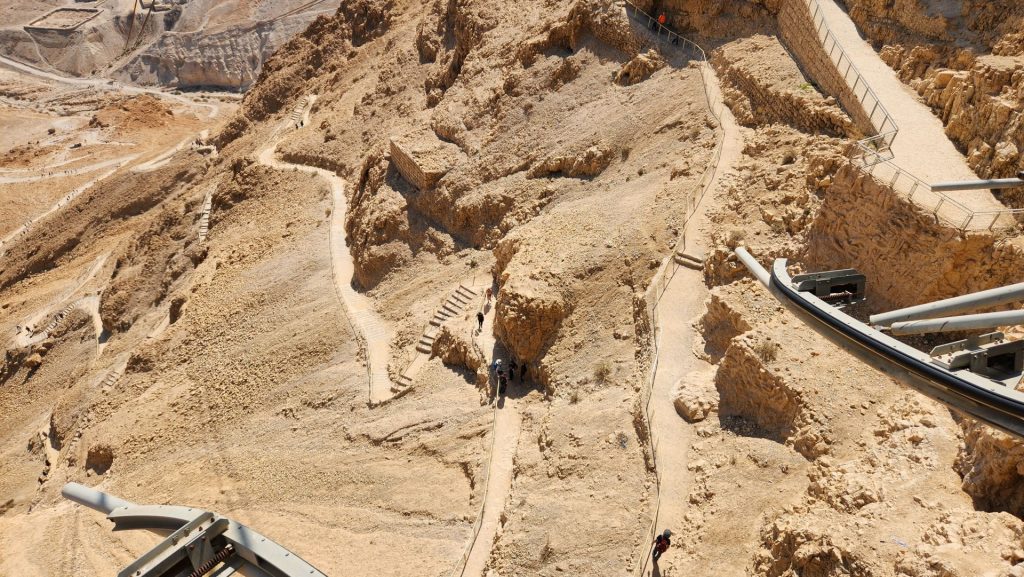
And that is just getting to the top. Once at the top, you see the remains of the civilization. We will share just a few things.
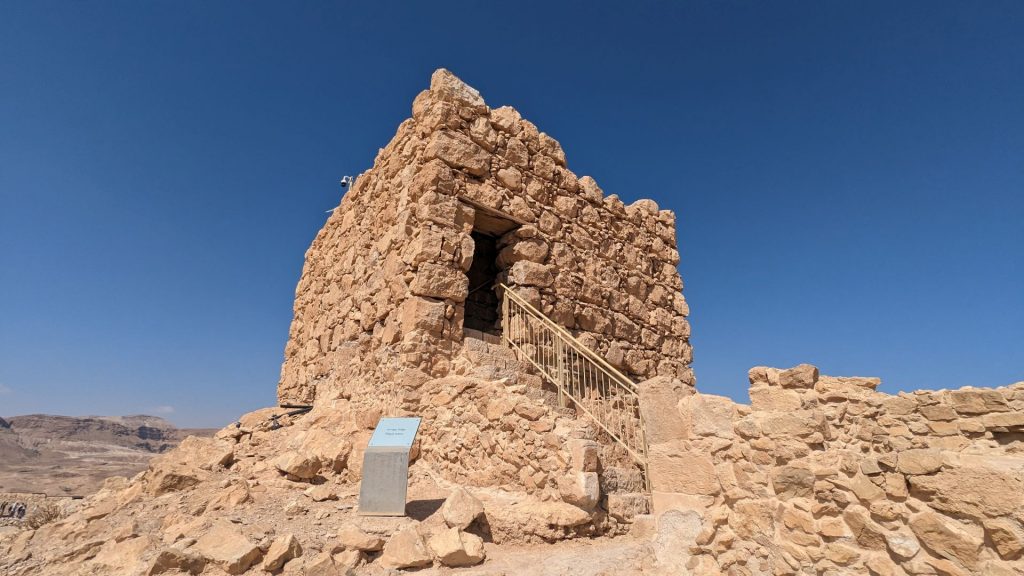
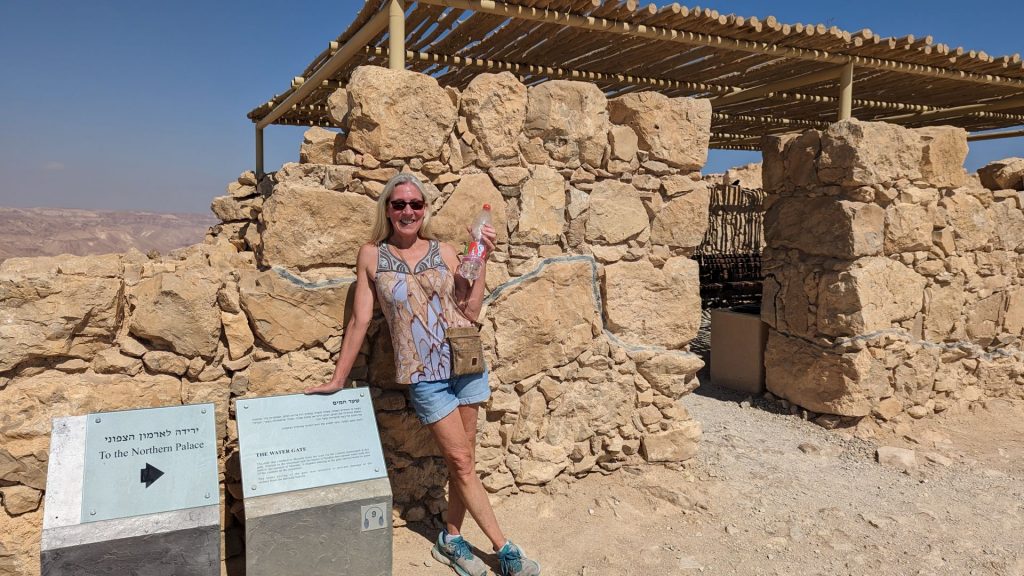
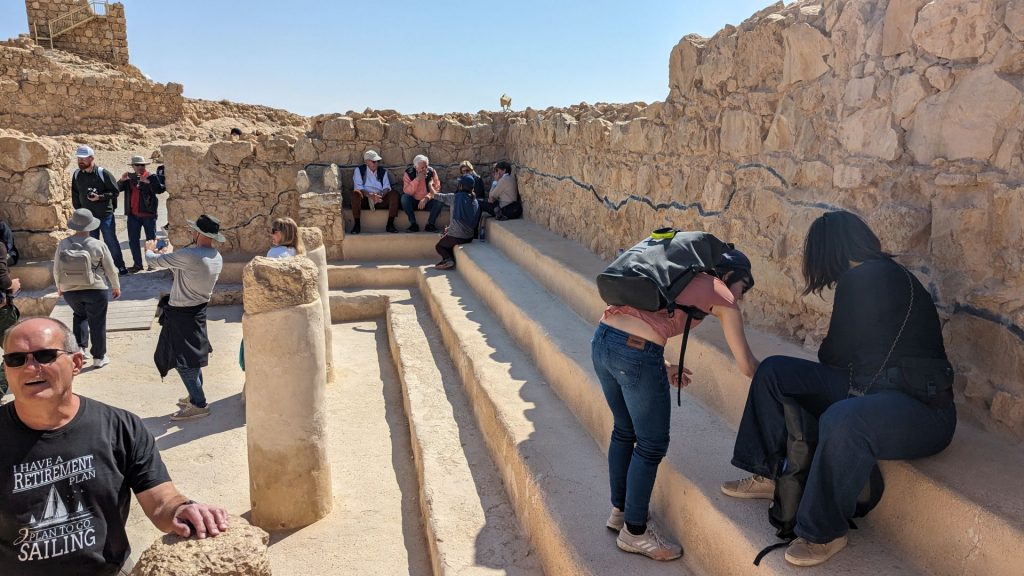
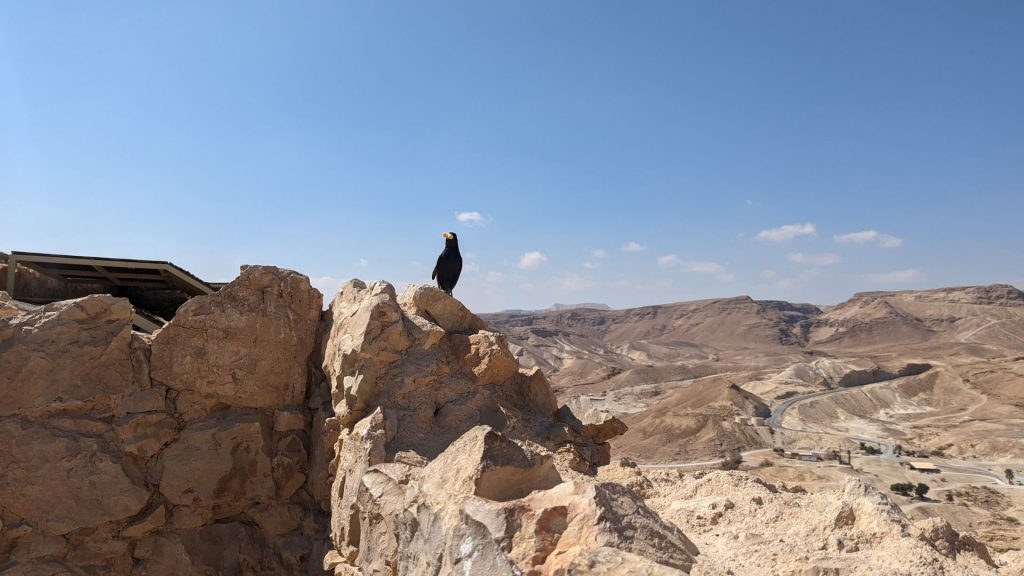
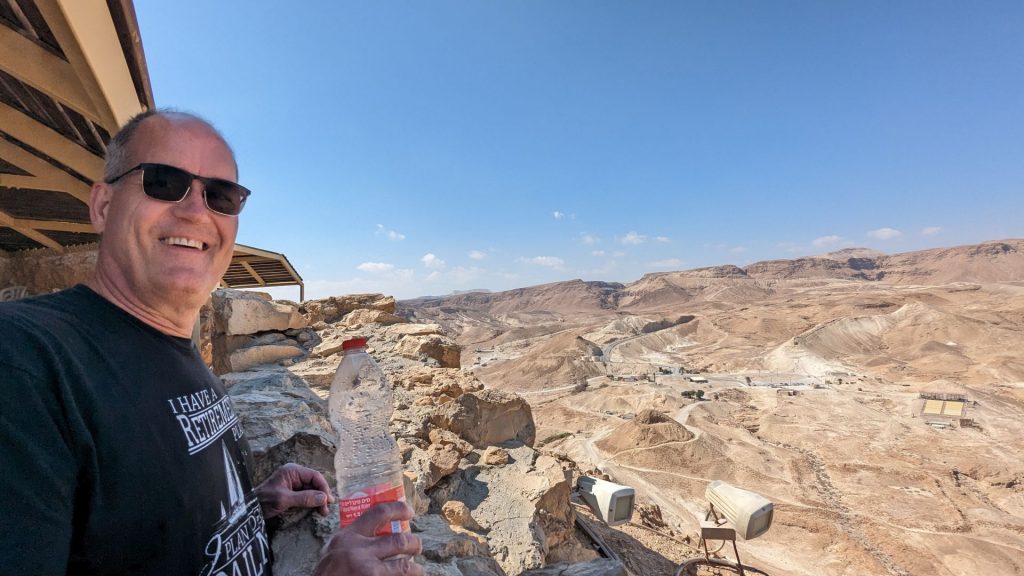
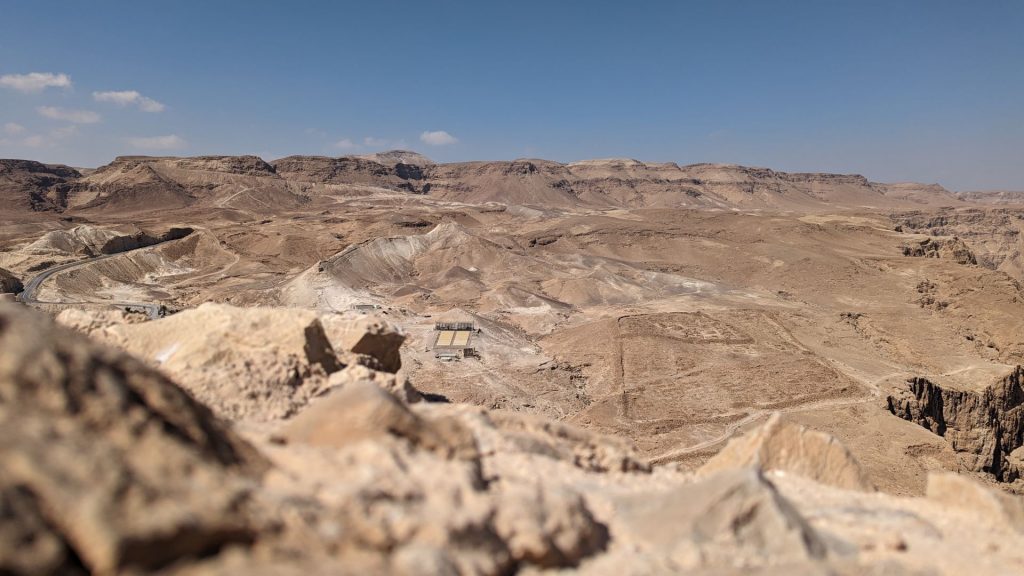
Below is a picture of a Columbarium Tower. There were three such towers on Masada. This one was used as a dovecot in its ground floor and as a watchtower in its upper story. The doves supplied meat for the people and also probably fertilizer for their crops.
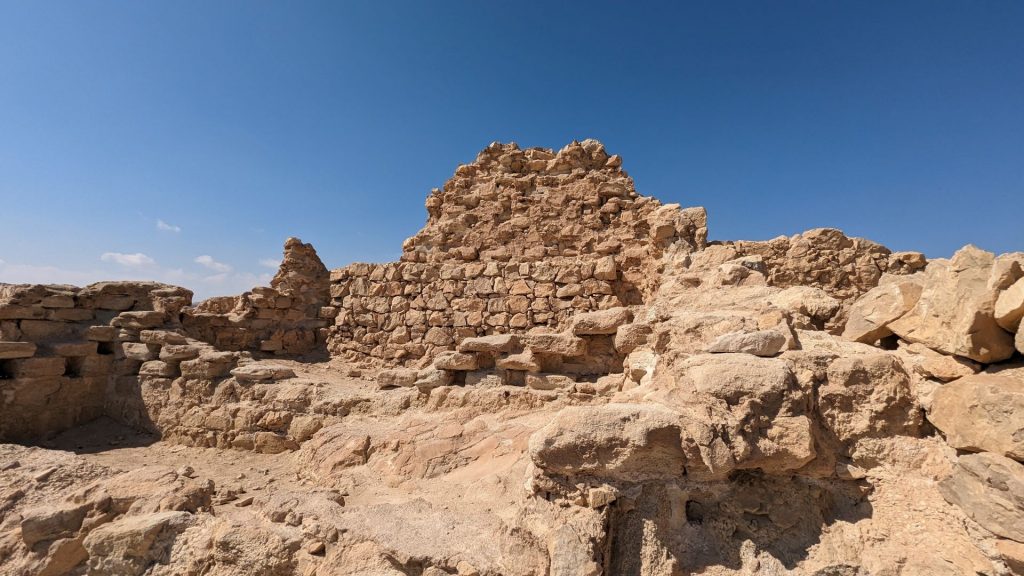
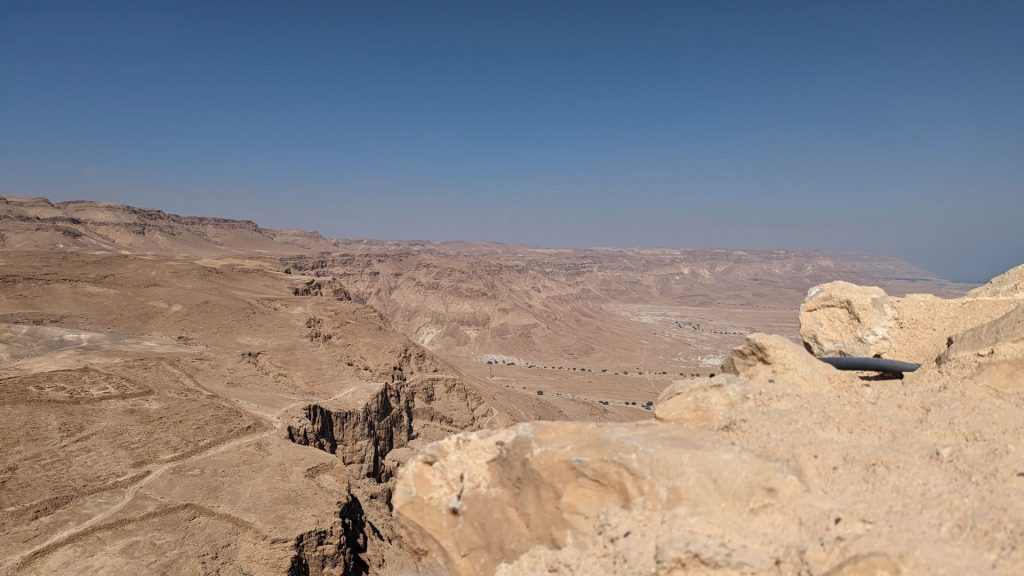
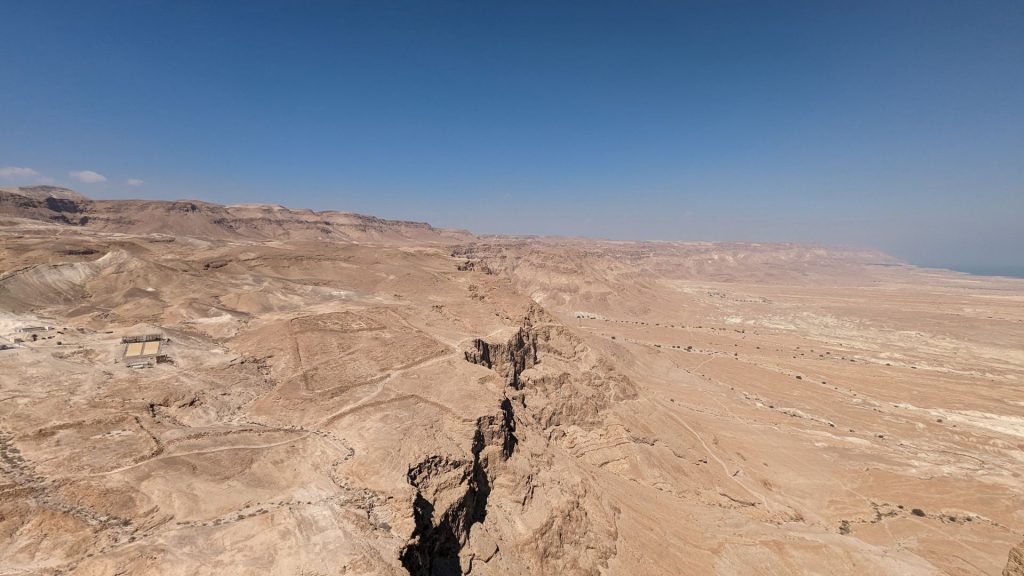
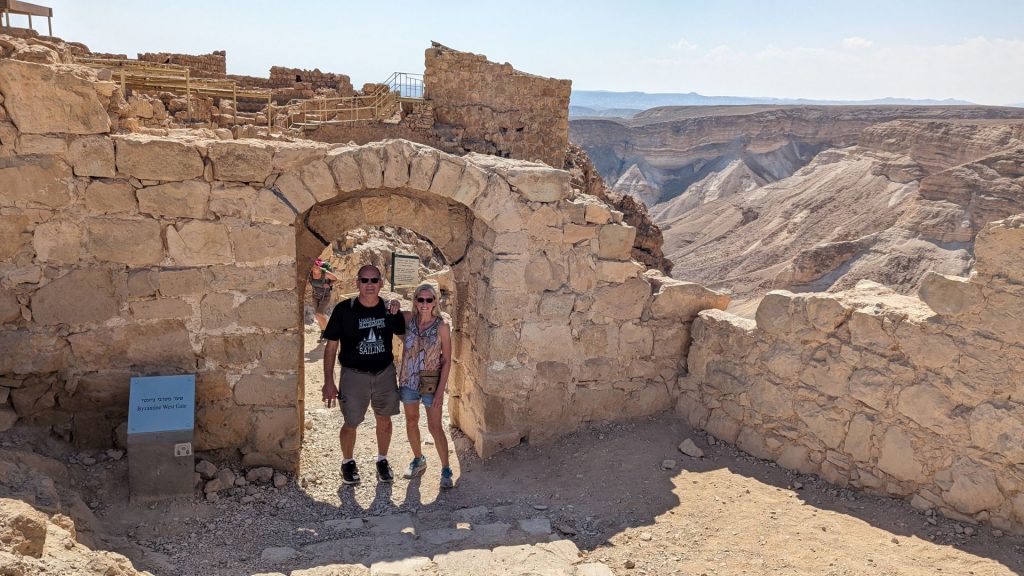
The following picture is of the remains of the Byzantine Church. Monks settled in the ruins of the fortress in the heart of the desert to seek tranquility that would bring them closer to the Creator. The cells of the monks who lived on Masada in the 5th to 7th centuries A.D. were scattered all over the mountain. They worshiped together in this church.
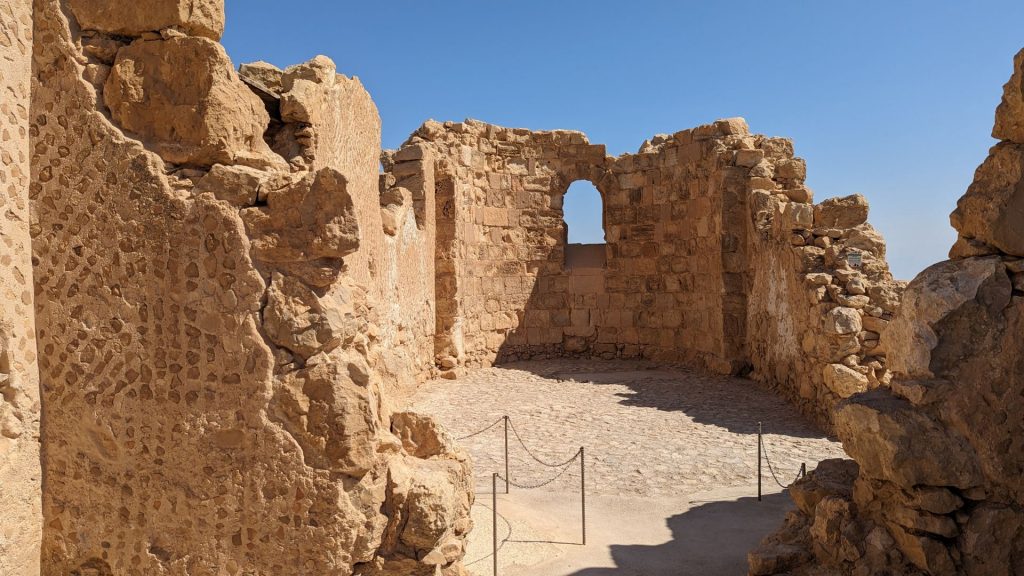
Below is a picture of the Guard Room. On benches at the entrance to the three storerooms in this wing of the northern complex, sat the palace guards. These special security arrangements indicate that the storerooms probably held weapons or other valuable contents.
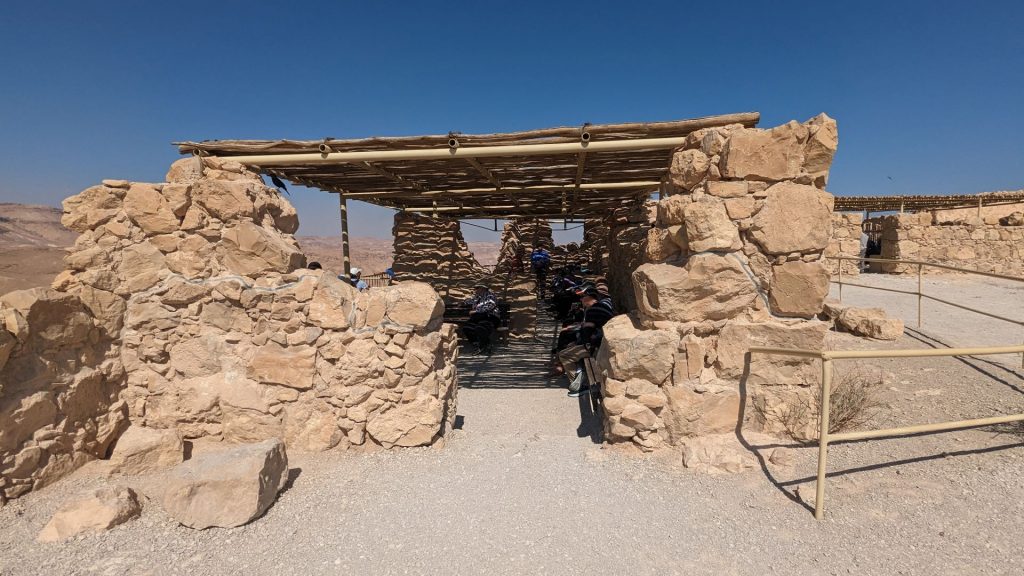
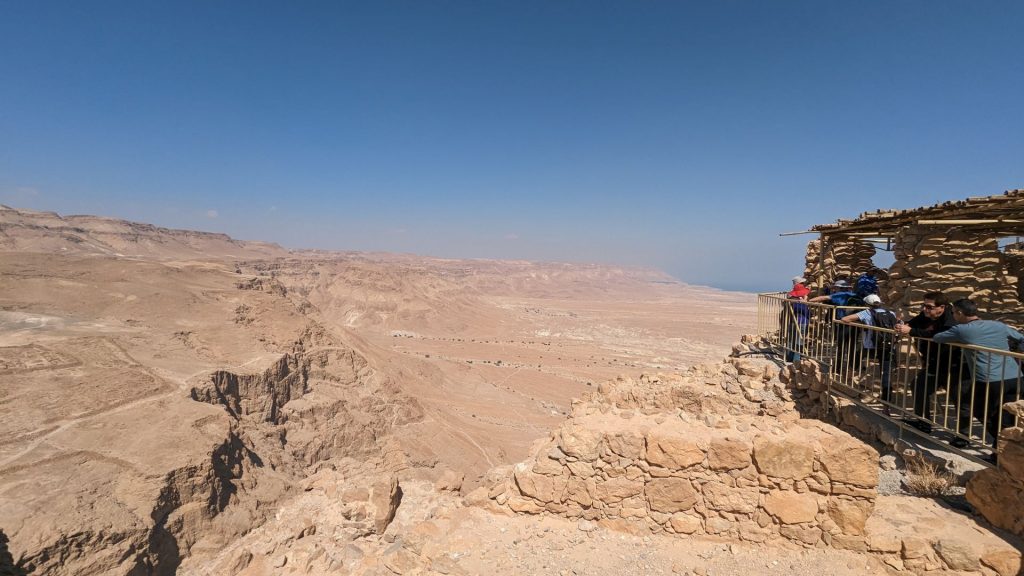
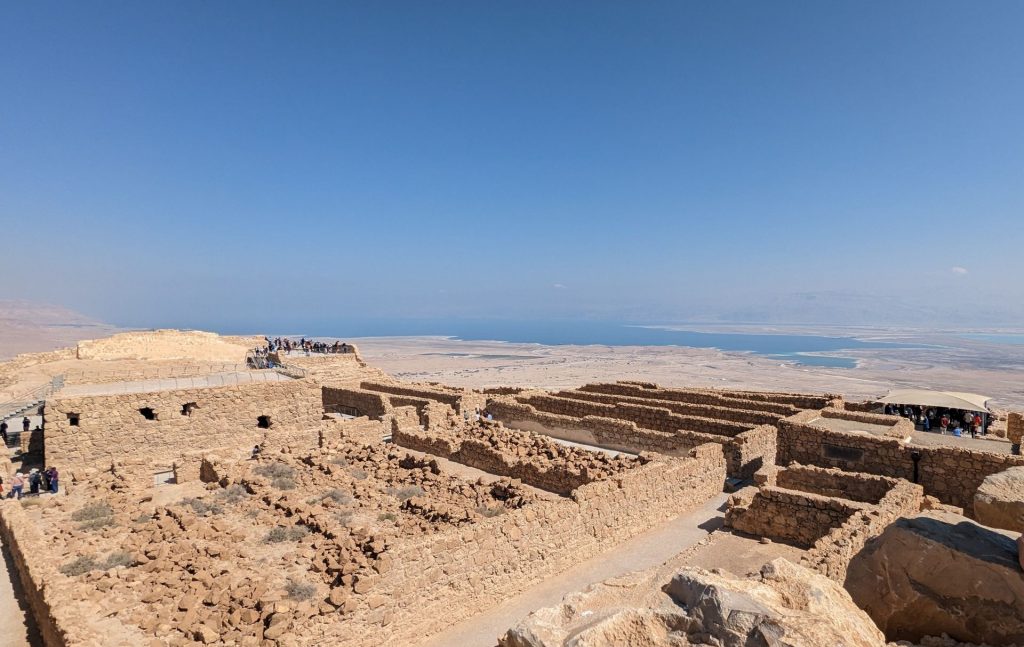
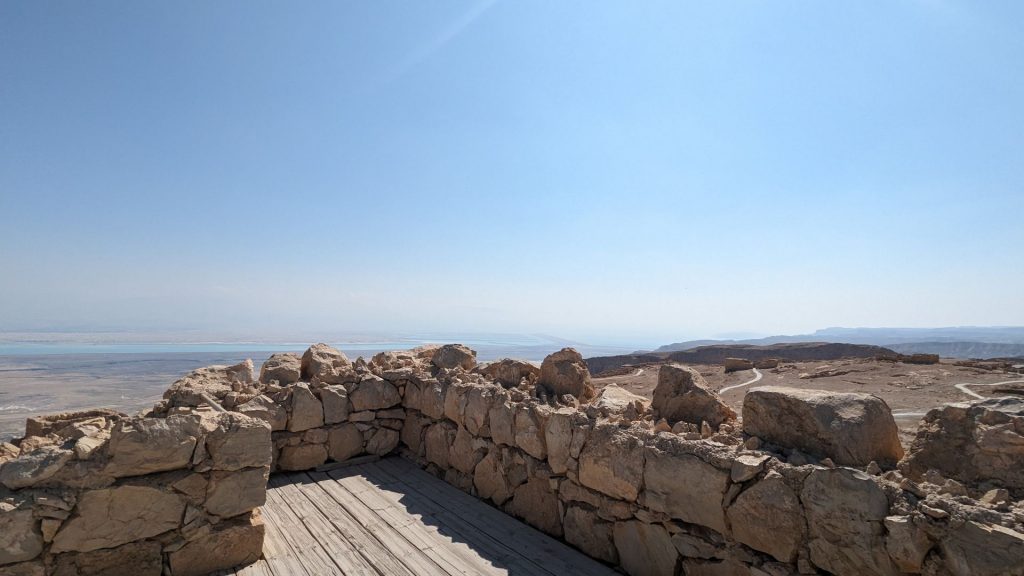
As noted above, the Romans lay seize to the 960 Jewish people living in Masada and killed them. This spot (in the picture below) has been identified as the breaching point. This is where the siege of Masada ended. The ramp that the Romans had built up to the summit of the mountain reached to below this point. The excavations here uncovered ballista balls and arrowheads, numerous slingshots and signs of burning, evidence that battle rages at this spot.
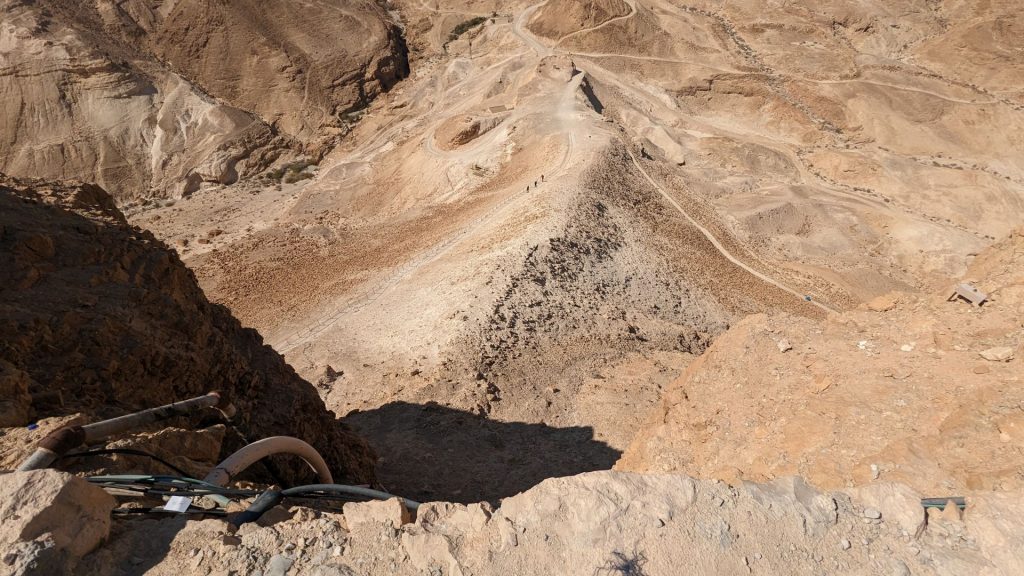
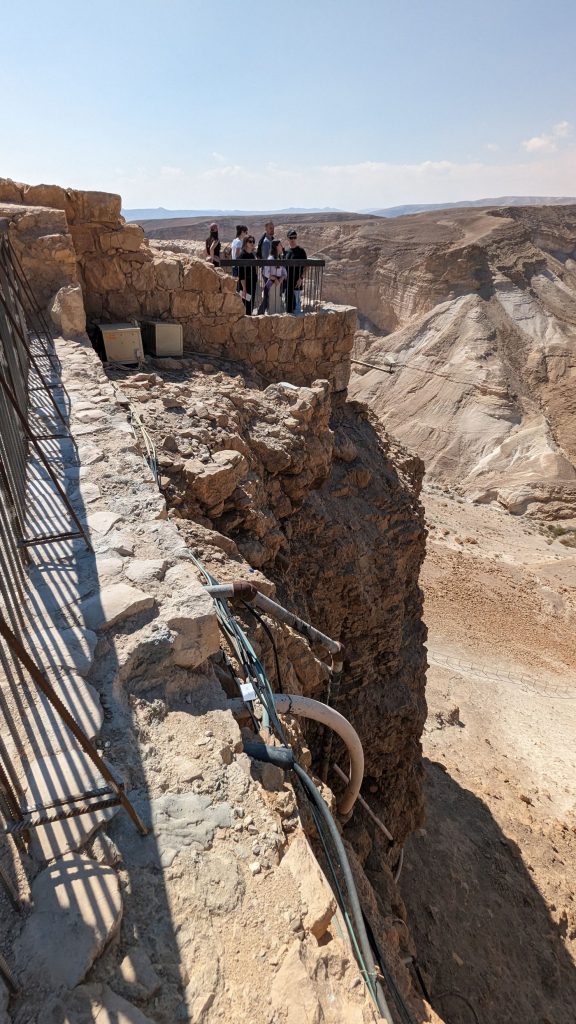
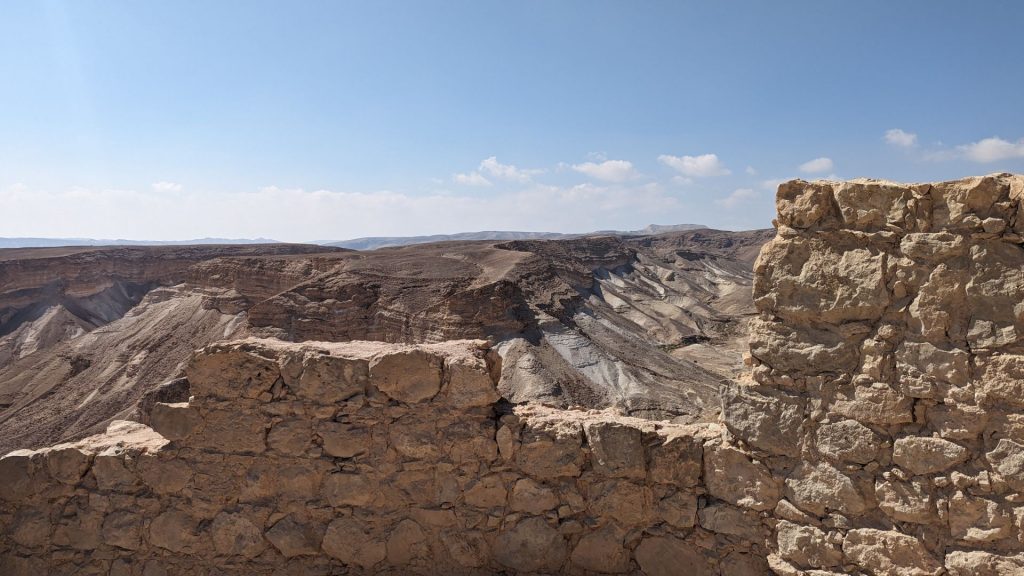
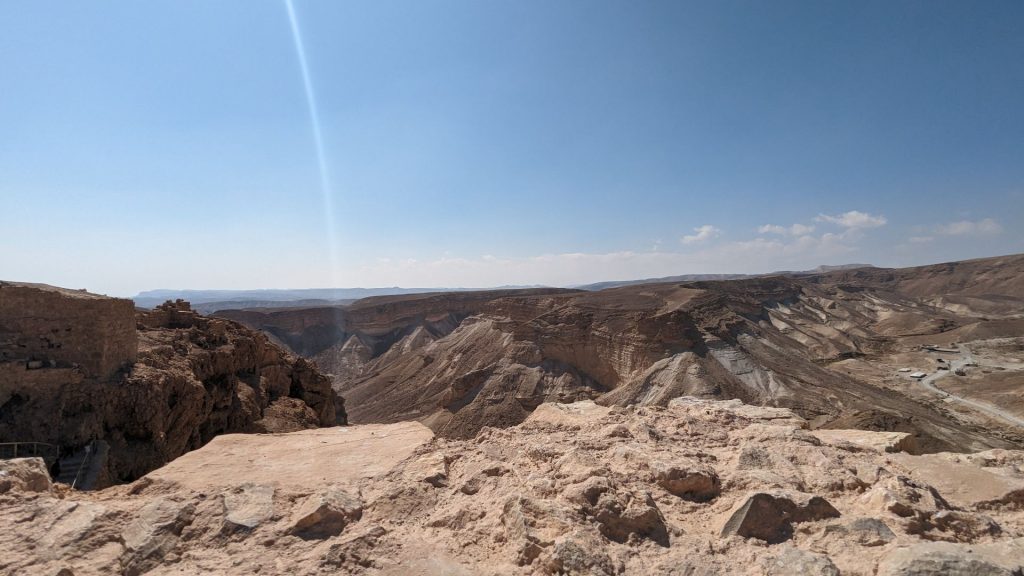
It was time to go down. Michael and I walked down together.
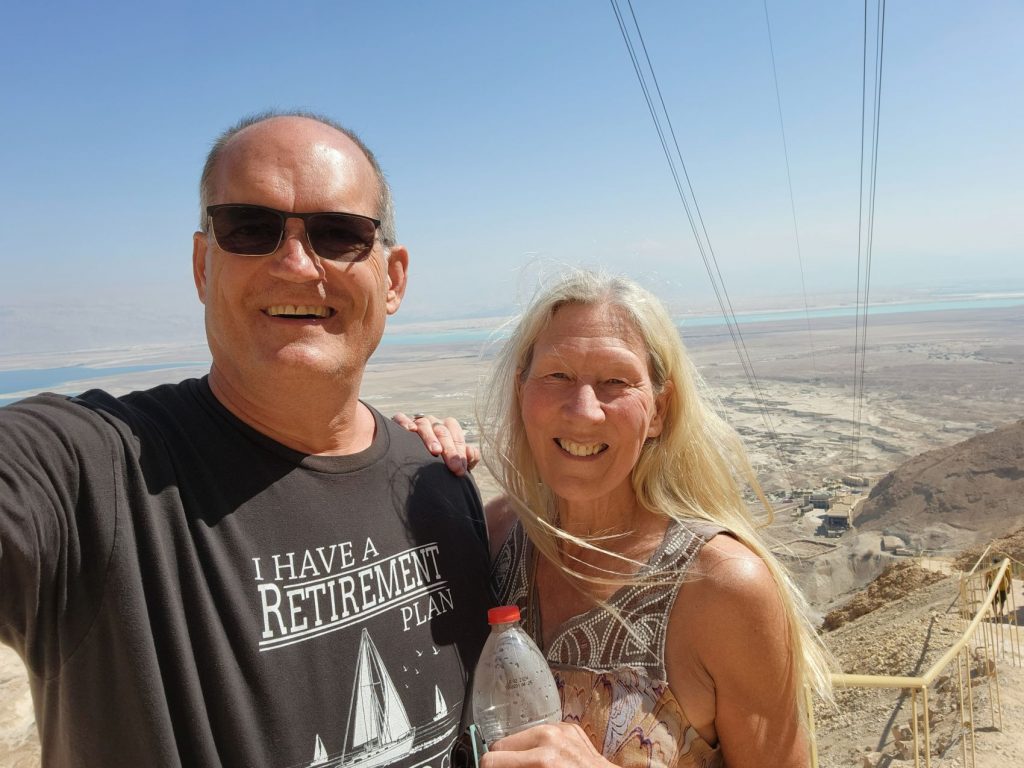
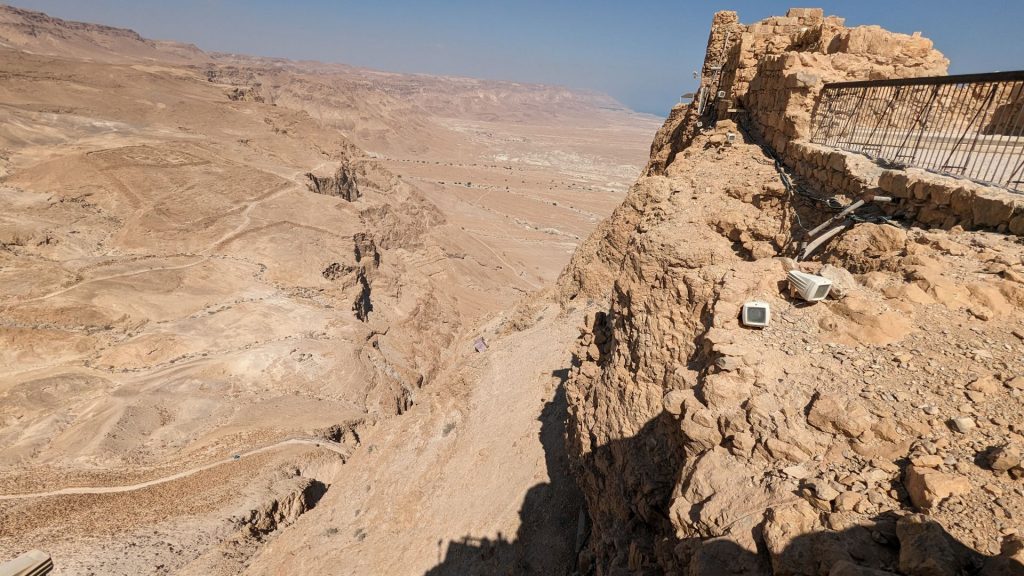
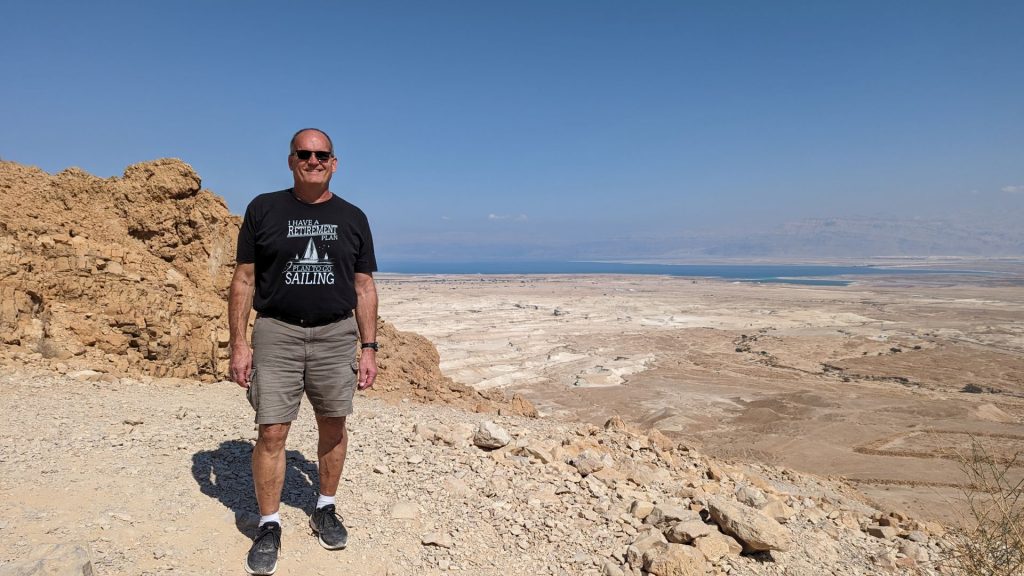
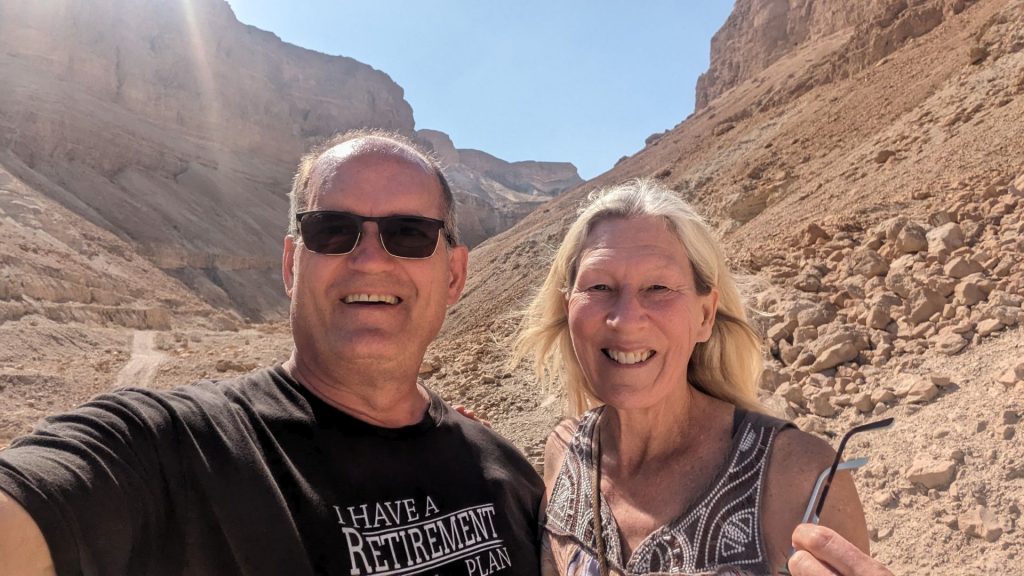
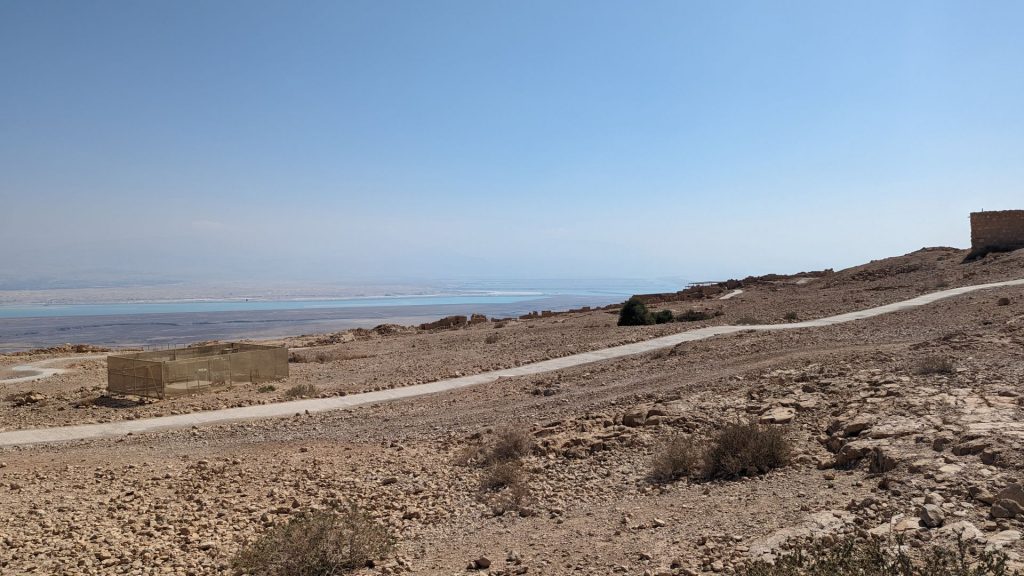
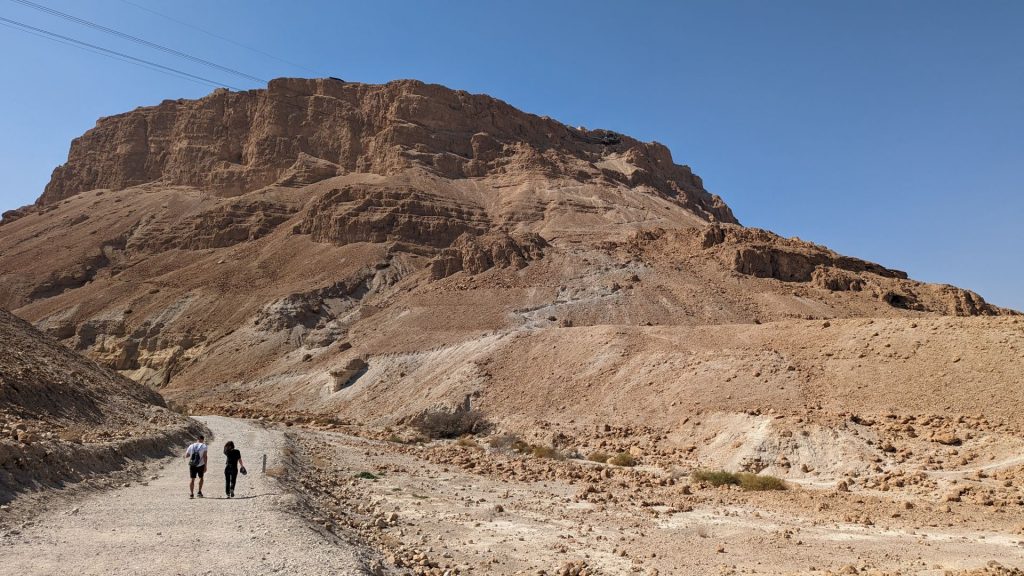
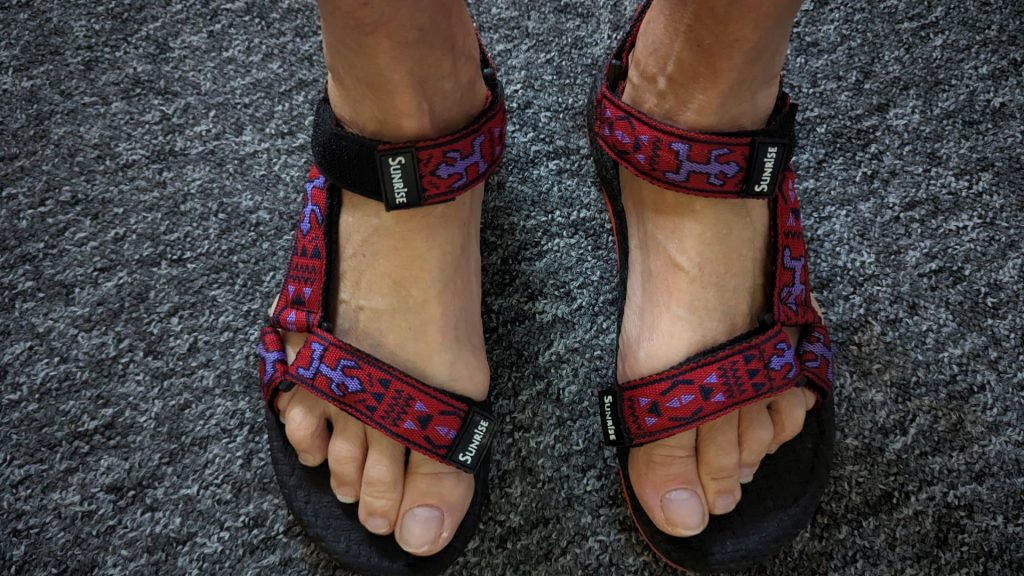
It was time to finish our drive to the Sea of Galilee. We were losing daylight so we decided to just eat dinner by the Sea and go to our hotel then visit the Mount of the Beatitudes on the Sea the next day.
Here are our views from the restaurant where we had dinner.
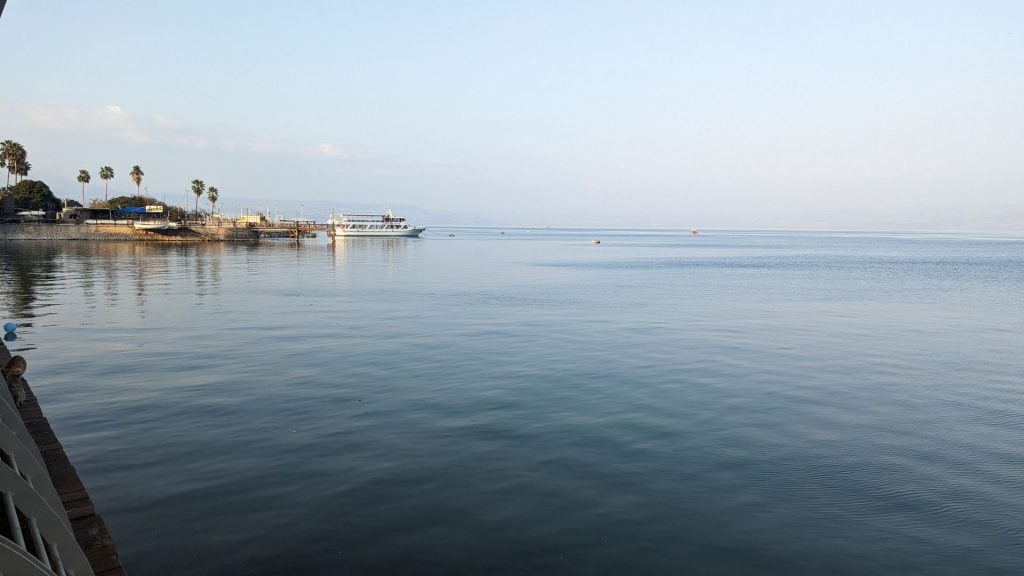
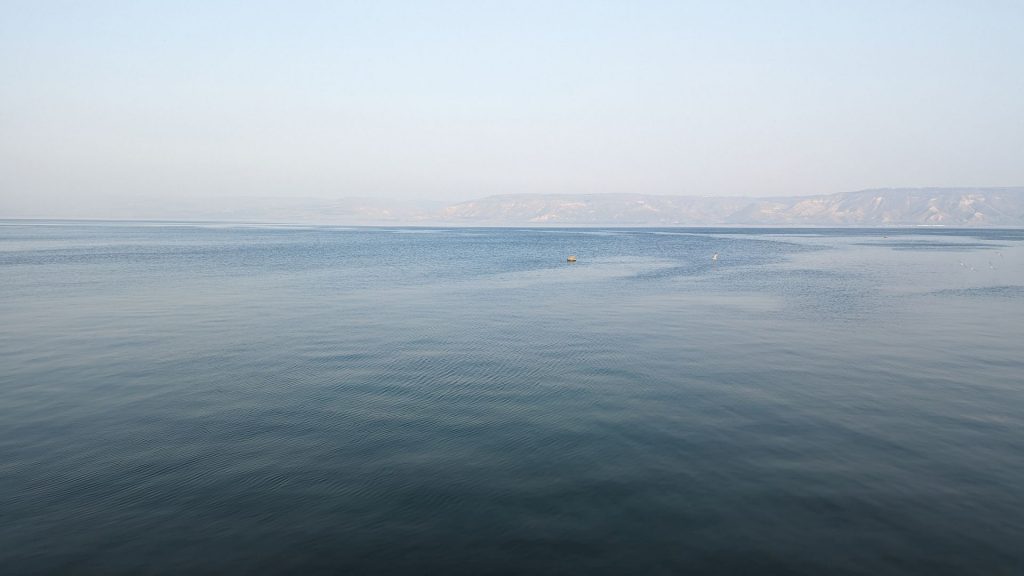
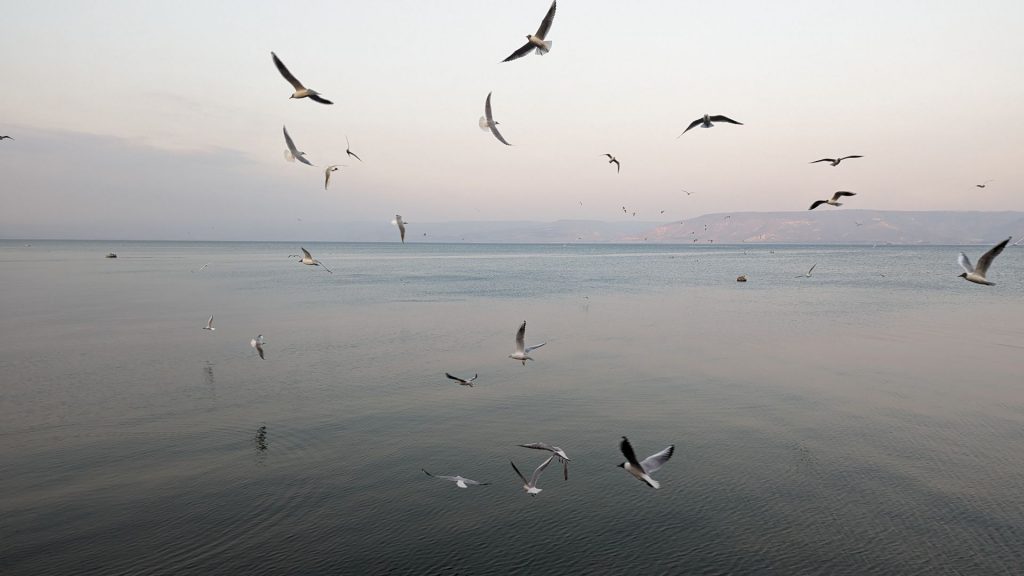
The Shirat Hayam – Boutique Hotel was literally steps from the restaurant. It was absolutely charming! Here are some pics of the exterior as well as our room.
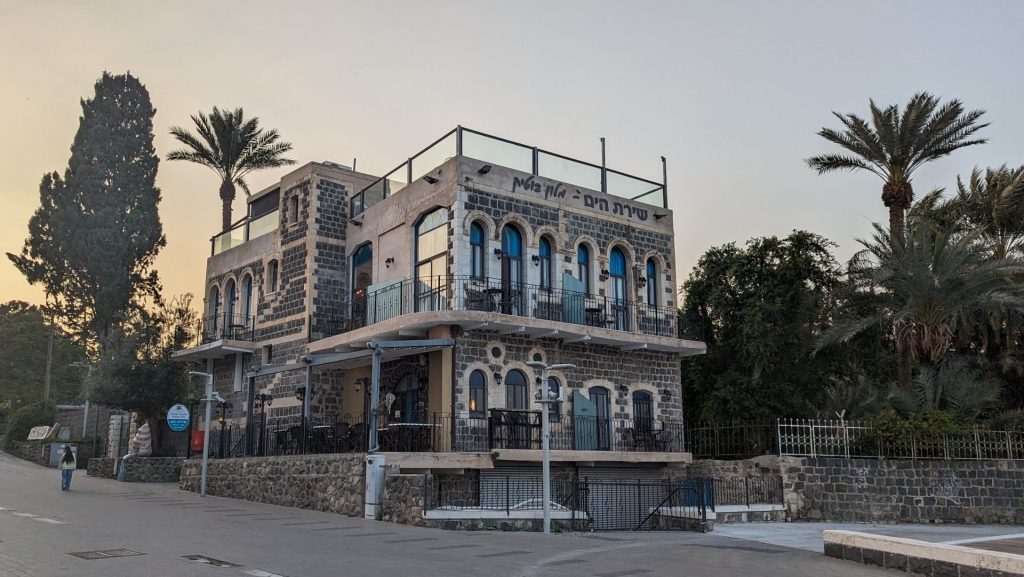
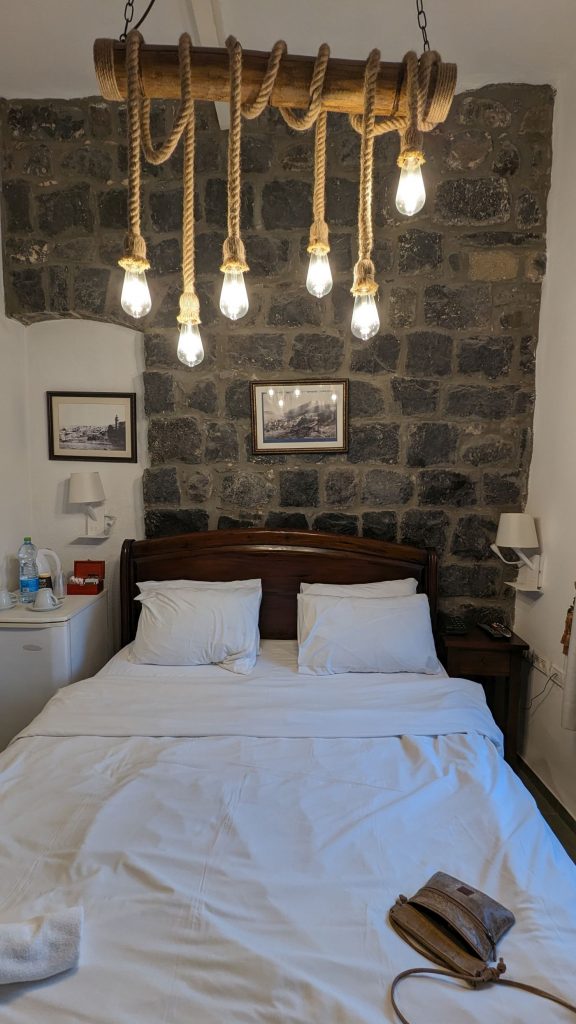
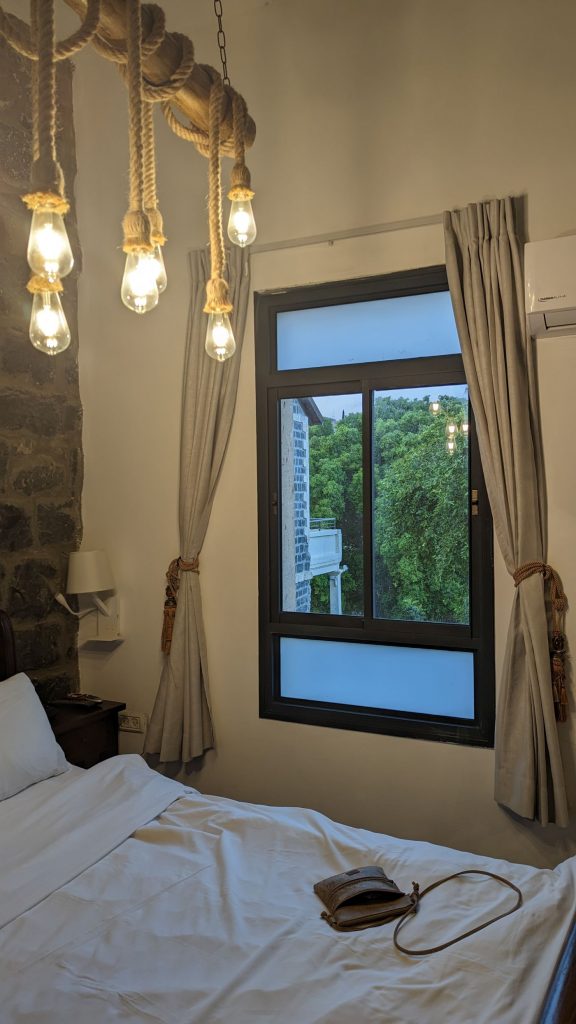
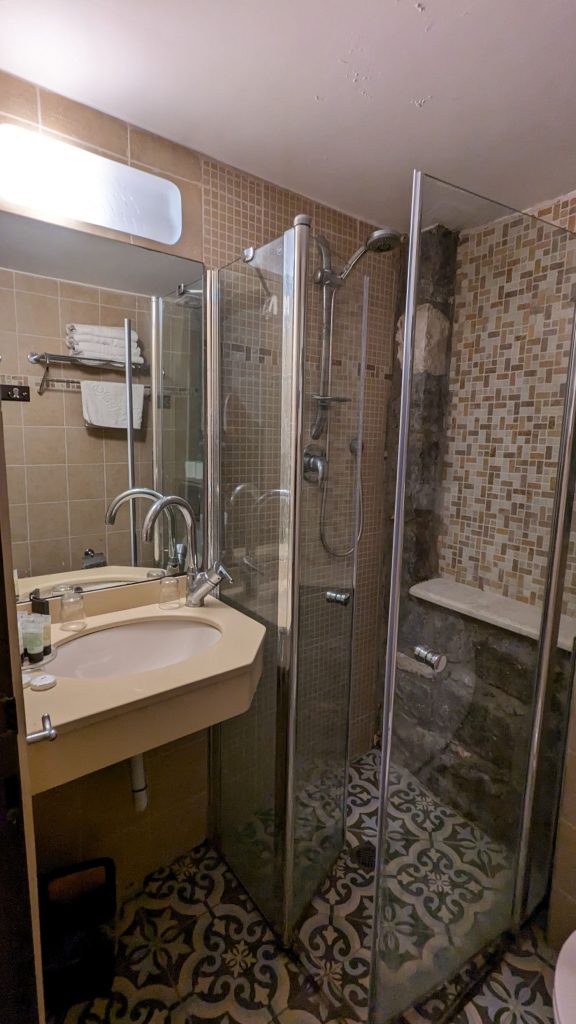
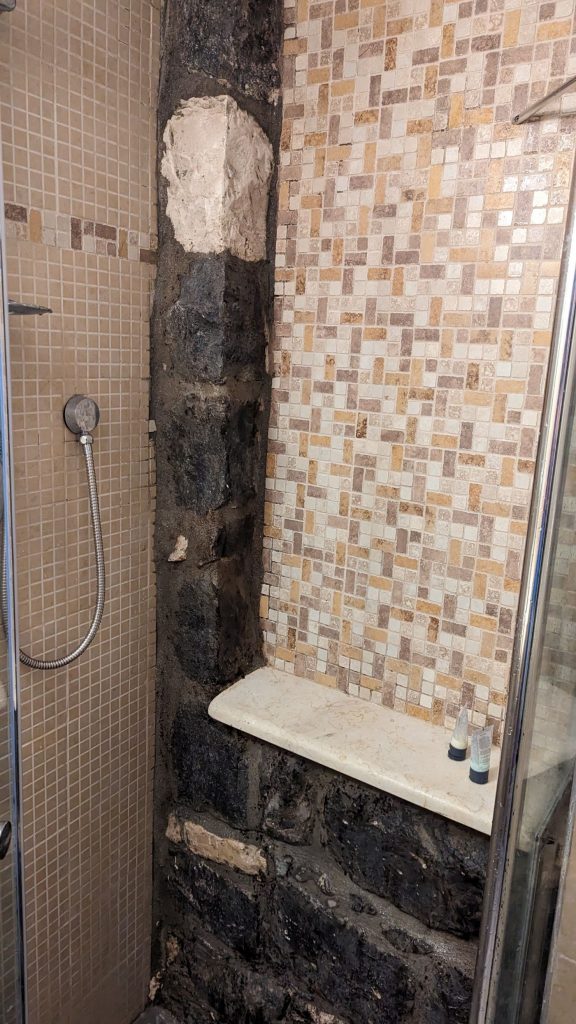
We started off the next day (Sunday) at the Mount of the Beatitudes. The Beatitudes are from the book of Matthew. It is one of the most loved portions of the Gospel. It forms the beginning of what has come to be known as the “Sermon on the Mount.”
We didn’t go inside any of the buildings. As one tour guide told me, “You aren’t going in there dressed like that.” 🙂 I assured him that I had no plans to go inside. This is what I was wearing:
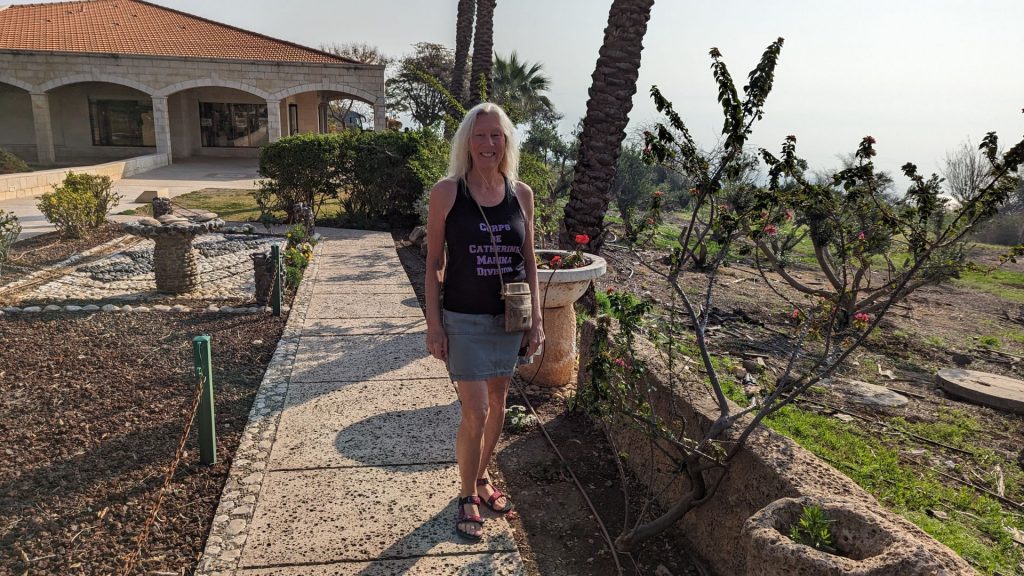
In any event, the area was beautiful. We couldn’t see the Sea of Galilee too well due to the haze, but we still took pictures, of course.
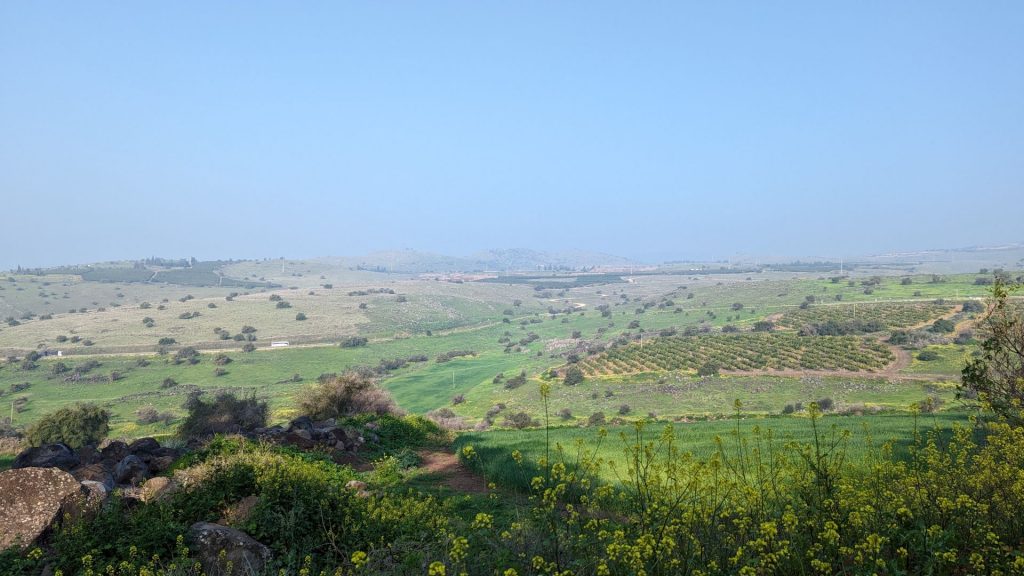
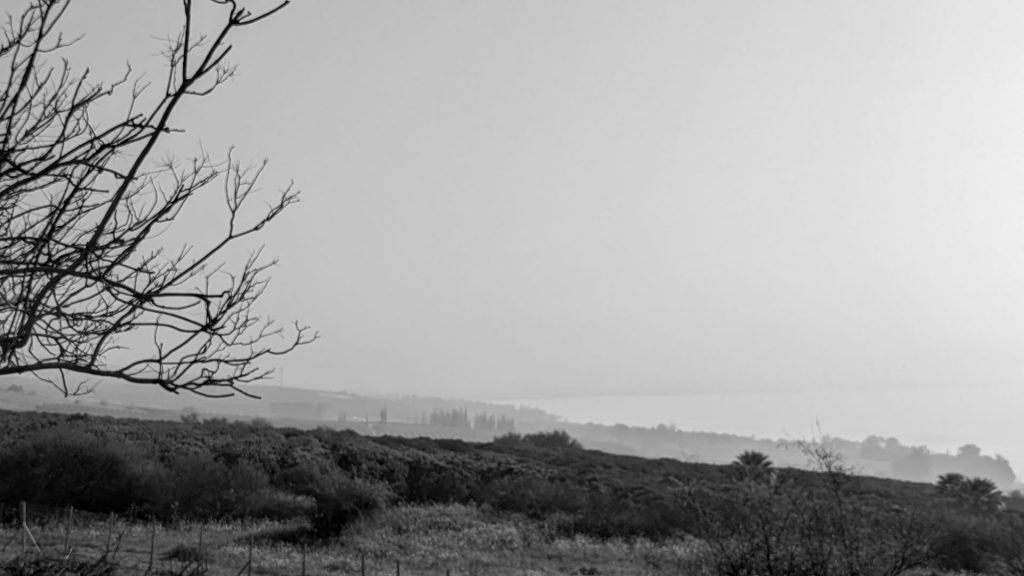
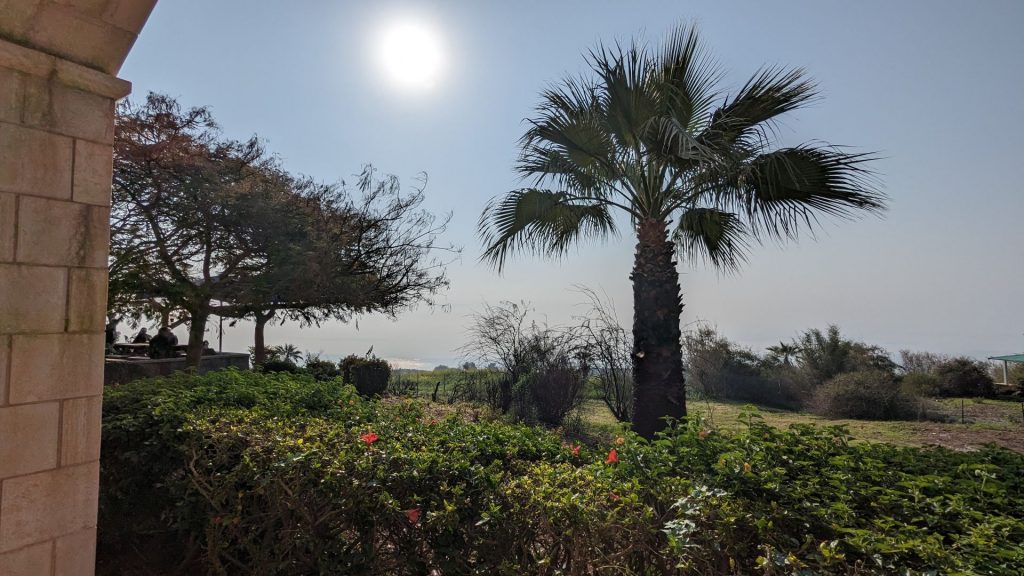
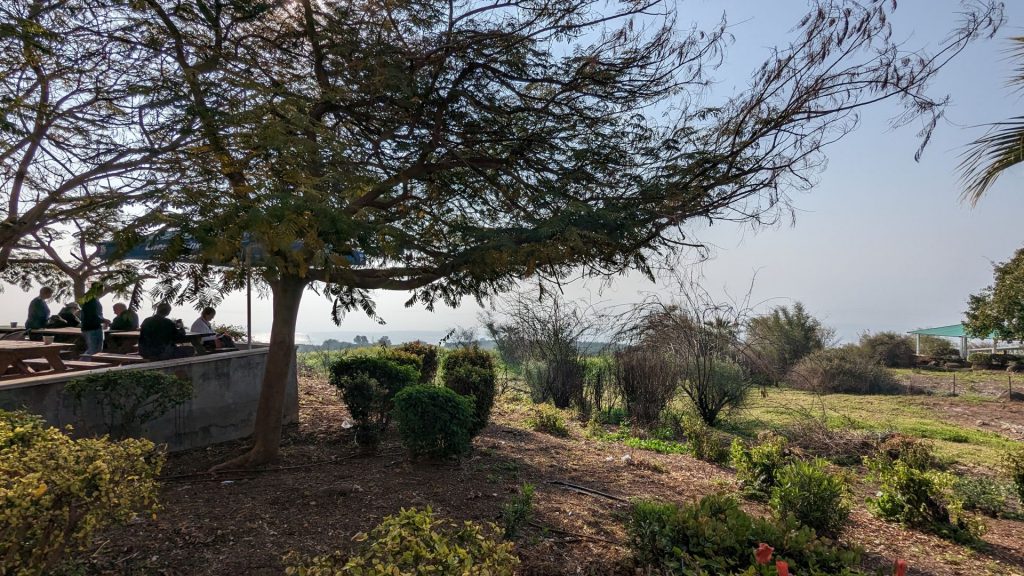
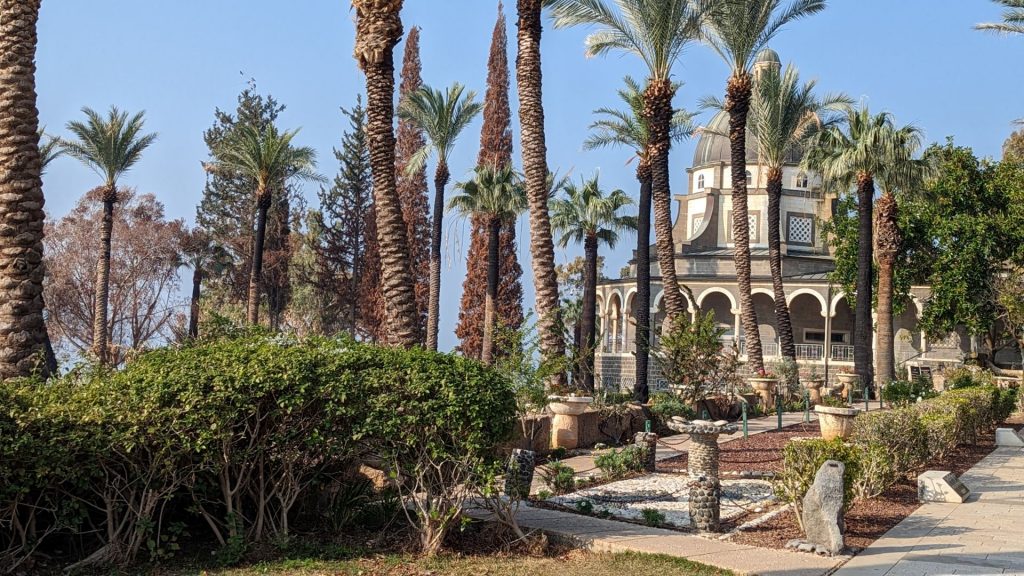
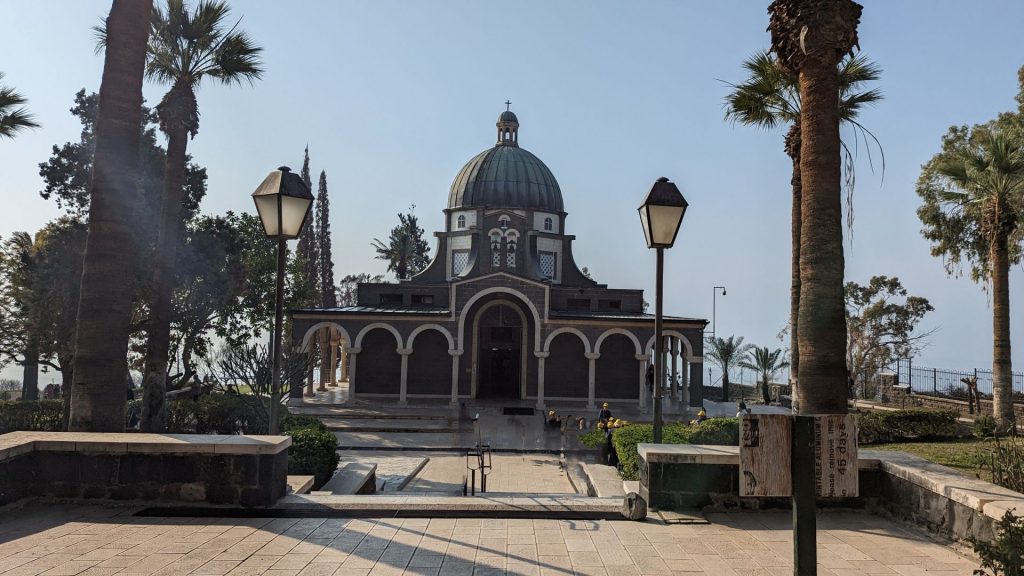
The structure below is the guest house. It is a 50-room hospice that is managed by the Franciscan Sisters and is oriented to pilgrim tour groups and travelers seeking uniquely Catholic accommodations with a strong spiritual connection.
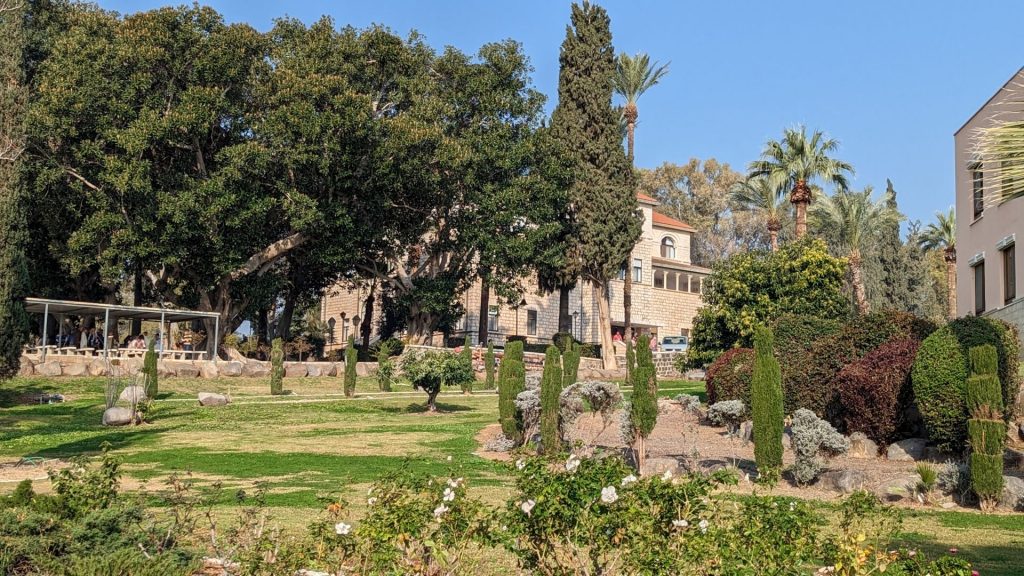
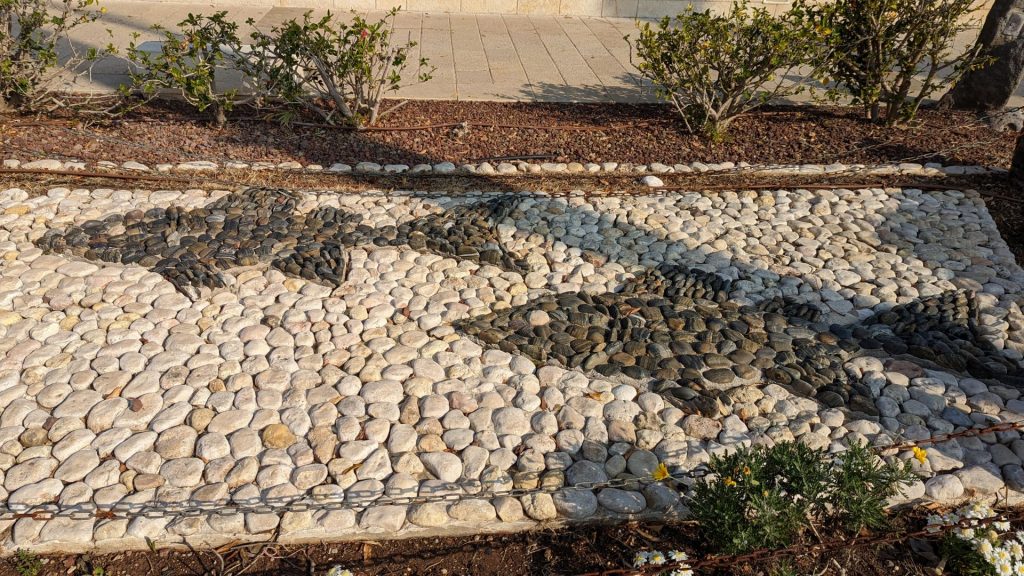
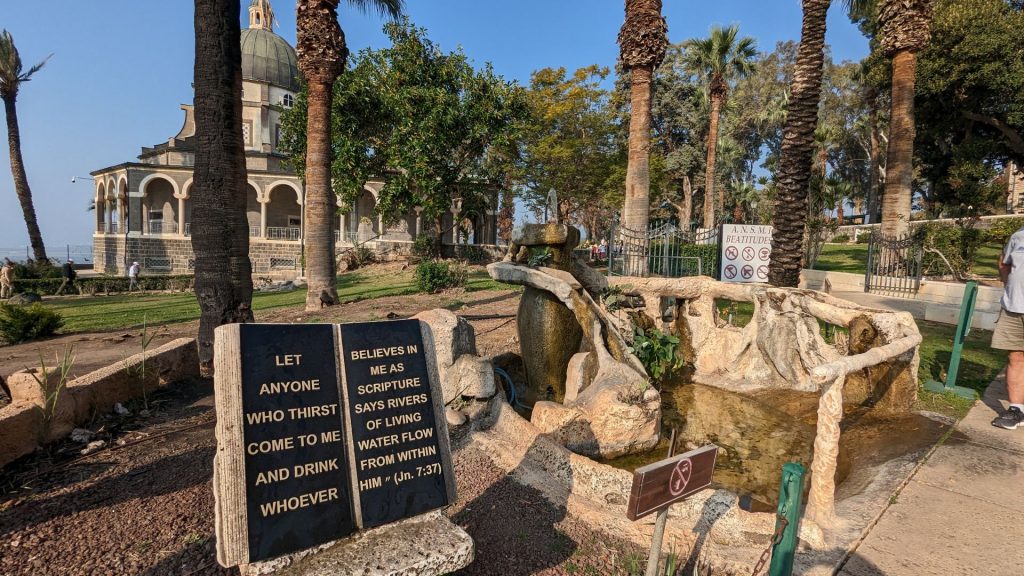
We left the Mount of the Beatitudes in good spirits, having enjoyed the beauty. Our next intended stop was at the oldest cafe in Israel – Cafe Abu Salem, in Nazareth. I’d read about this on one of the many blogs/websites I’d visited to plan our itinerary. We entered the address in Google Maps and headed on our merry way.
It was smooth going at first. We first had to get to Nazareth, which took about 50 minutes. Then the directions started to get really weird. We were directed to drive on single-lane “roads” with 90 degree turns and walls on both sides for the most part. Each time we were told to take a turn I expected it to be a dead end, but it kept going and going. After probably about eight of these turns the road did, in fact, turn into a dead end. There were residences here and about four cars parked in a rather small space, plus us. Thankfully, there was just enough room for us to back up, turn the wheel, go forward, turn the wheel, back up, turn the wheel, etc. until we were facing forward. I don’t think we could have made the drive out in reverse!
By the time we got out of the winding roads, Google told us that the coffee shop was closed. Ha ha!!!! Okay, Plan B. We searched for coffee shops near us and found two. Michal wasn’t excited about the one we found so we went to Plan C. Google Maps took us to a mall and told us we were at the coffee shop. We parked the car and walked all around the mall and never found a coffee shop. We saw a McDonalds (Plan D) and might have caved and eaten there had it not been closed. We did find one open restaurant in the mall with outdoor seating, so we went there (Plan E). Greg’s. I don’t usually post food pics, but these are worth posting, if only due to the effort we made to finally find food. 😉
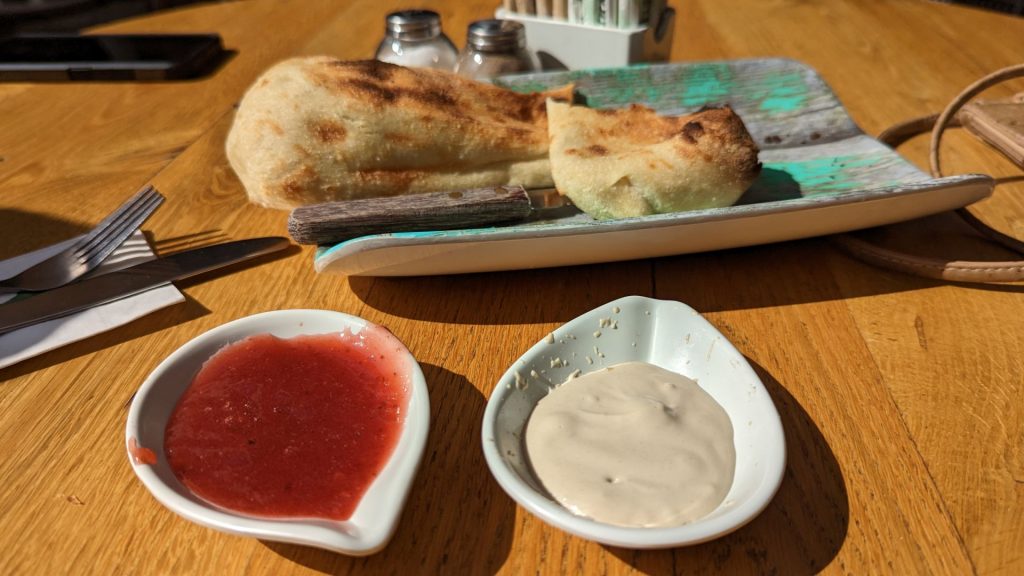
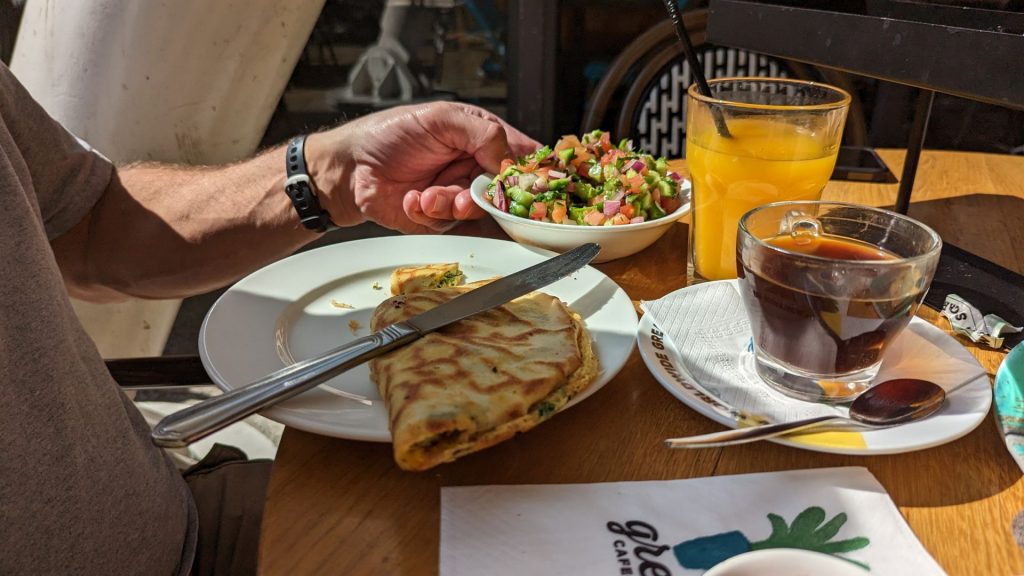
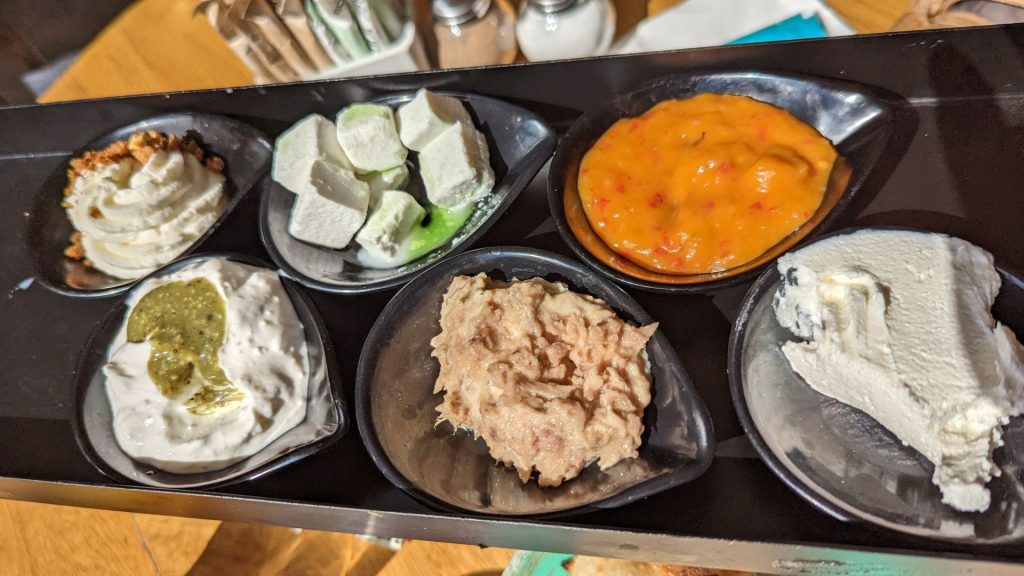
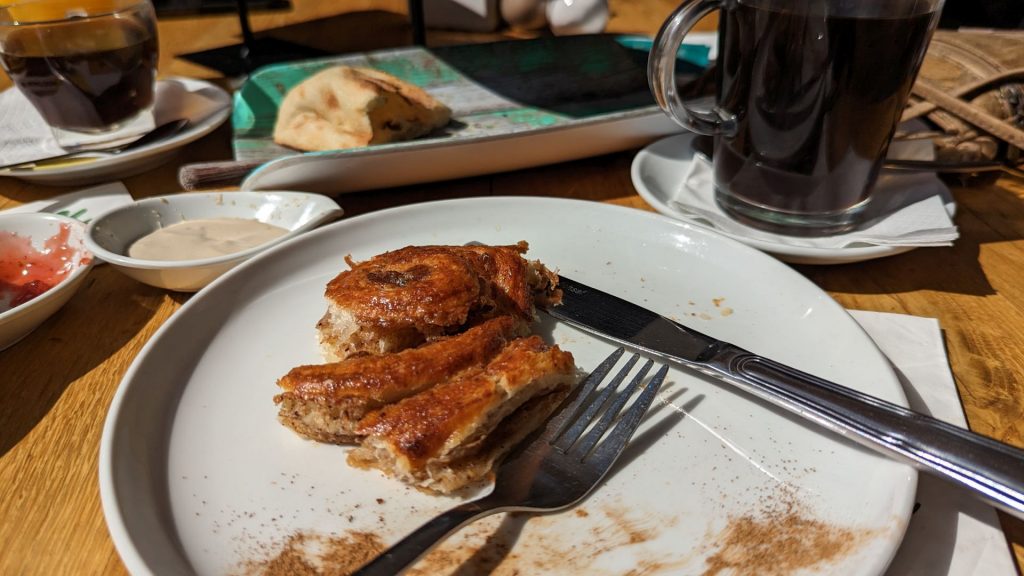
Thus fortified, we drove to Caesarea, arguably the last stop of our visit. (Although we ended up at Tel Aviv again and enjoyed the morning there before we drove to the airport).
We visited two things in Caesarea: Caesarea National Park and Aqueduct Beach. I want to highlight just a few things from the Park.
Caesarea, a Roman-era port city, was once a navy base, and was once the capital of the Roman province of Judaea more than 2,000 years ago. This ancient city was built by the Judean King Herod around the year 20 B.C. Herod decorated the city with majestic buildings, the Roman Amphitheater, the Hippodrome, the Palace, a Roman Temple and an amazing aqueduct which brought fresh water to the city from Mount Carmel to the north.
First, the theater. Caesarea’s rebuilt amphitheater is fully active today. It can seat 3,700 people and is one of Israel’s top venues for both Israeli and worldwide performers. Performing here is considered a major milestone by Israeli musicians.
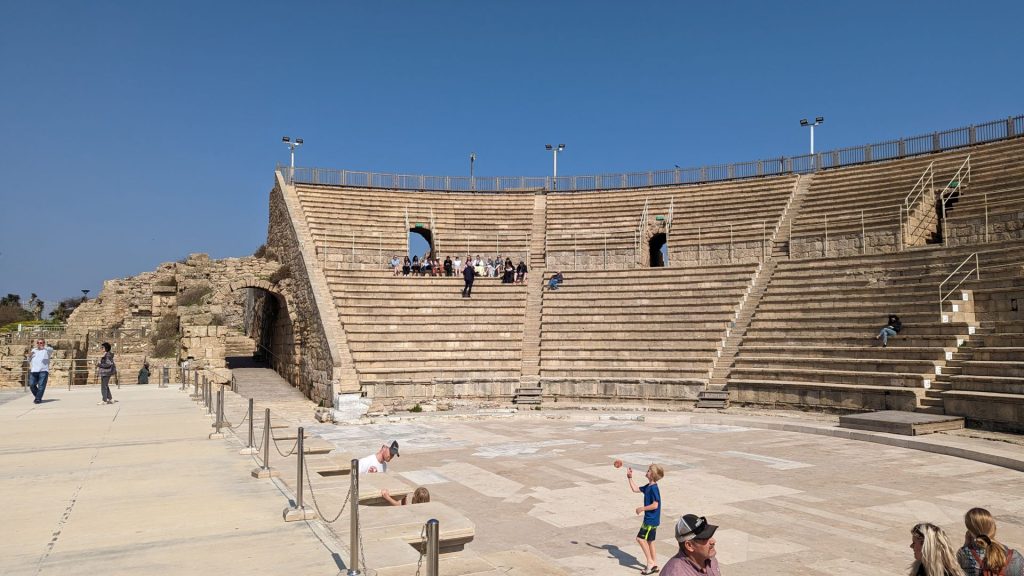
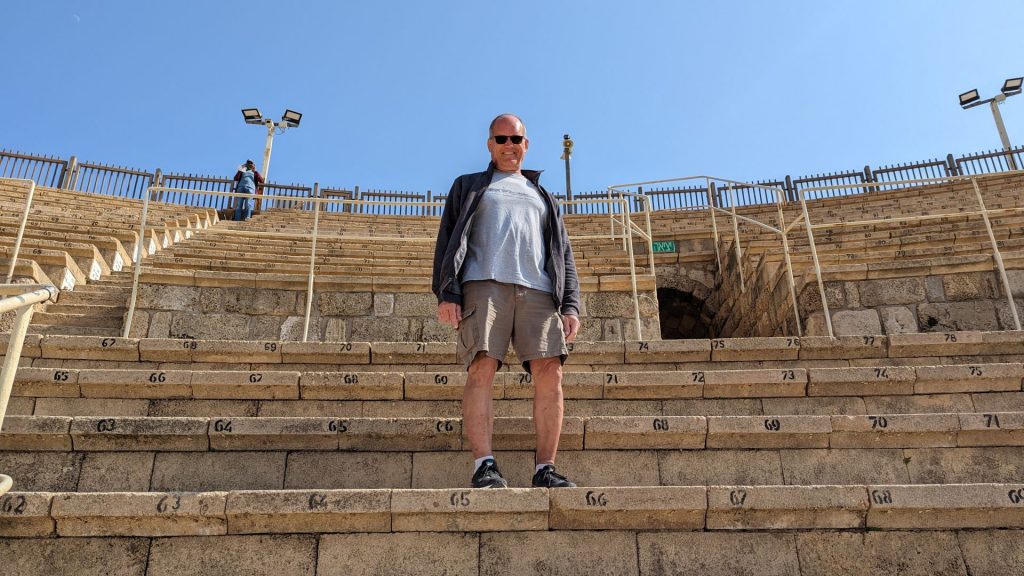
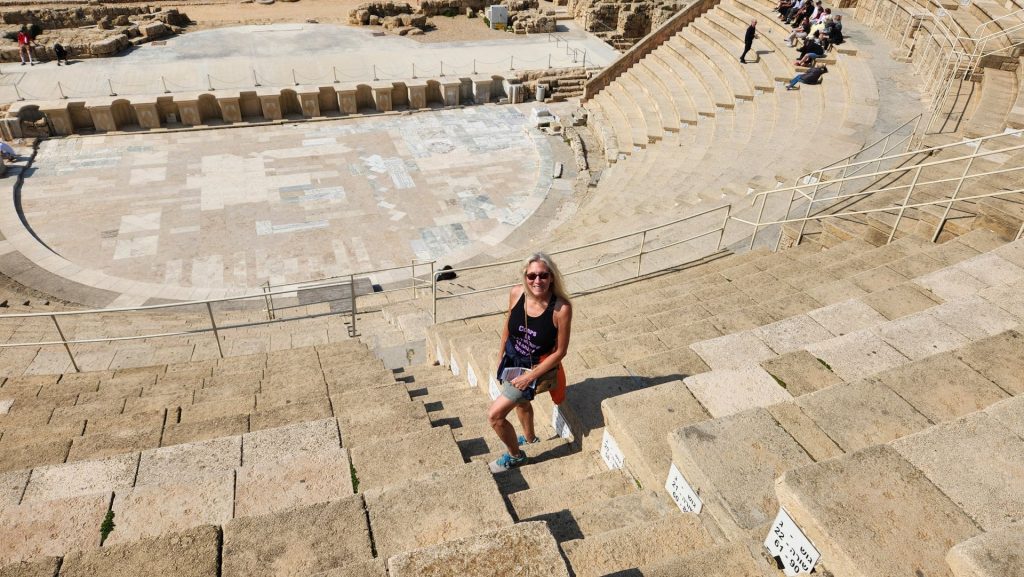
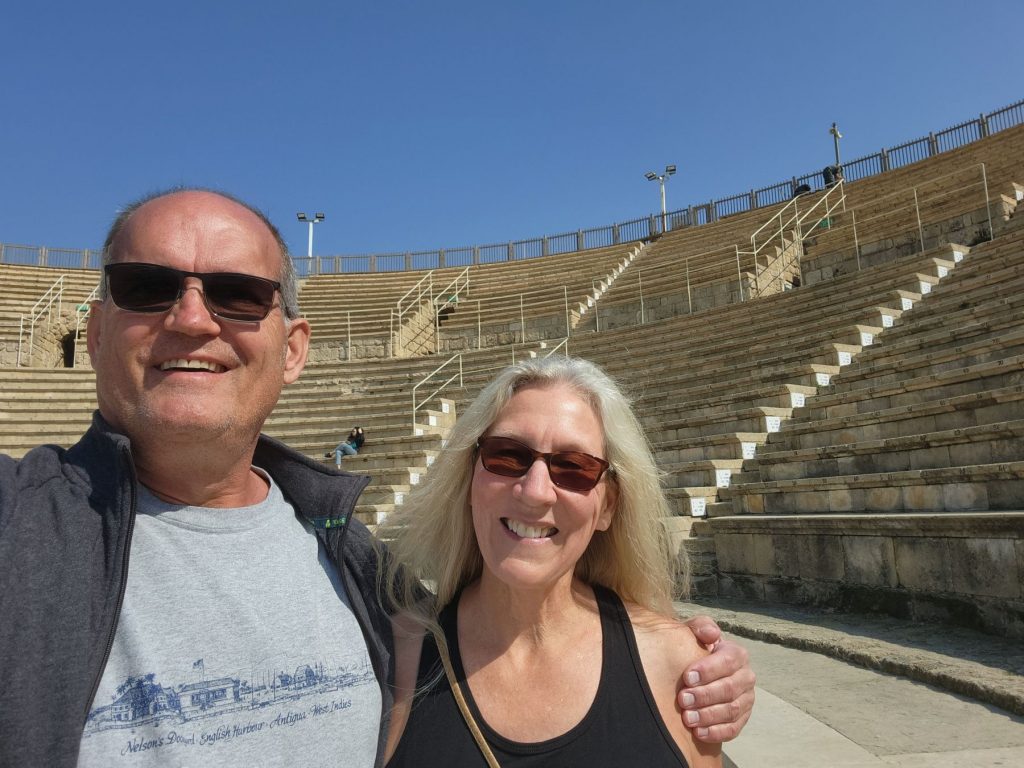
Near the theater is a peninsula protruding out into the sea. The remains of Herod’s palace are found here. Some of the remains:
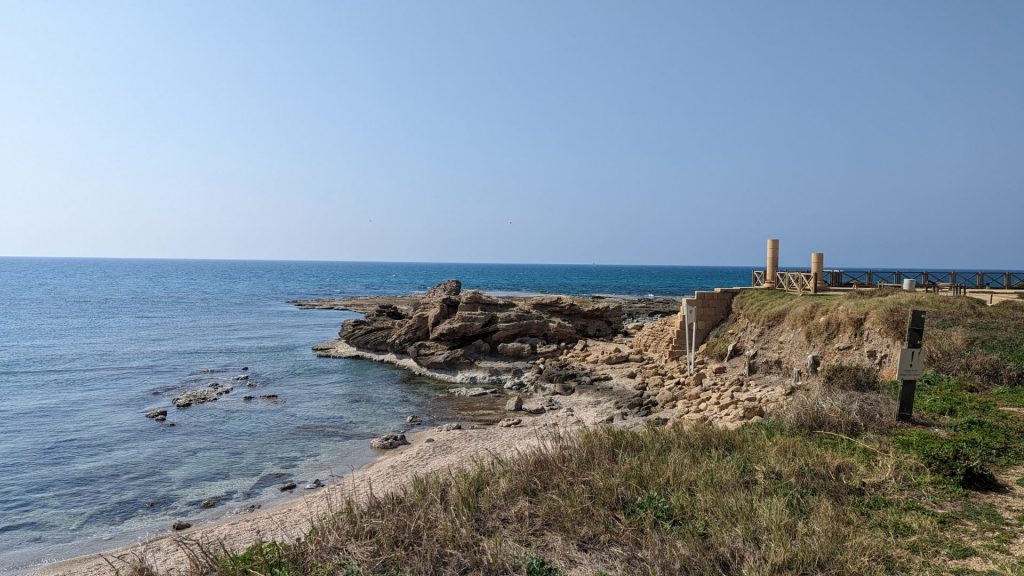
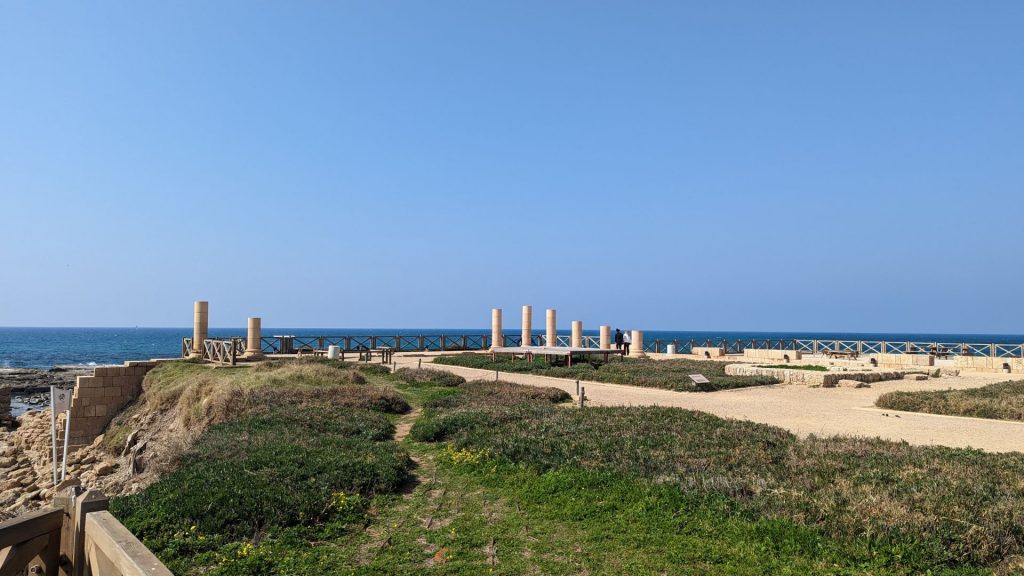
Northwards along the Promenade, you will see the Hippodrome built by Herod along the shoreline. The walls were covered in paintings of hunts and animals. Stone benches lined the way. Spectators would come to see gladiators, athletic competitions, music, horse racing and wild animal shows. The Hippodrome is in use today during holidays and festivals.
This was one of my favorite sites at the Park because of what it was used for: horse and chariot races, athletics, gladiatorial combat, and hunting games. The chariot races, in particular, are of interest to me. The chariots dashed out of the starting gates (carceres), going counterclockwise on a seven-lap race. The finish line was in front of the officials’ tribune. The sharp curve at the turning posts at each end of the track posed a major challenge for the charioteers and horses.
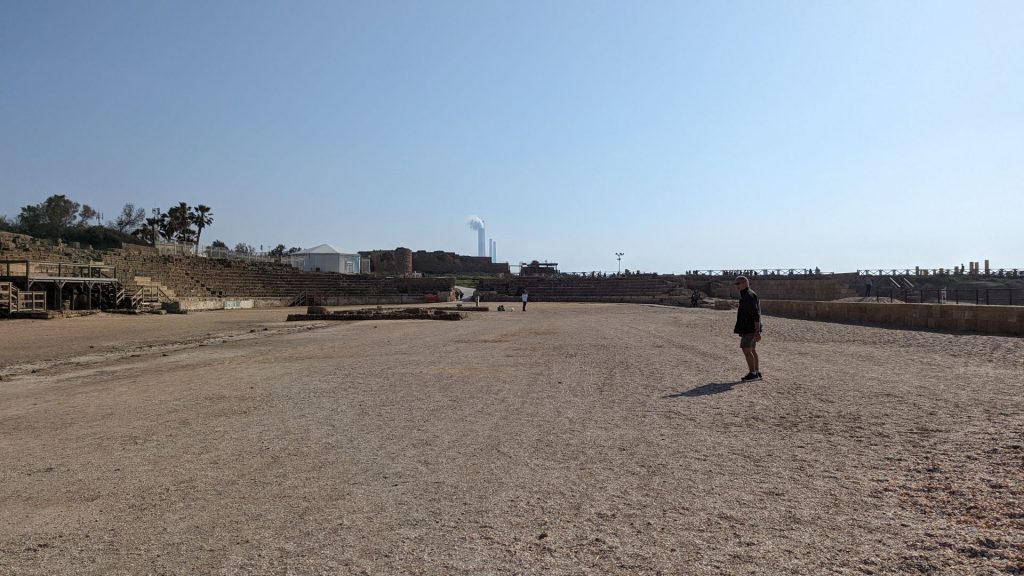
The “floor” of the hippodrome was primarily dirt or sand, but one section had a lot of pretty little shells.
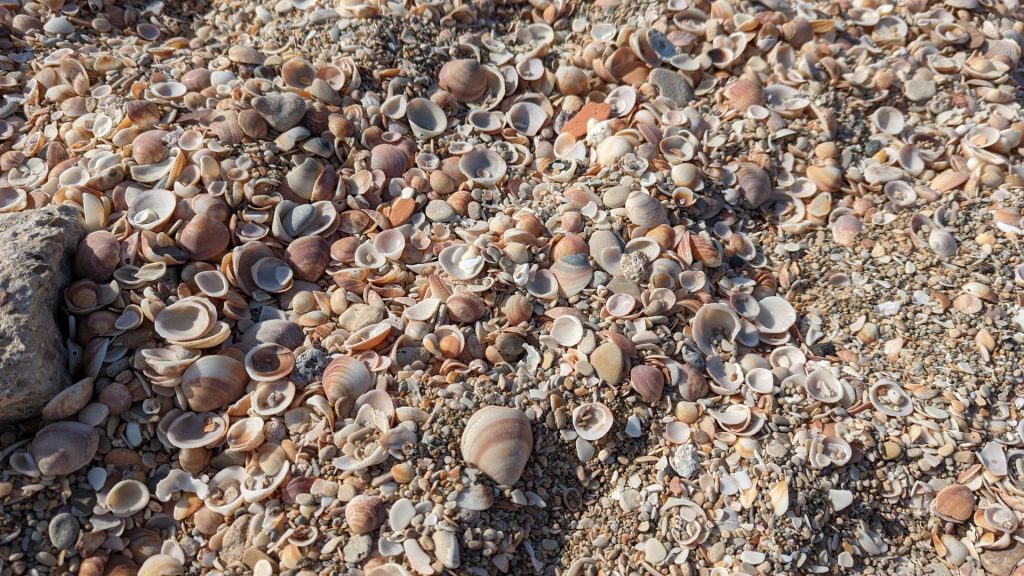
These are the public latrines. Just sayin’.
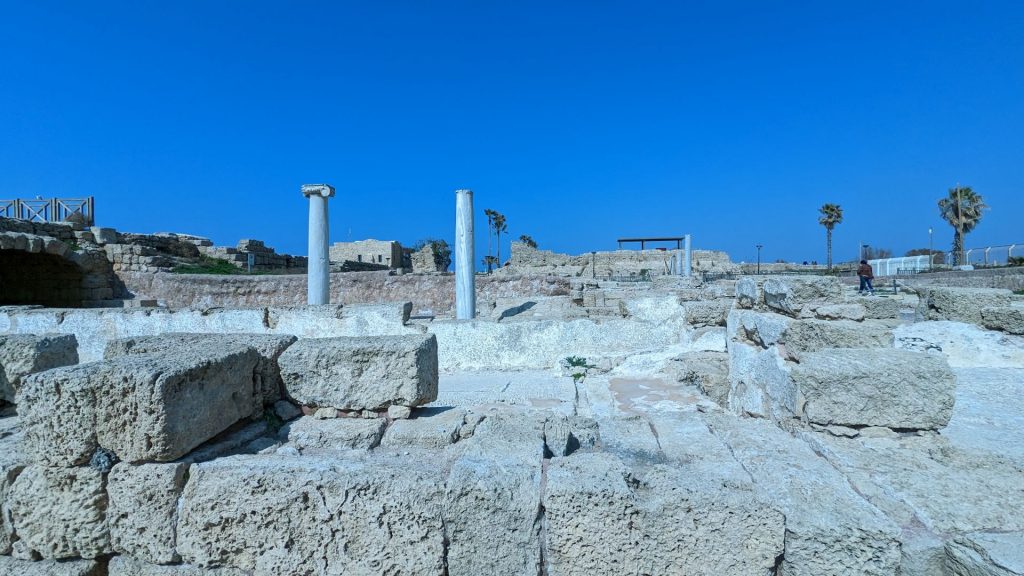
The picture below is of the governor’s palace baths. Nice.
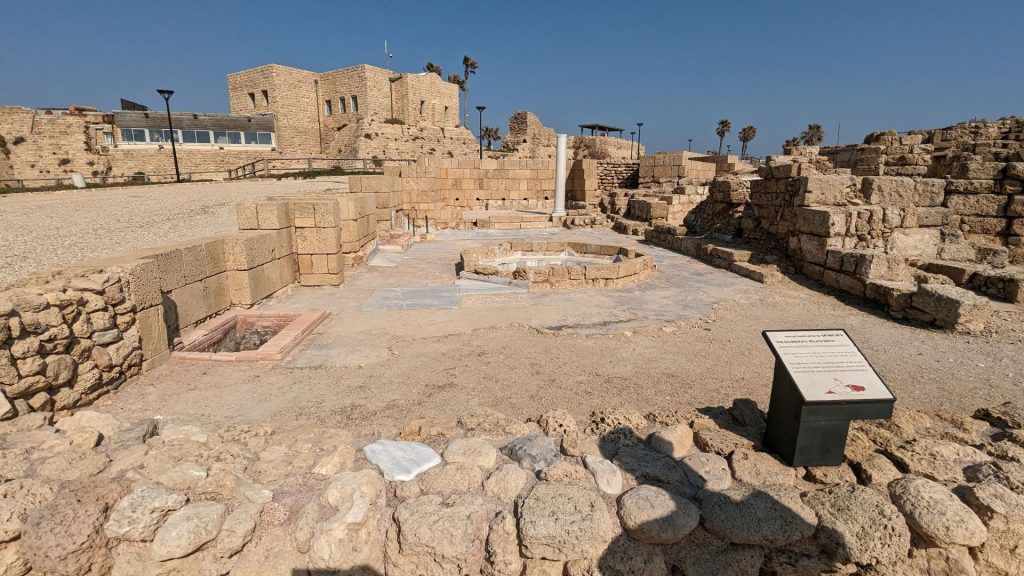
Our next and final stop in Caesarea was to Aqueduct Beach. This is where one finds this amazing surviving ancient structure. The Caesarea Aqueduct carried water to the old city for over a thousand years. Although it no longer serves its original purpose it forms a stunning and unique backdrop to the beach.
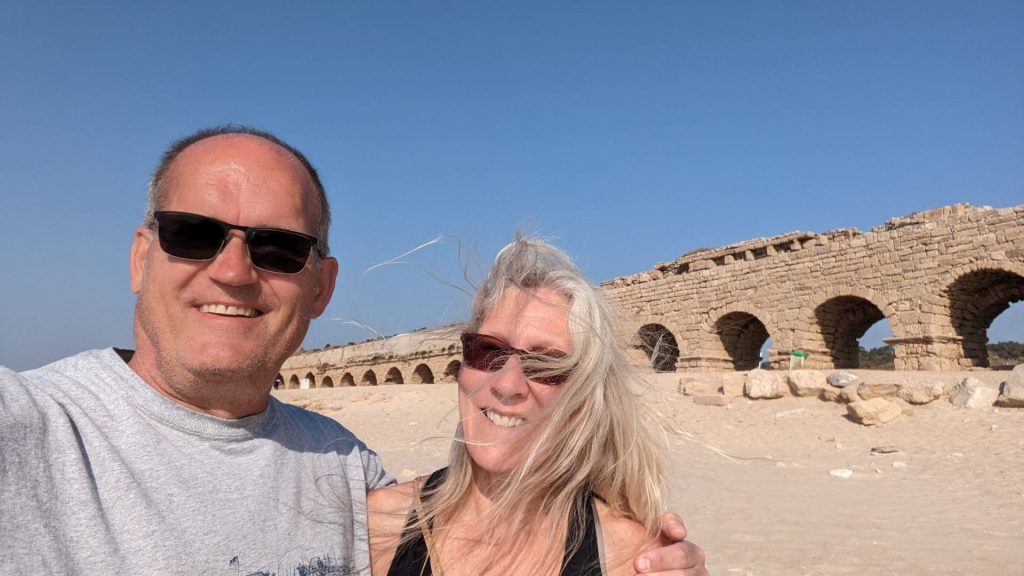
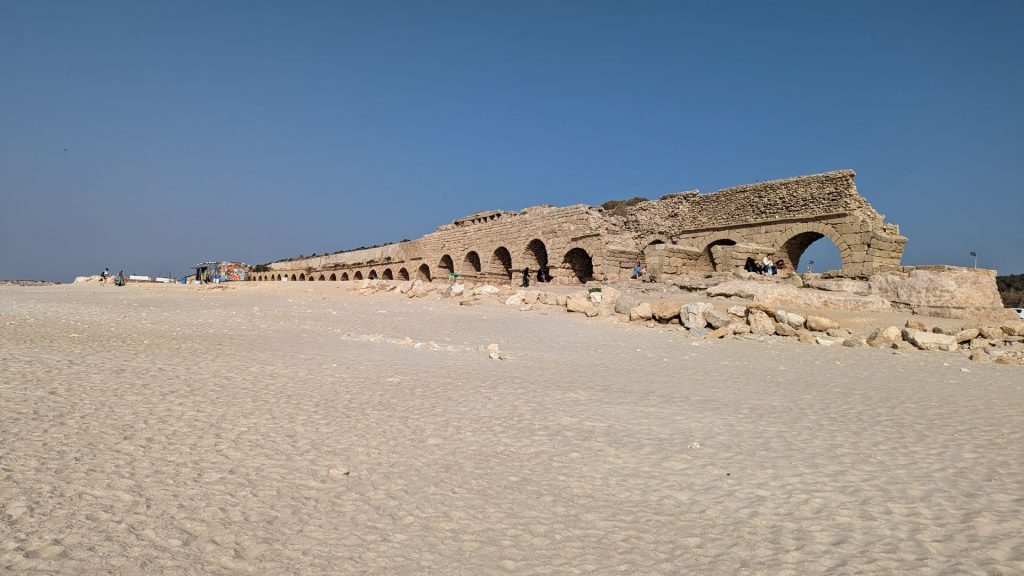
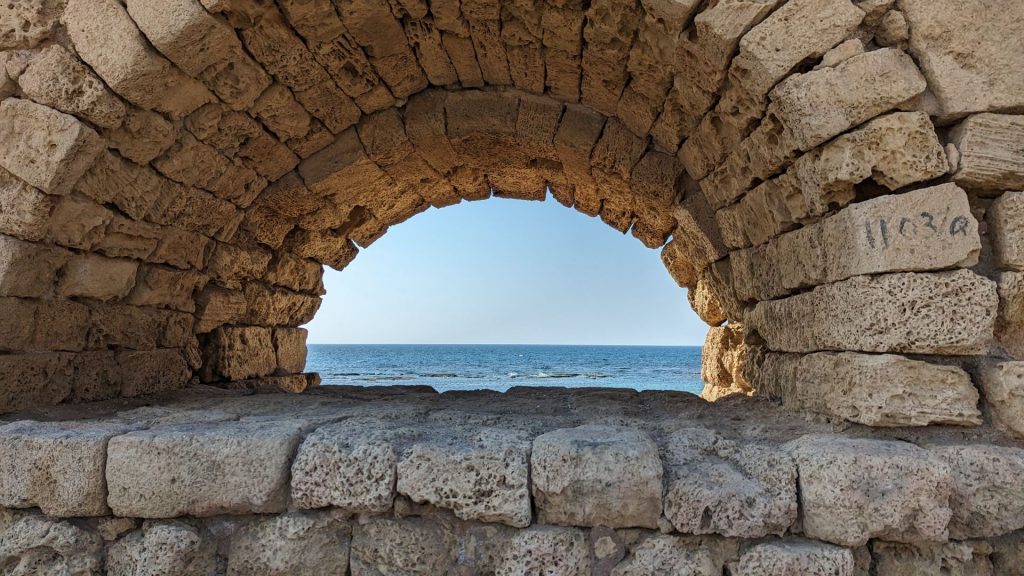
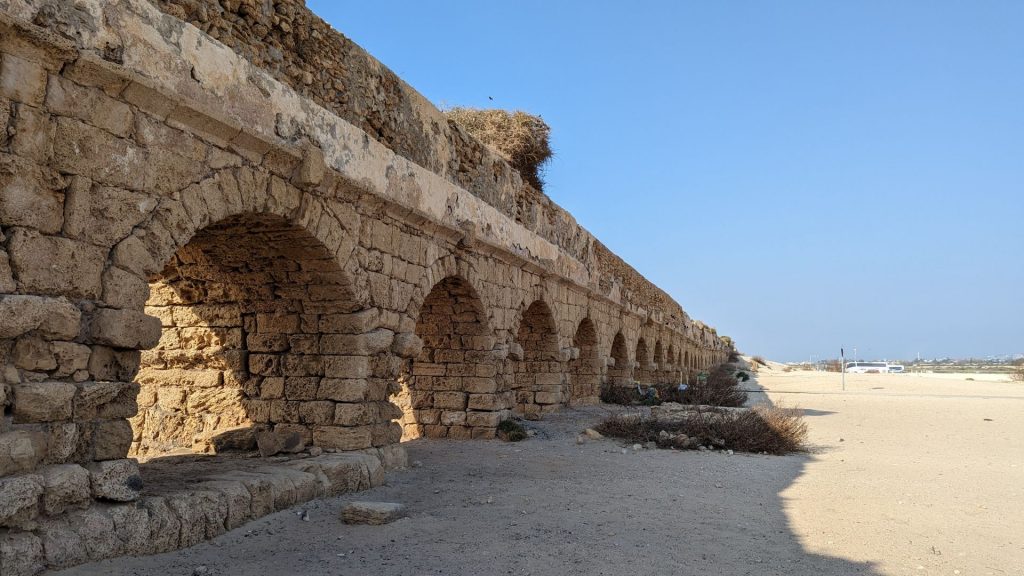
Our last night in Israel was back in Tel Aviv in another hostel. It was nice and had a great location: right across from the beach.
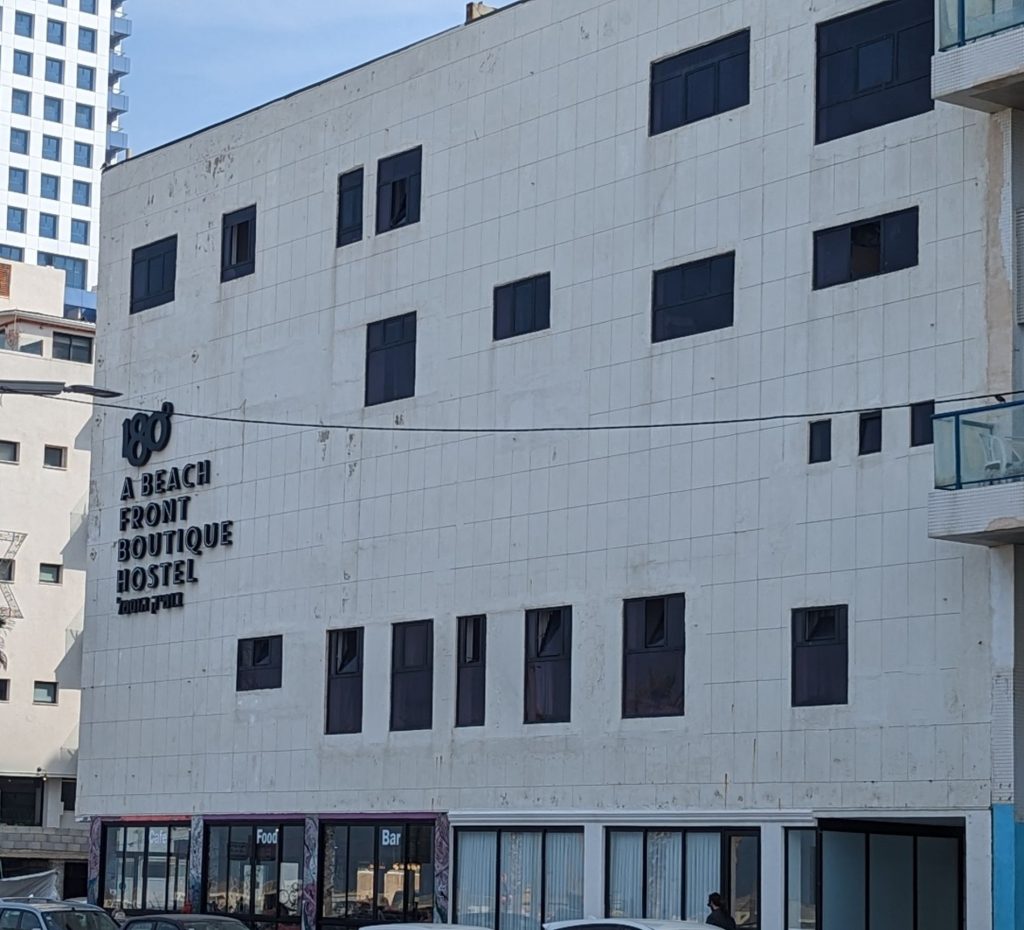
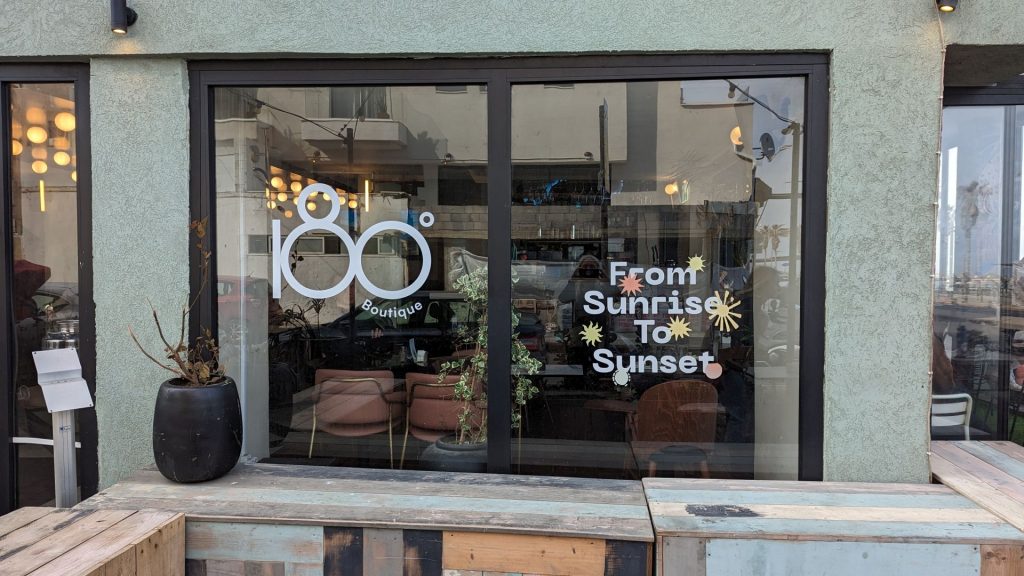
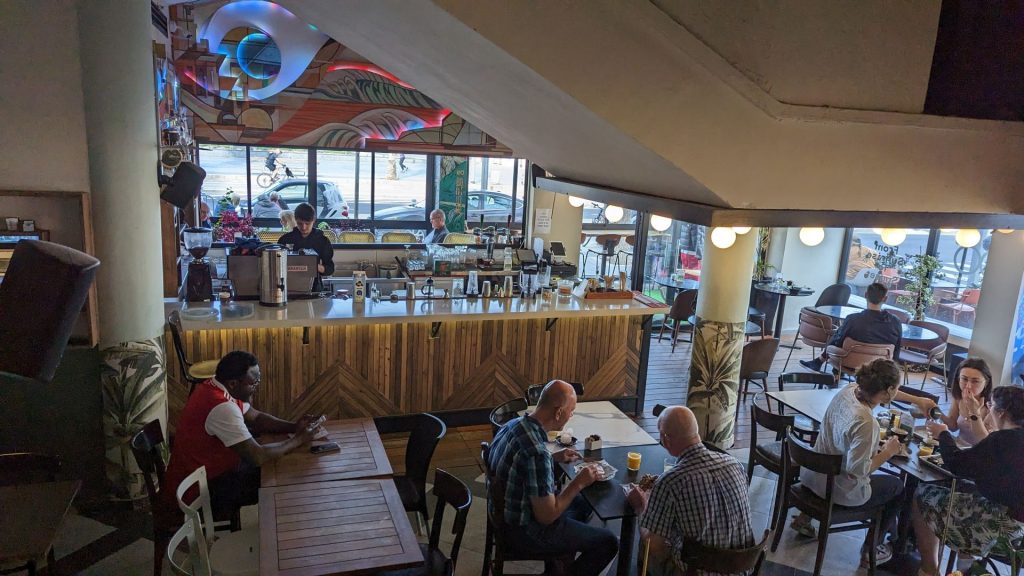
We would have the morning to walk along the beach, so we did just that. First, coffee. . .
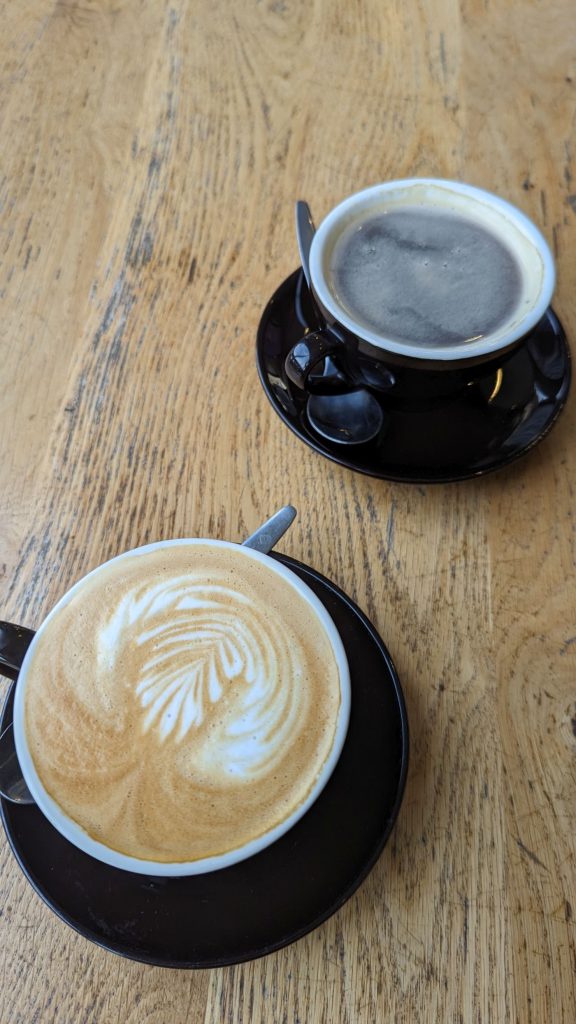
We’d been told that Tel Aviv was a city that supports activity. The promenade along the beach certainly supports that statement. I walked along it for about an hour and saw more people out for a run than I’ve seen in any city. The city also provides little workout areas for those who want to do a little bit of weightlifting.
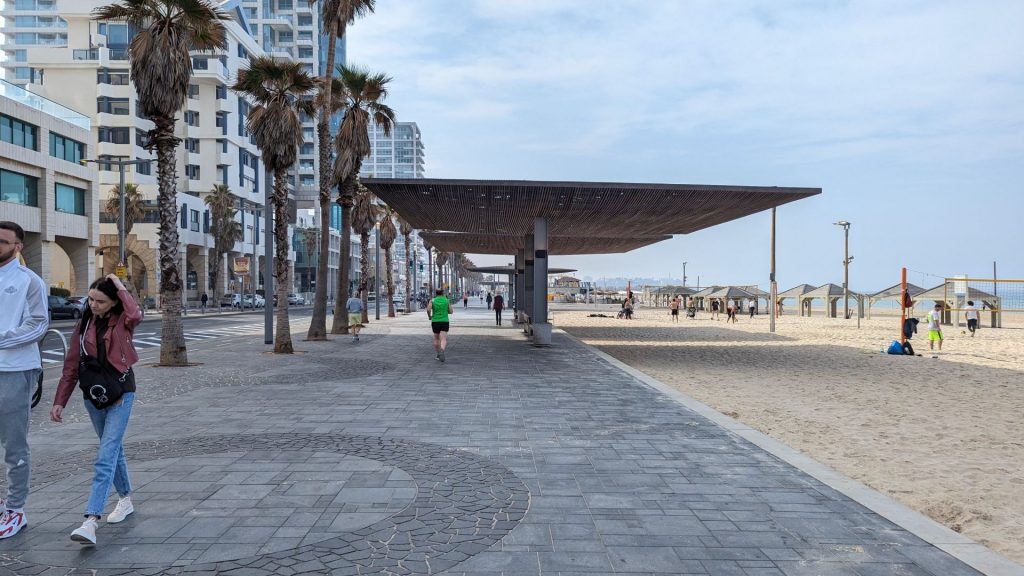
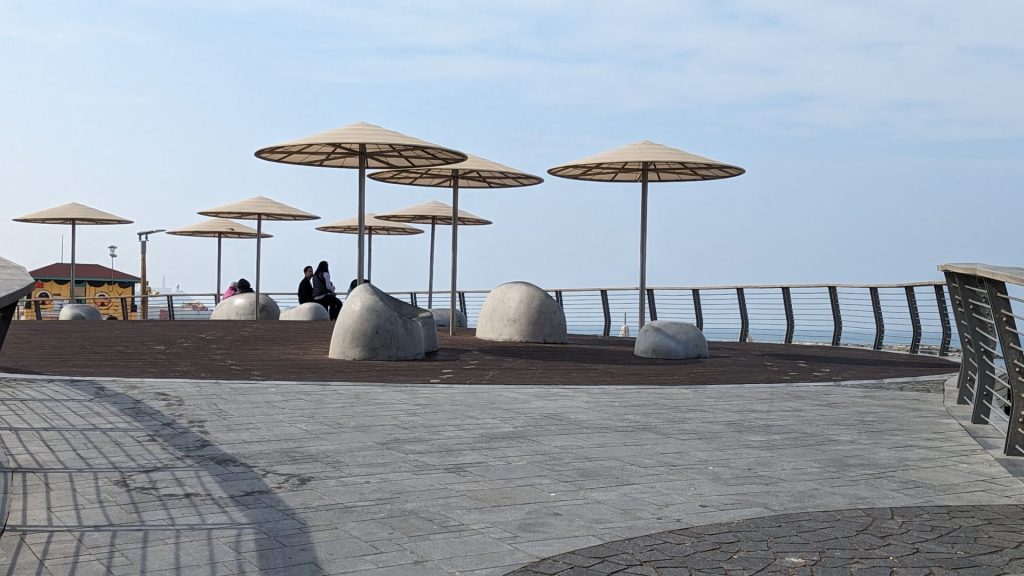
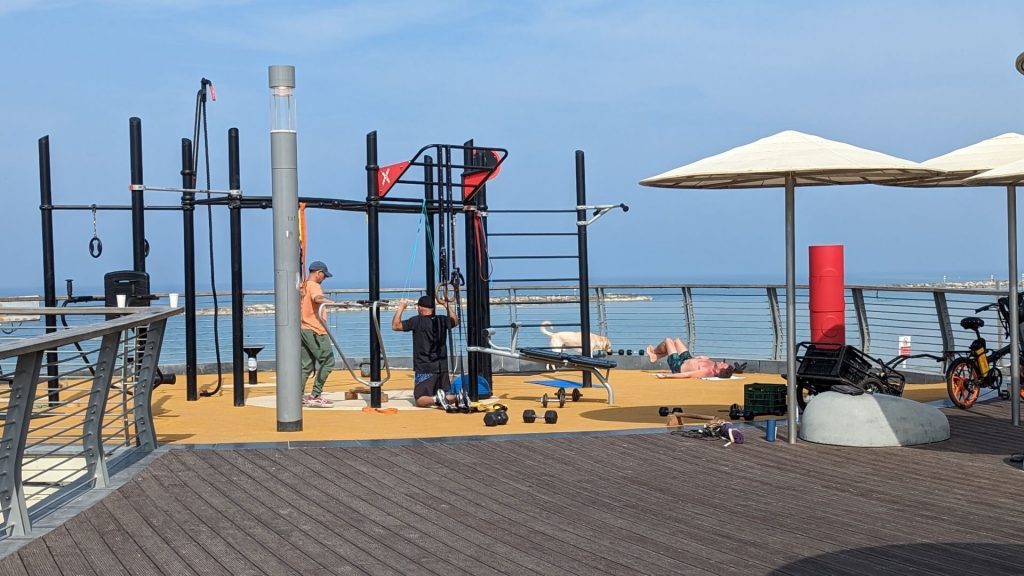
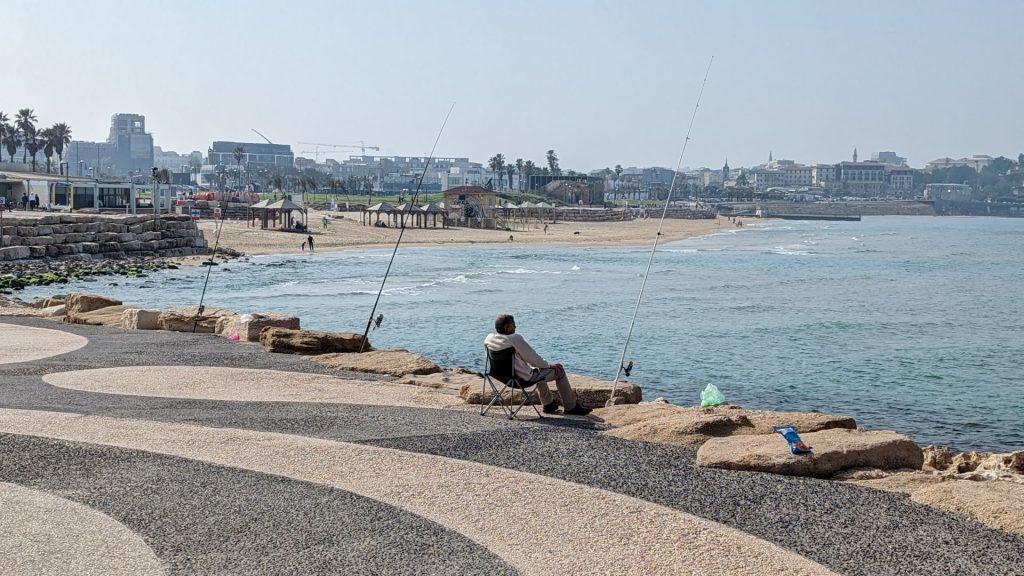
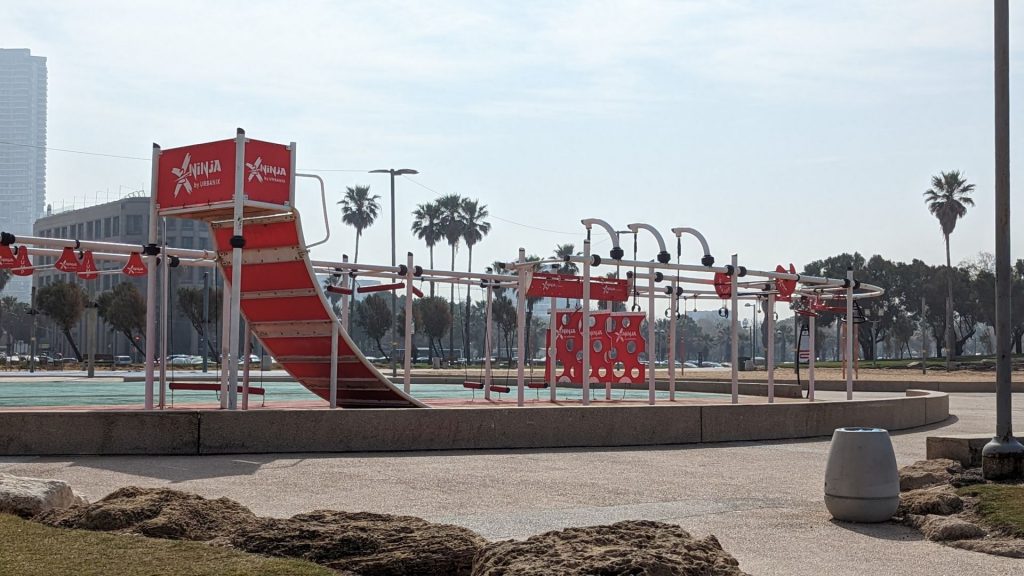
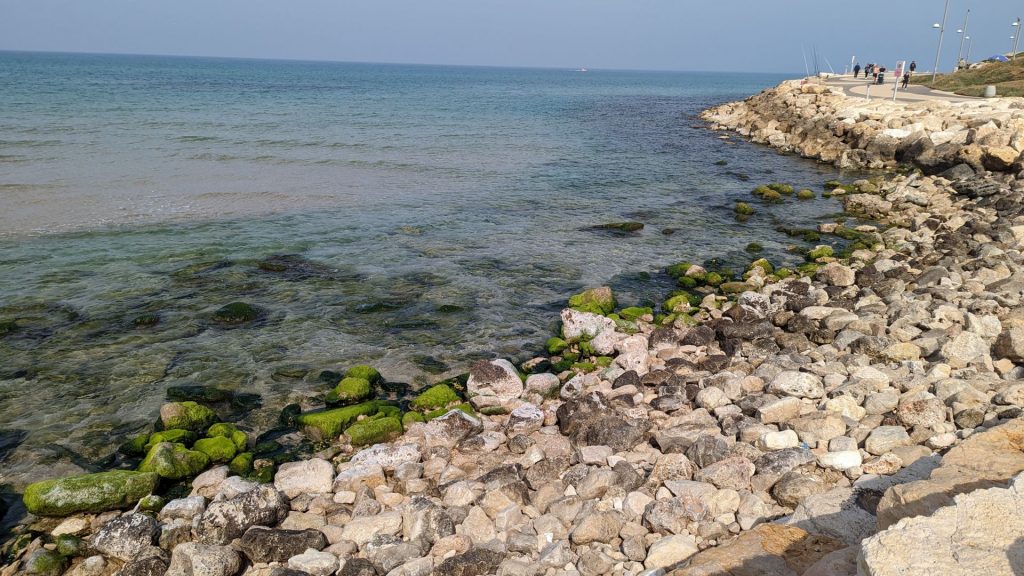
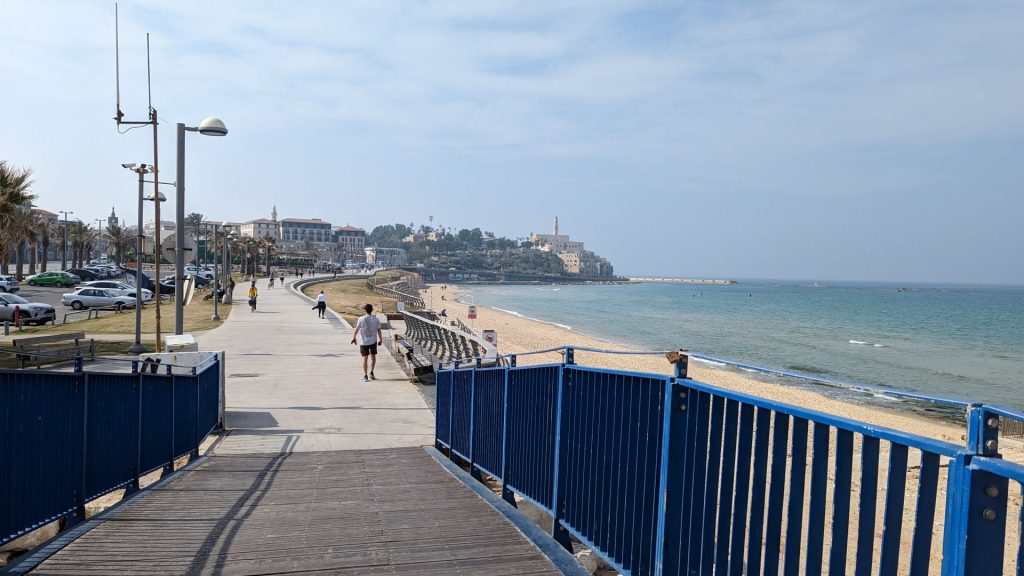
I even saw a guy dressed in a suit riding a scooter.
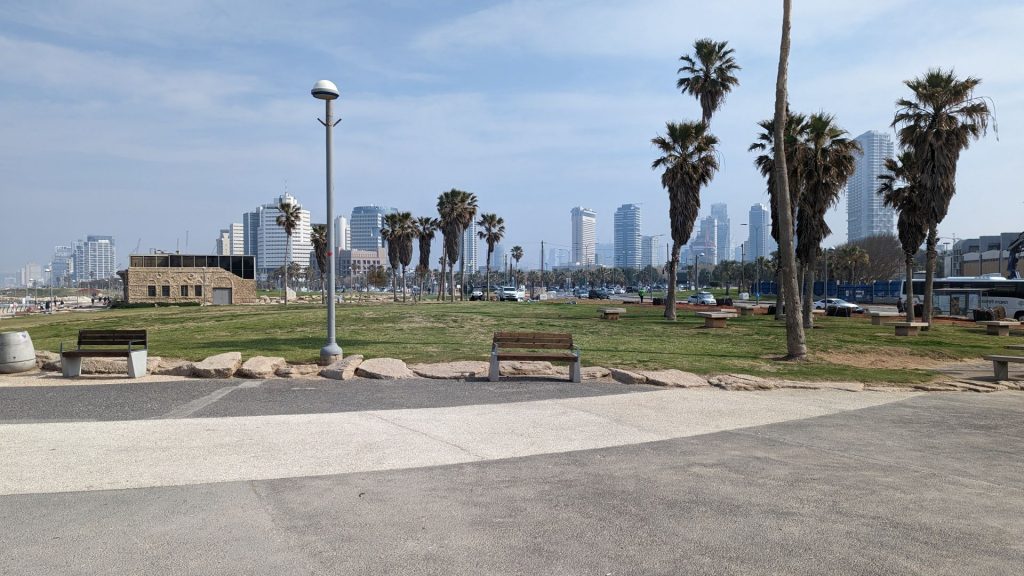
That’s it! I am going to leave you with this parting thought. You know what American TV show is popular in Israel? South Park. 🙂 🙂

Looks like an amazing few days! Thanks for sharing your journey!